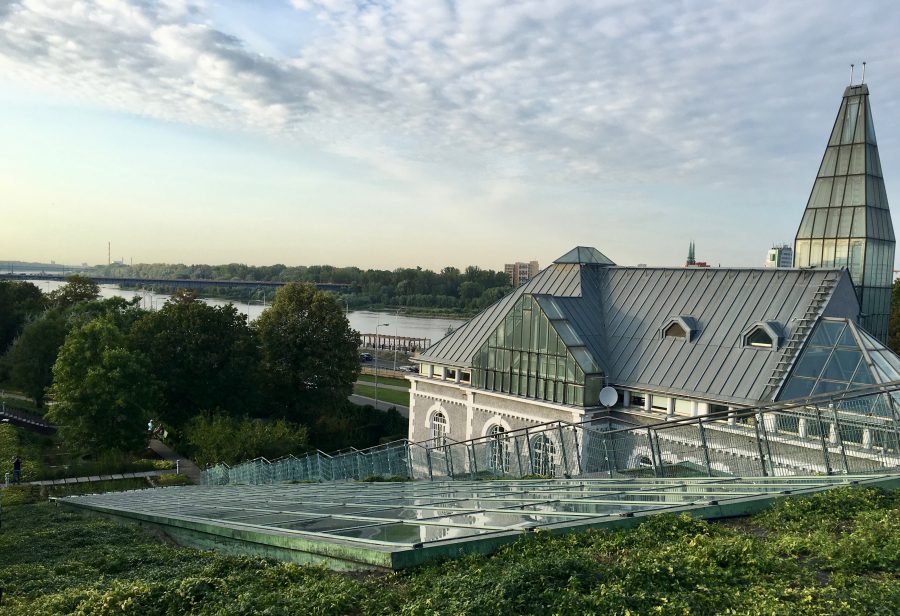As first impressions go, my lunch at Alewino said a lot about my time in Warsaw: stylish venue, superb bread and surprisingly good Polish wines.
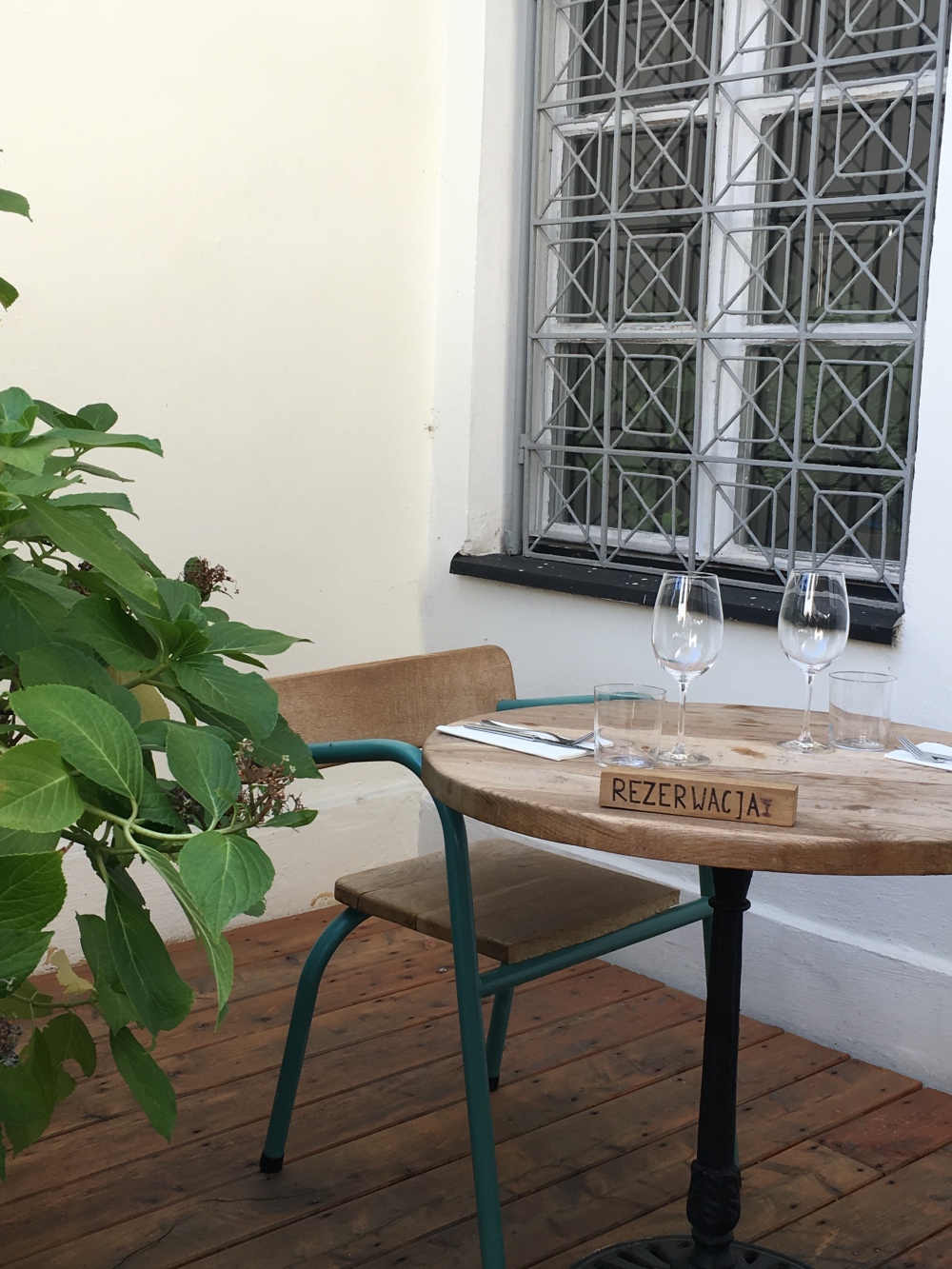
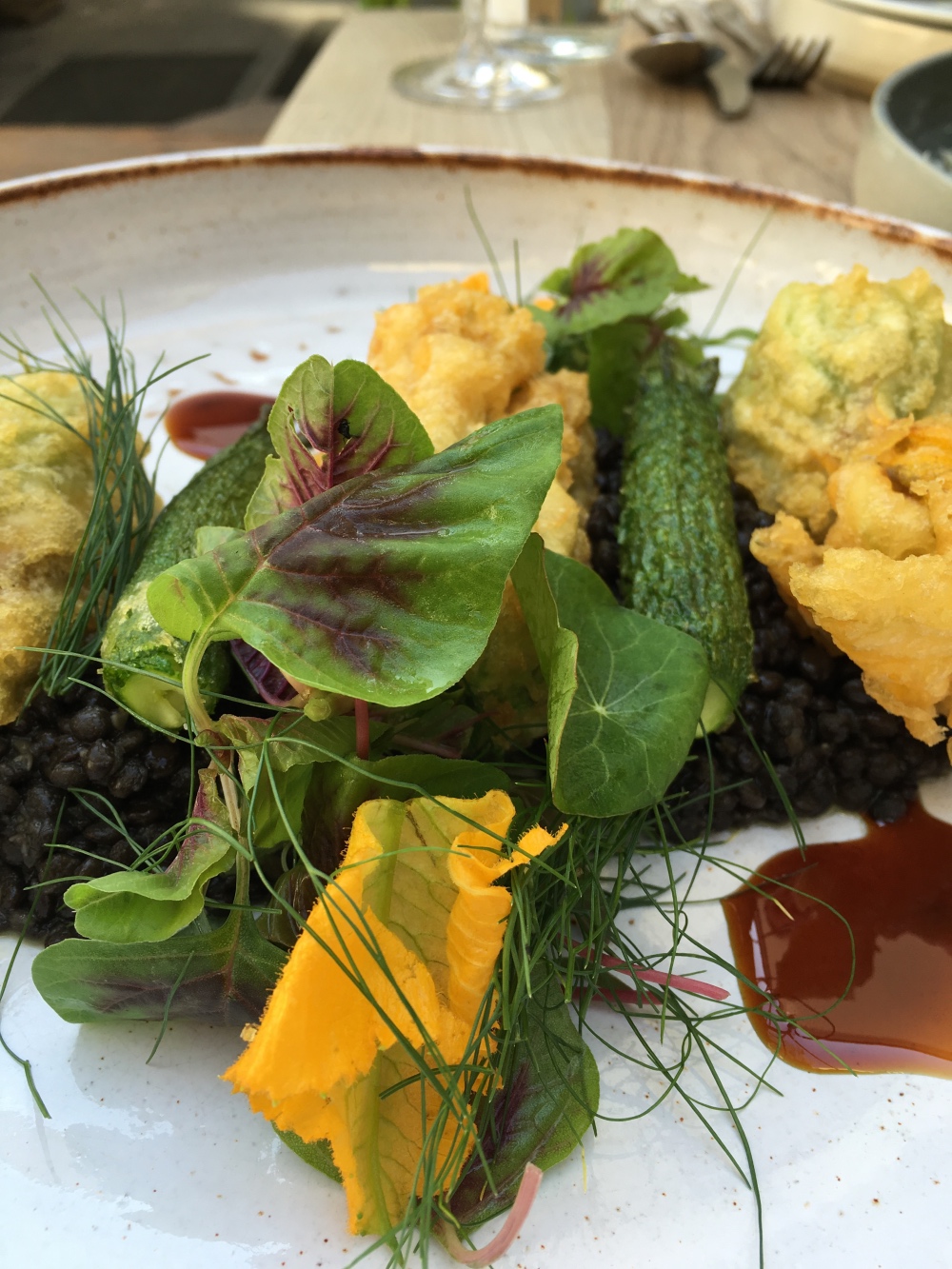
I’d arrived on a bright, hot day, and met up with Malgorzata Minta (see @mintaeats on Instagram) who proudly introduced her vibrant capital city. Strolling, we talked about the buildings and shops we passed, before stopping at an unpromising gated entrance for lunch. No cause for alarm. I’ve shared enough meals with Minta to have faith in her choice and sure enough, the relaxed, sunny courtyard of Alewino (which means ‘What a Wine!’) was the perfect place for an introduction to food and wine in Warsaw. Over excellent homemade linseed bread, and a Polish chardonnay from Winnice Wzgórz Trzebnickich (citrusy and not at all buttery, which apparently is typical of Polish chardonnays), Minta explained the menu.
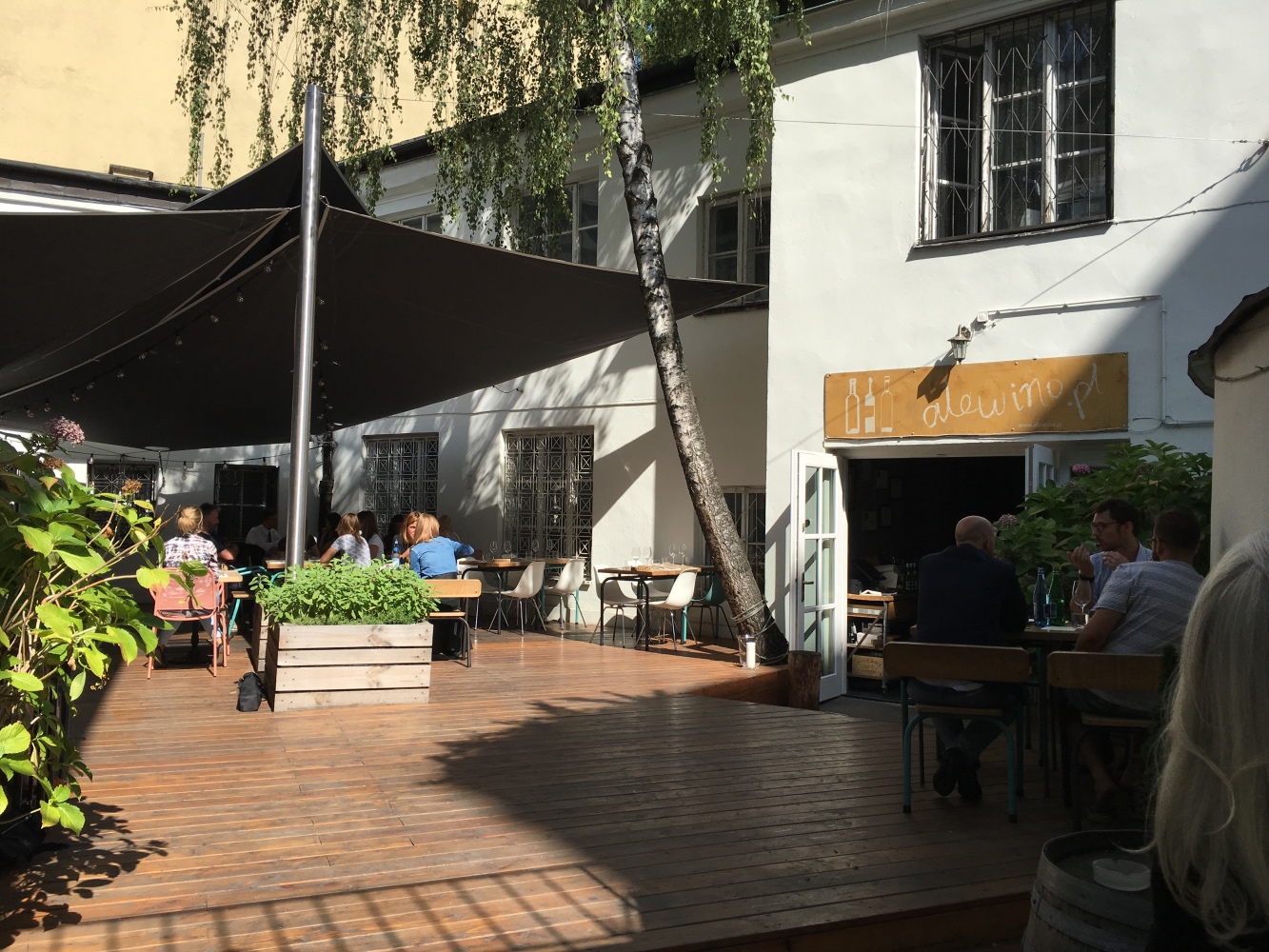
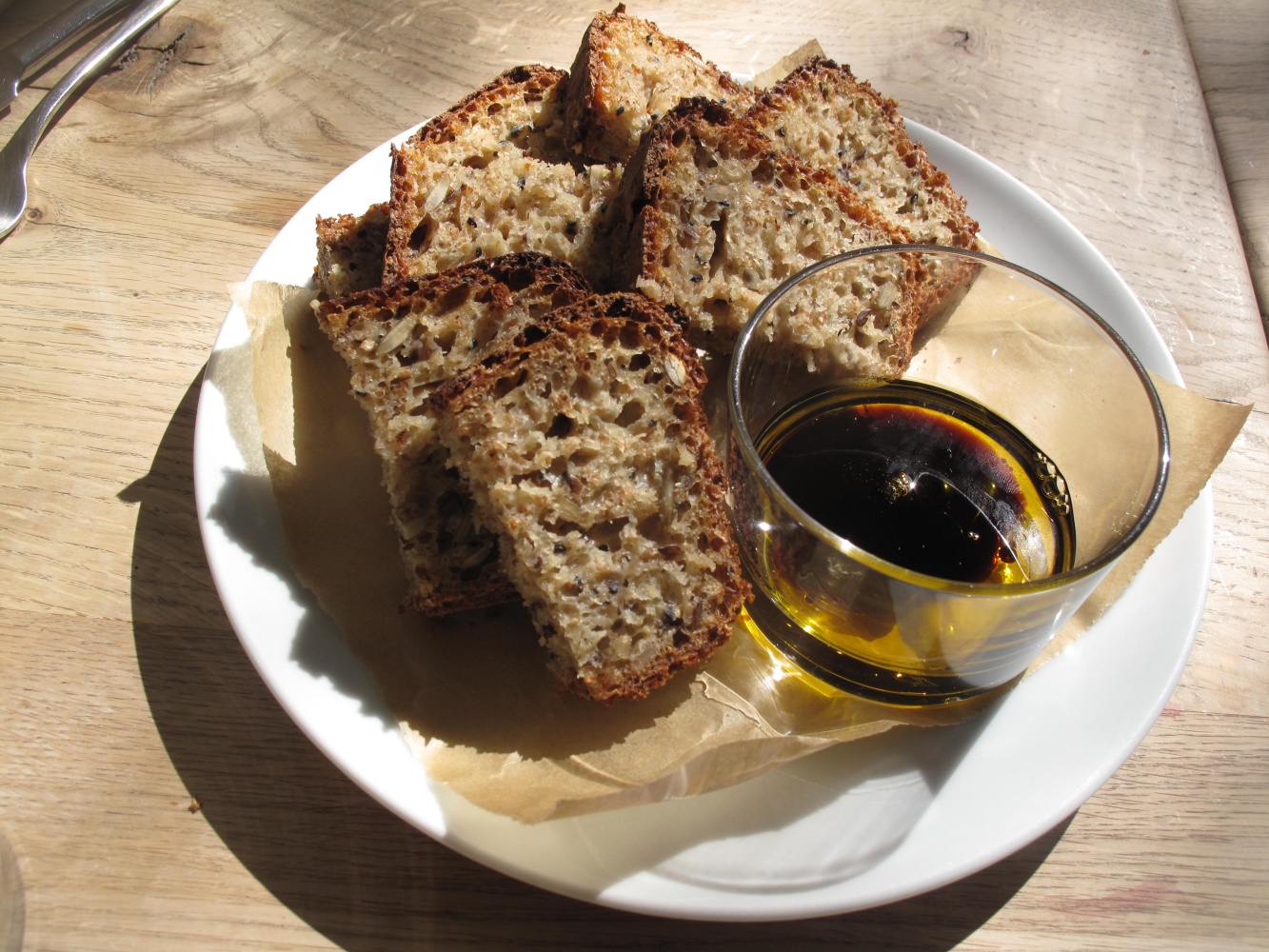
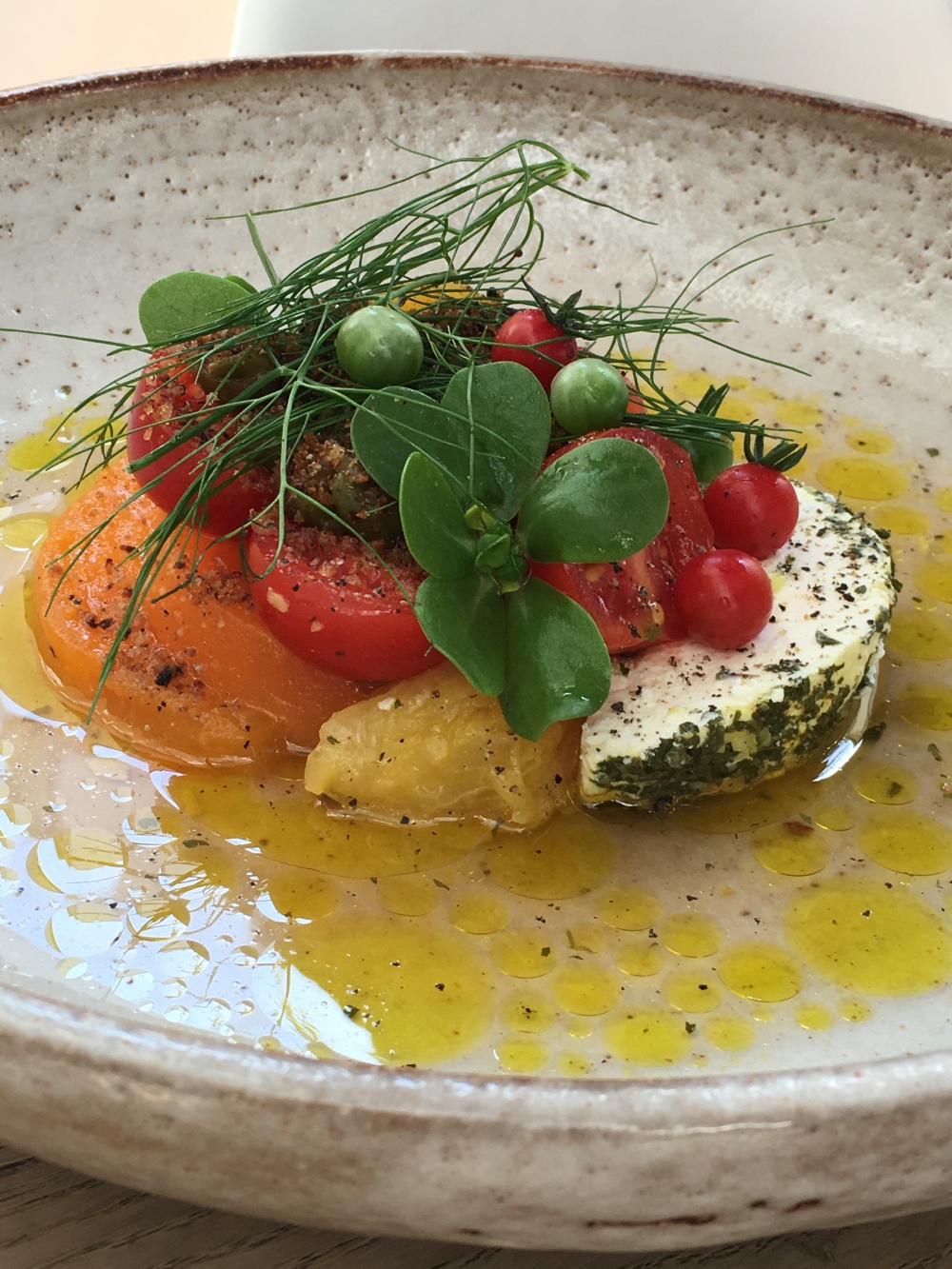
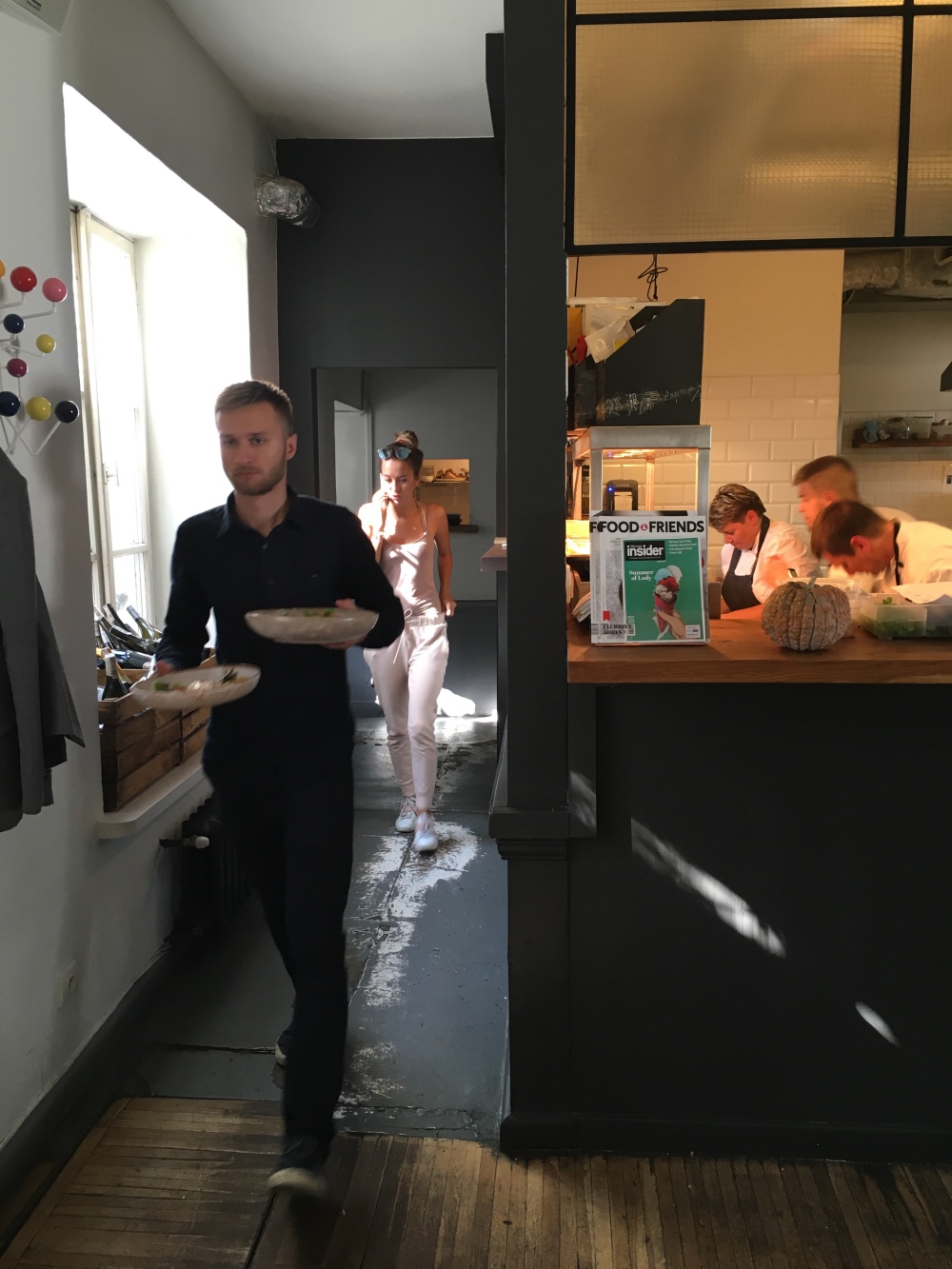
She suggested a dish of tomatoes, with a goat's cheese called Sonata and capers, and then stuffed courgette flowers with an exquisite aubergine purée, and black lentils with a hint of ginger. So far, so very good. What a wine? What a great start.
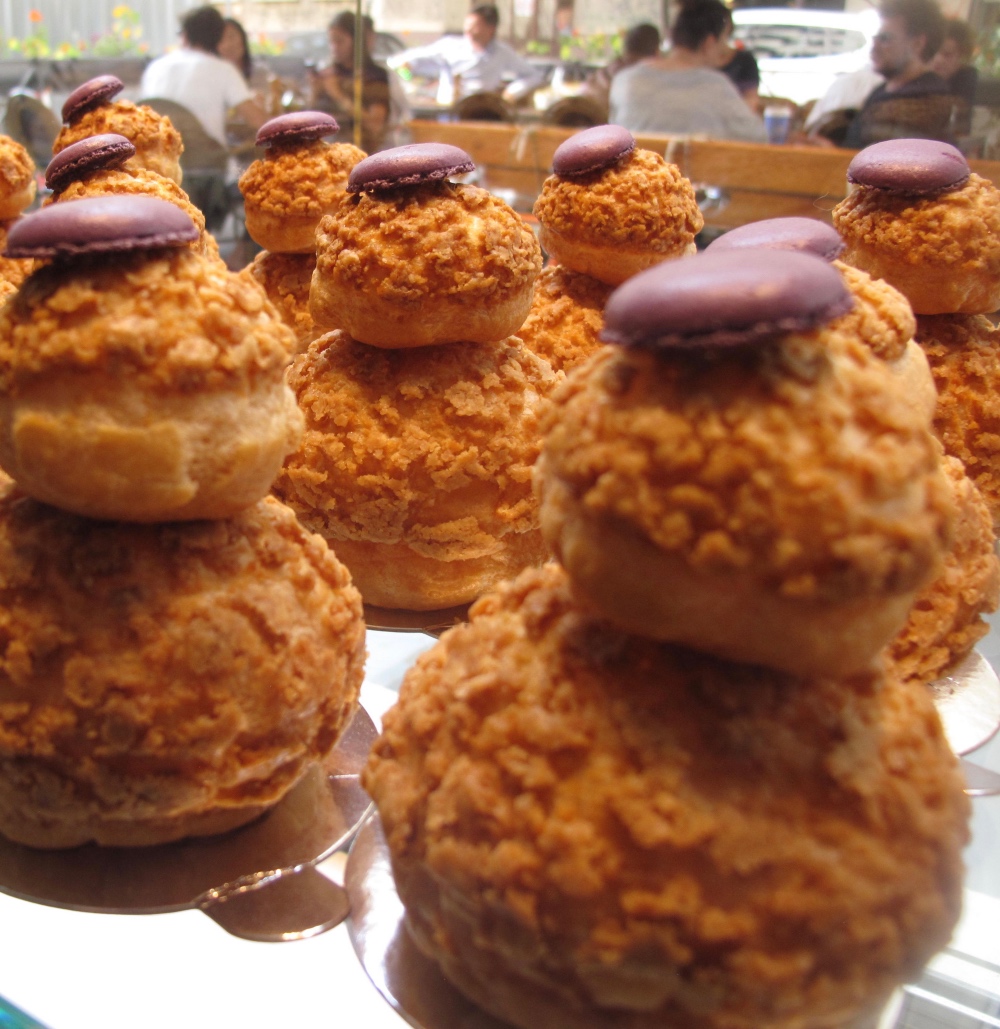
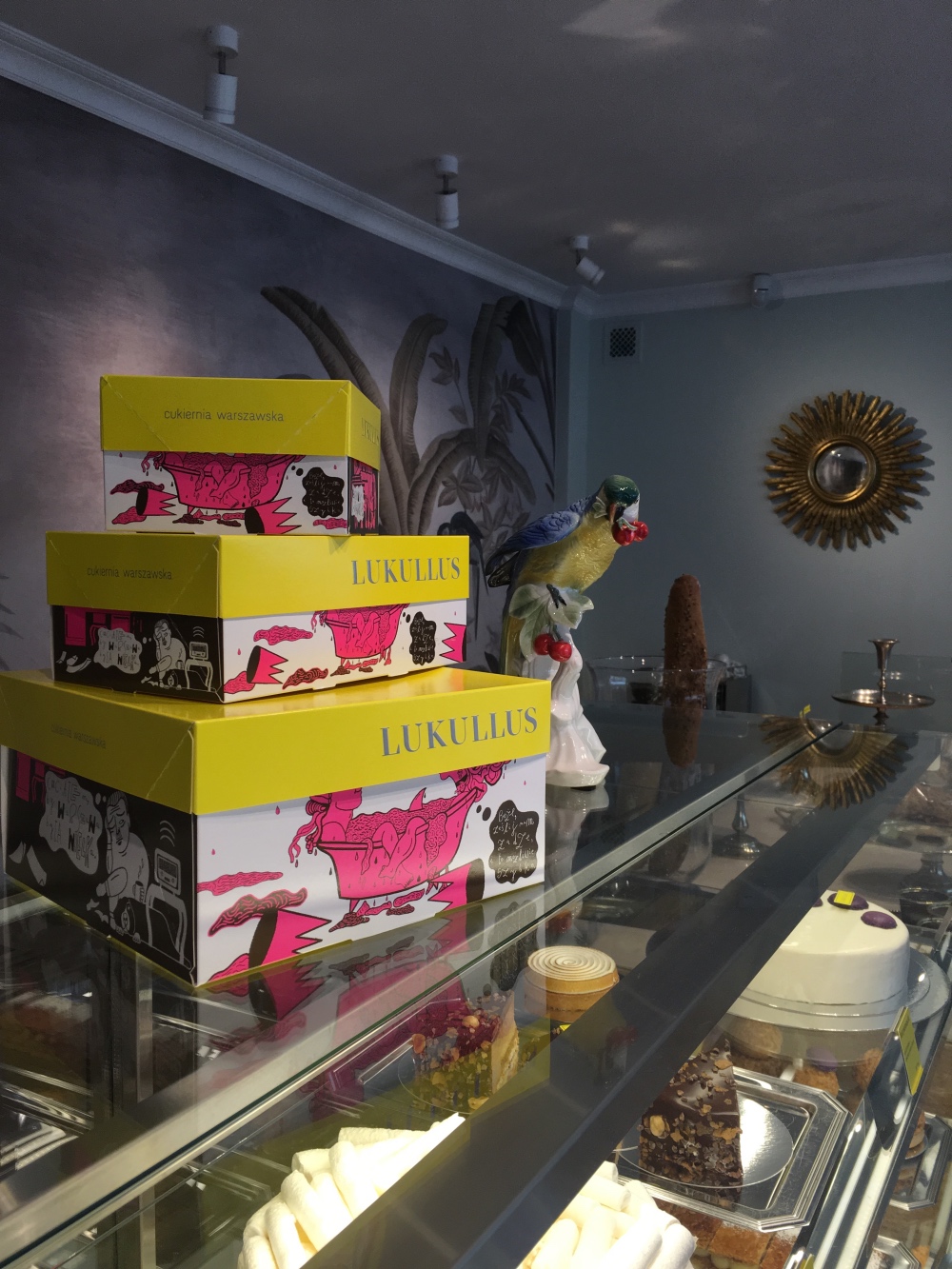
A short walk along the road from Alewino is a branch of the patisserie Lukullus. Coffee and cakes are served inside or on a small, terrace which extends out on to the street. Look out for the bigotka (which is Polish for ‘bigot’ and a twist on the French religieuse), with wild bilberries and cream. The patisserie changes its beautiful cake boxes and packaging every few months, and they always include quotes about Warsaw.
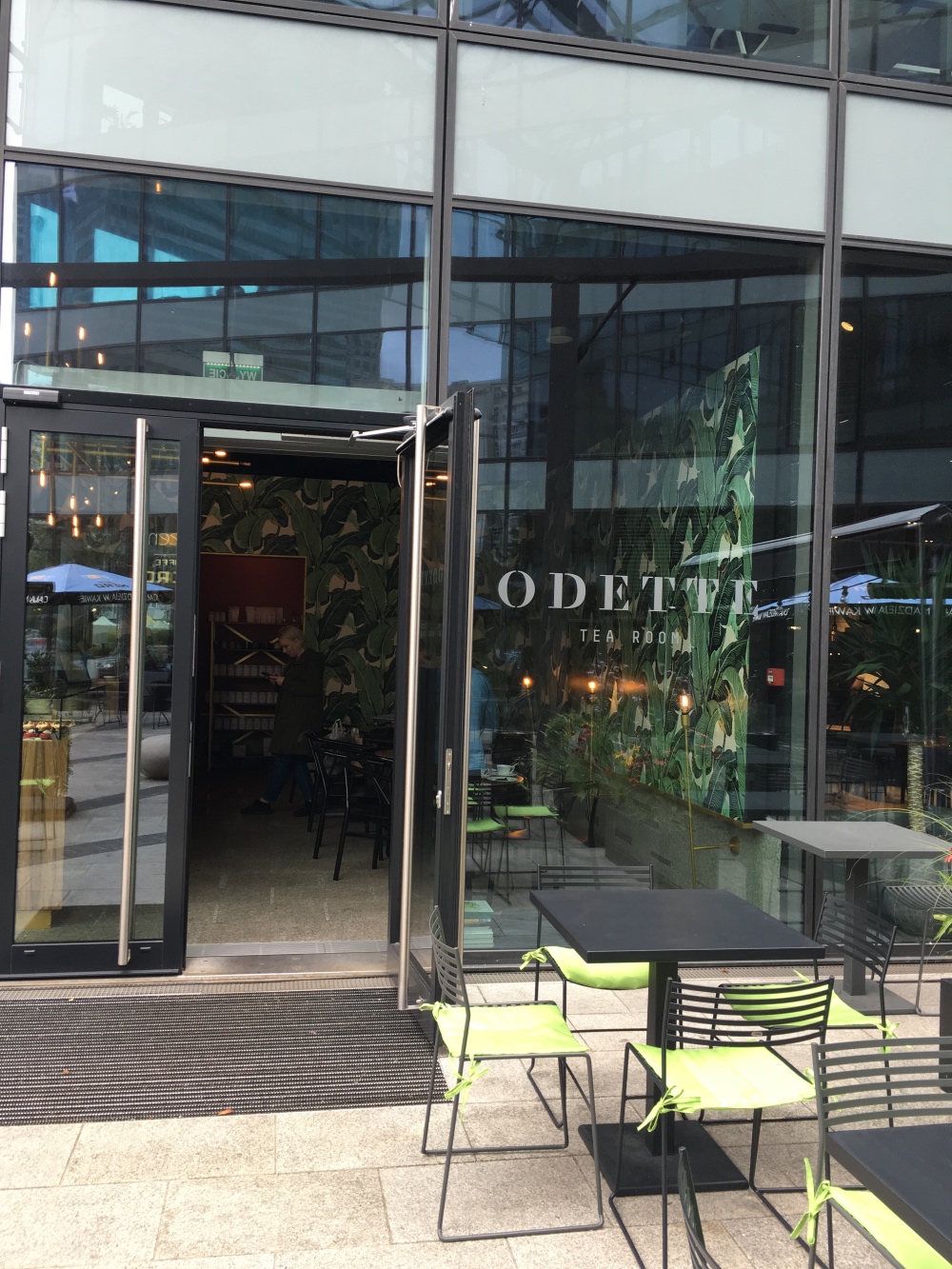
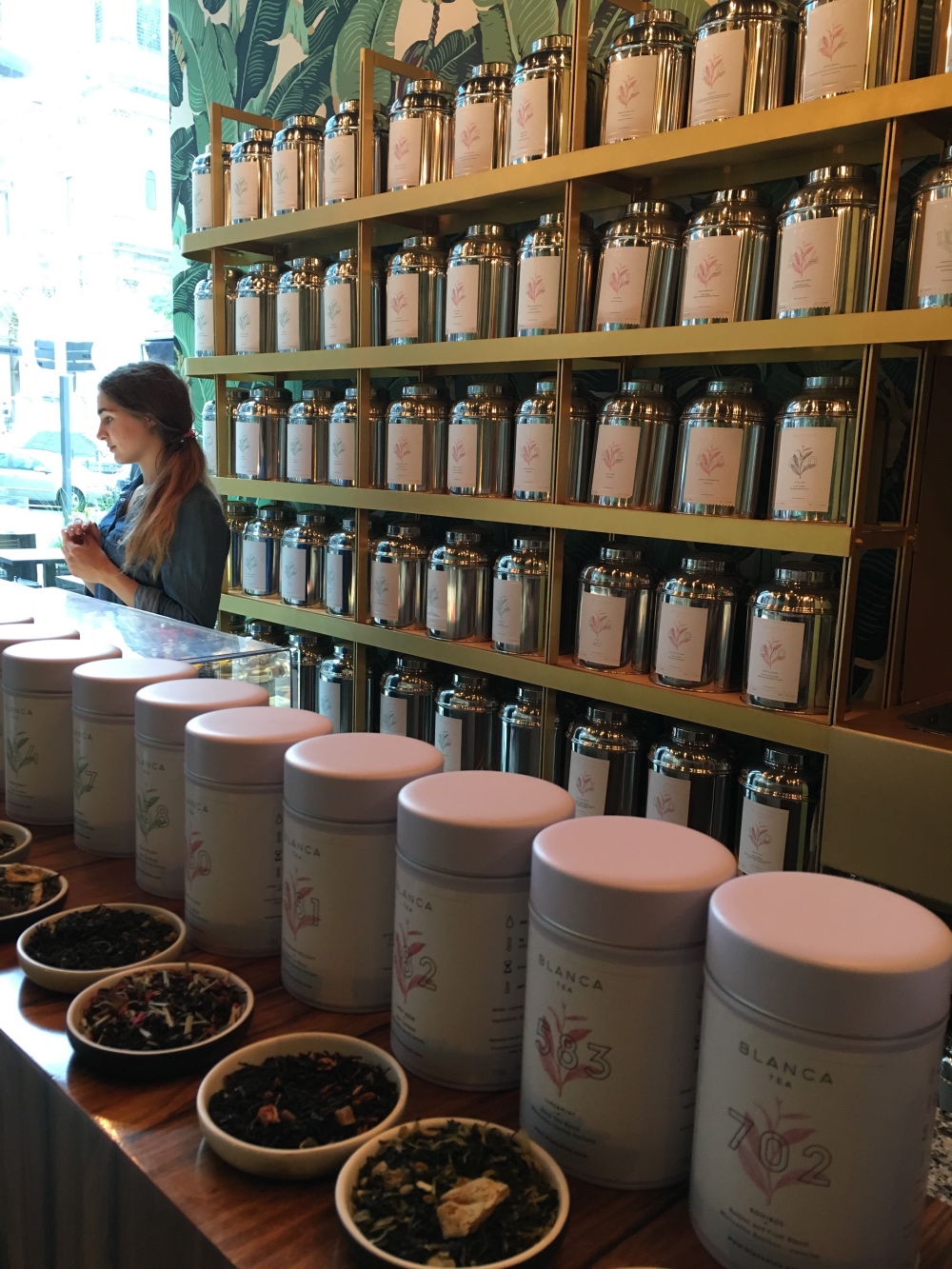
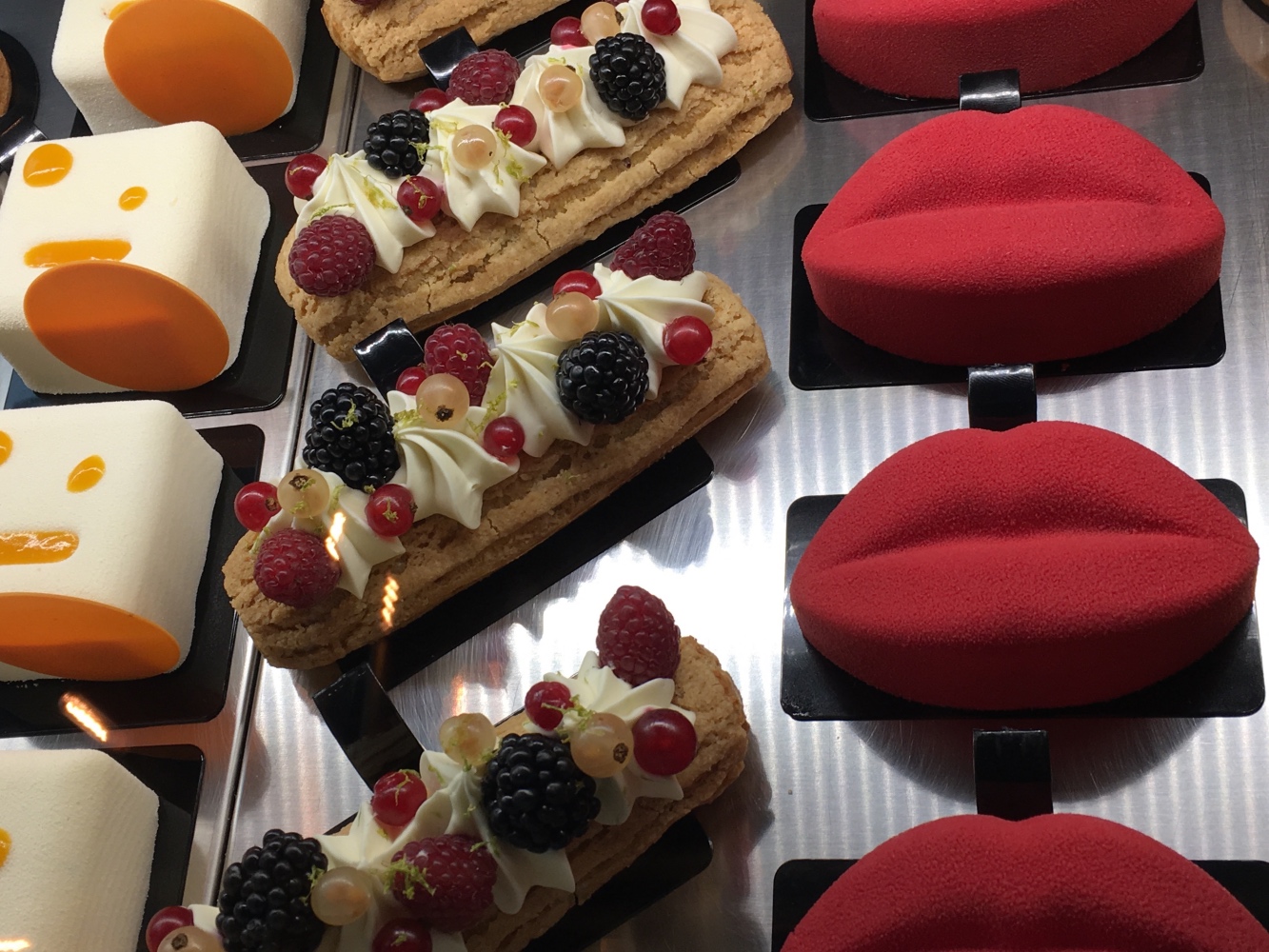
If in the mood for even fancier cakes and pastries, head to the Odette patisserie and tea room.
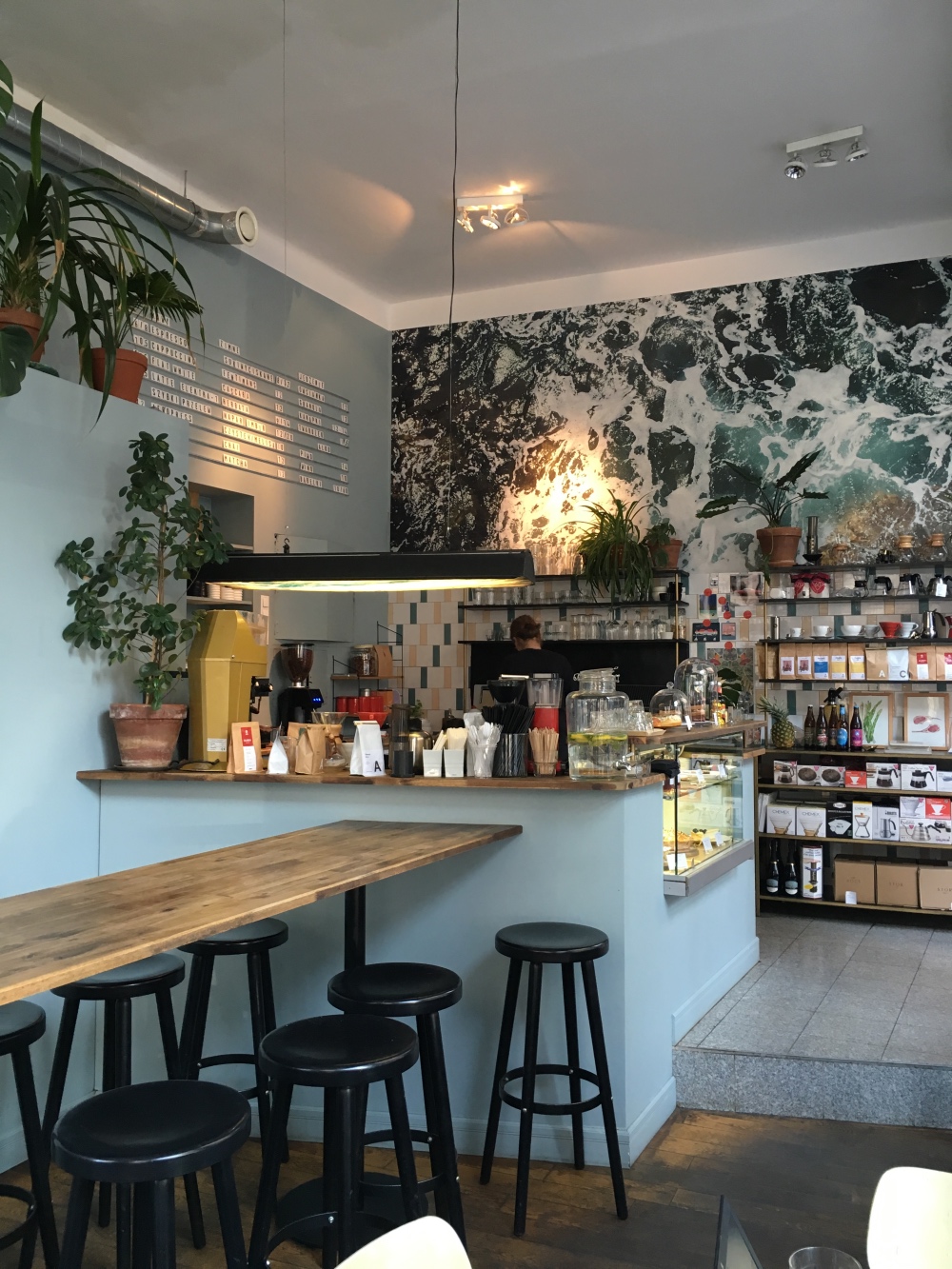
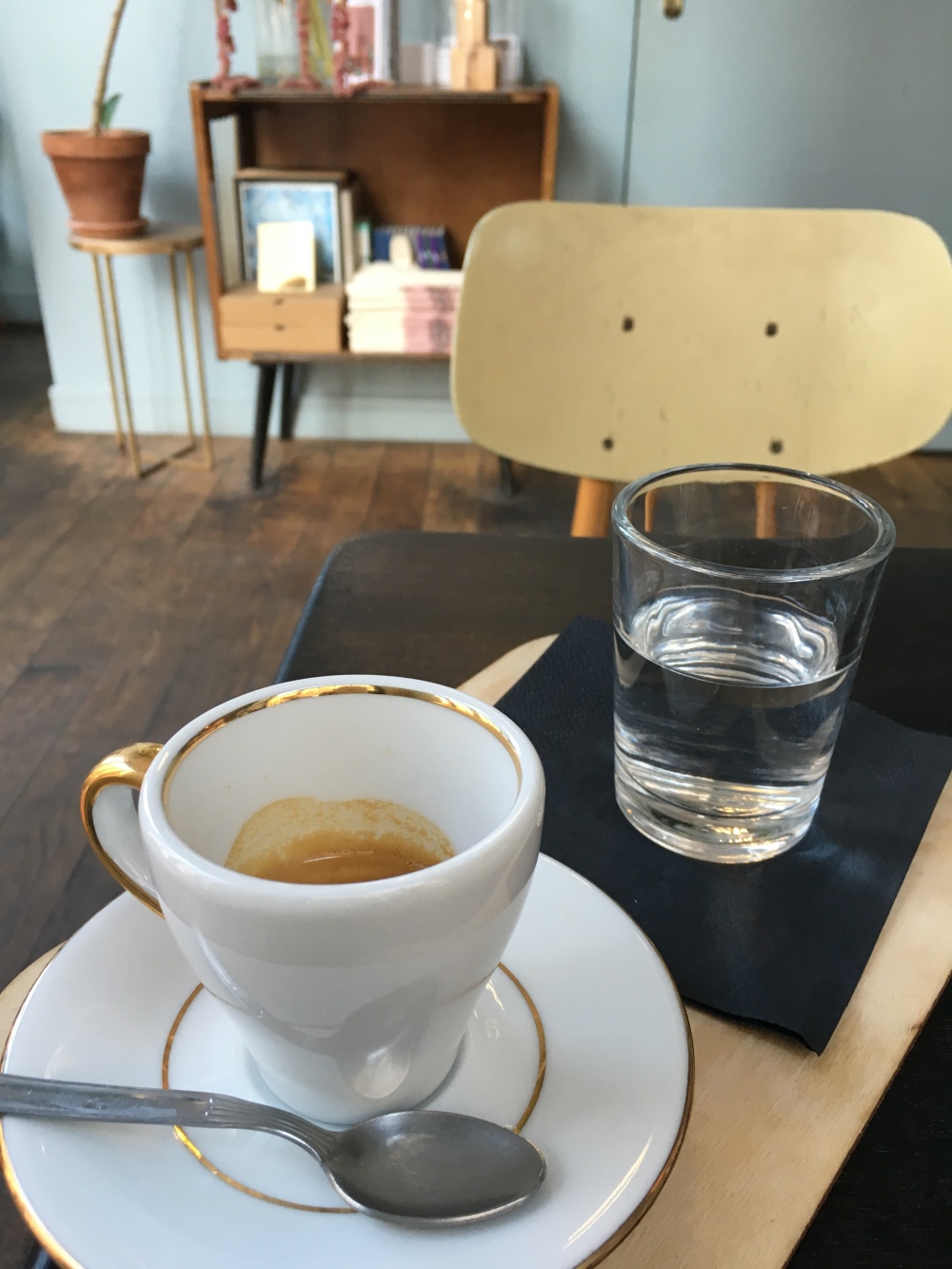
Prefer coffee to tea? Warsaw has a wide choice of independent coffee places, such as Stor, a small, friendly café. Its fans are evangelical about the coffee and cakes here. Their signature drink is a mix of condensed milk, double espresso and ice cubes, if that‘s the kind of thing that floats your caffeine boat.
Whatever your preference first thing in the morning, it seems that breakfast meetings are all the rage in Warsaw. Polish breakfasts are more often savoury than sweet, and at Krem, run by the charismatic Luc Magnon, the menu favours the cheese lover with a hearty appetite: portions are large and even the “Petit Déjeuner” includes Tomme de Savoie. The croque-monsieur is in demand, as is the dense cheesecake with cherry jam (both lightly salted) and salad leaves.
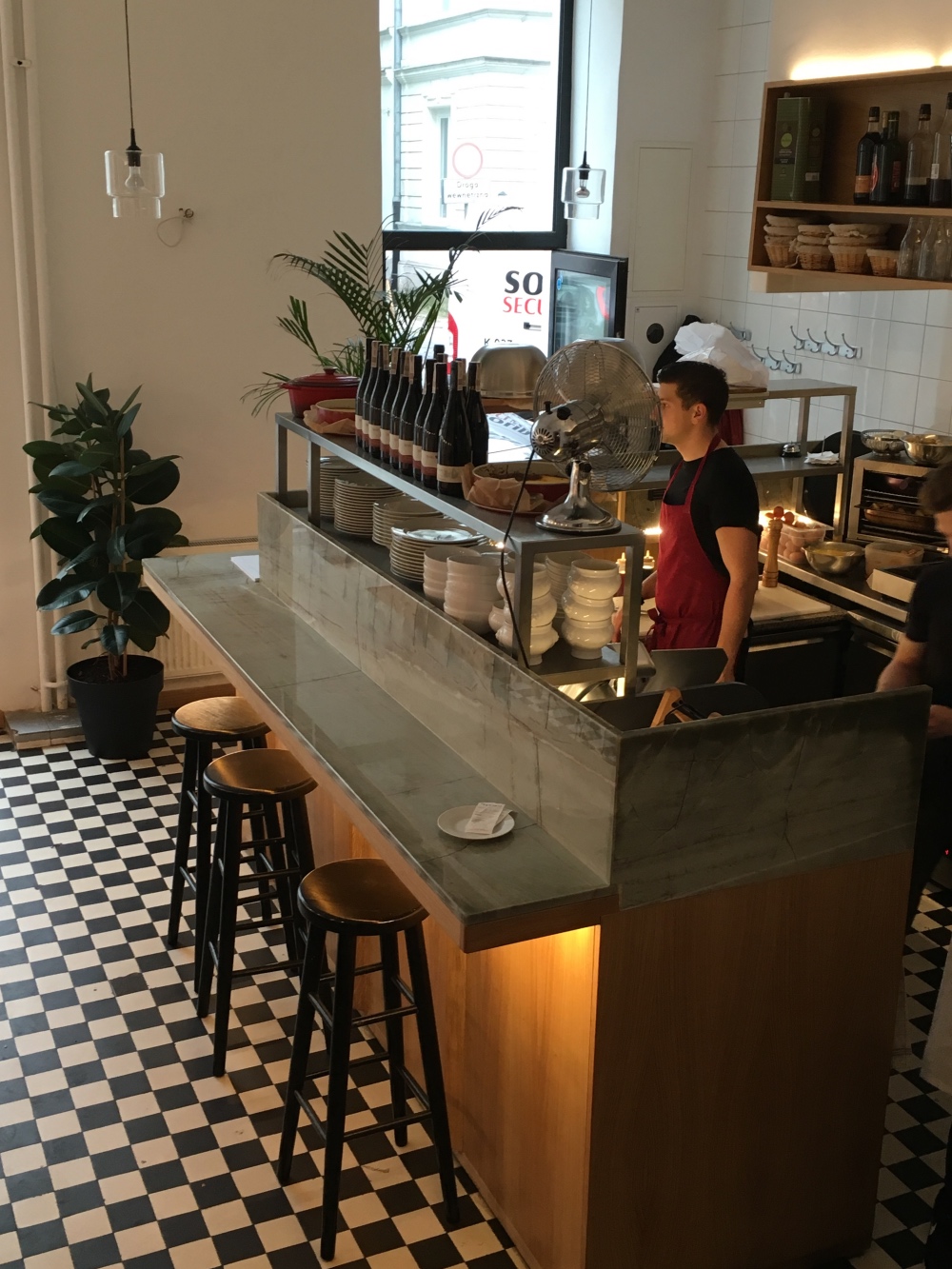
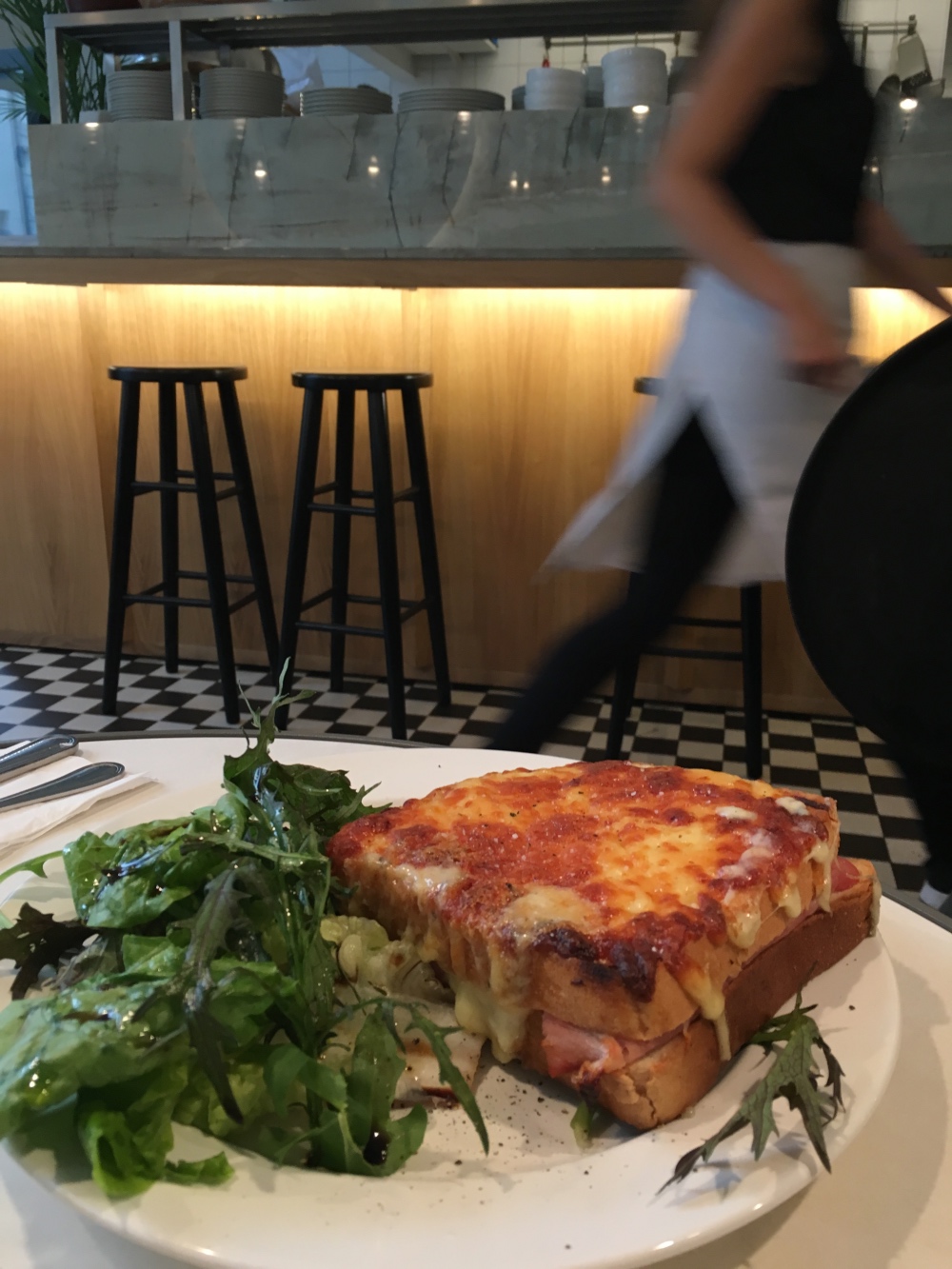
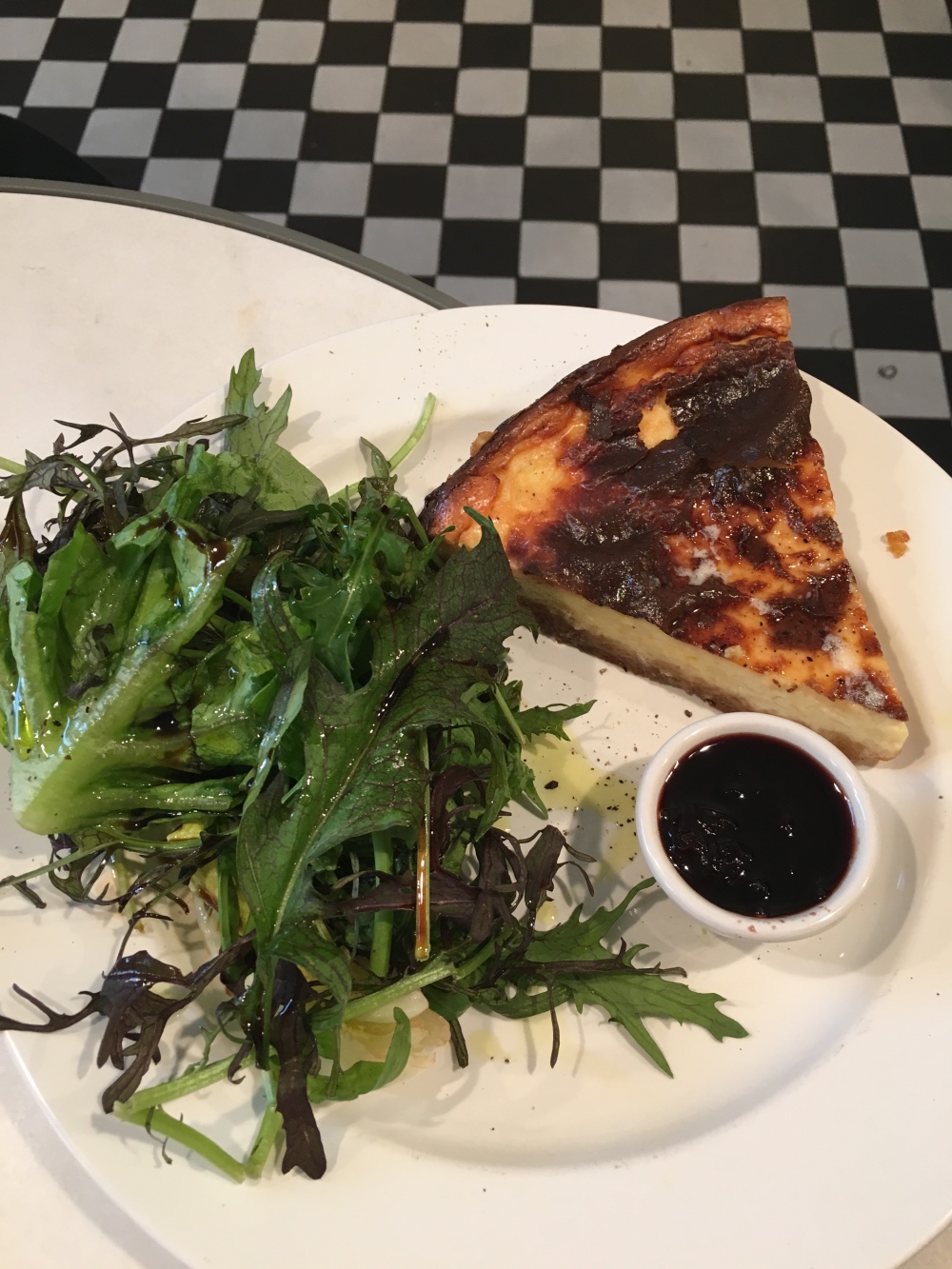
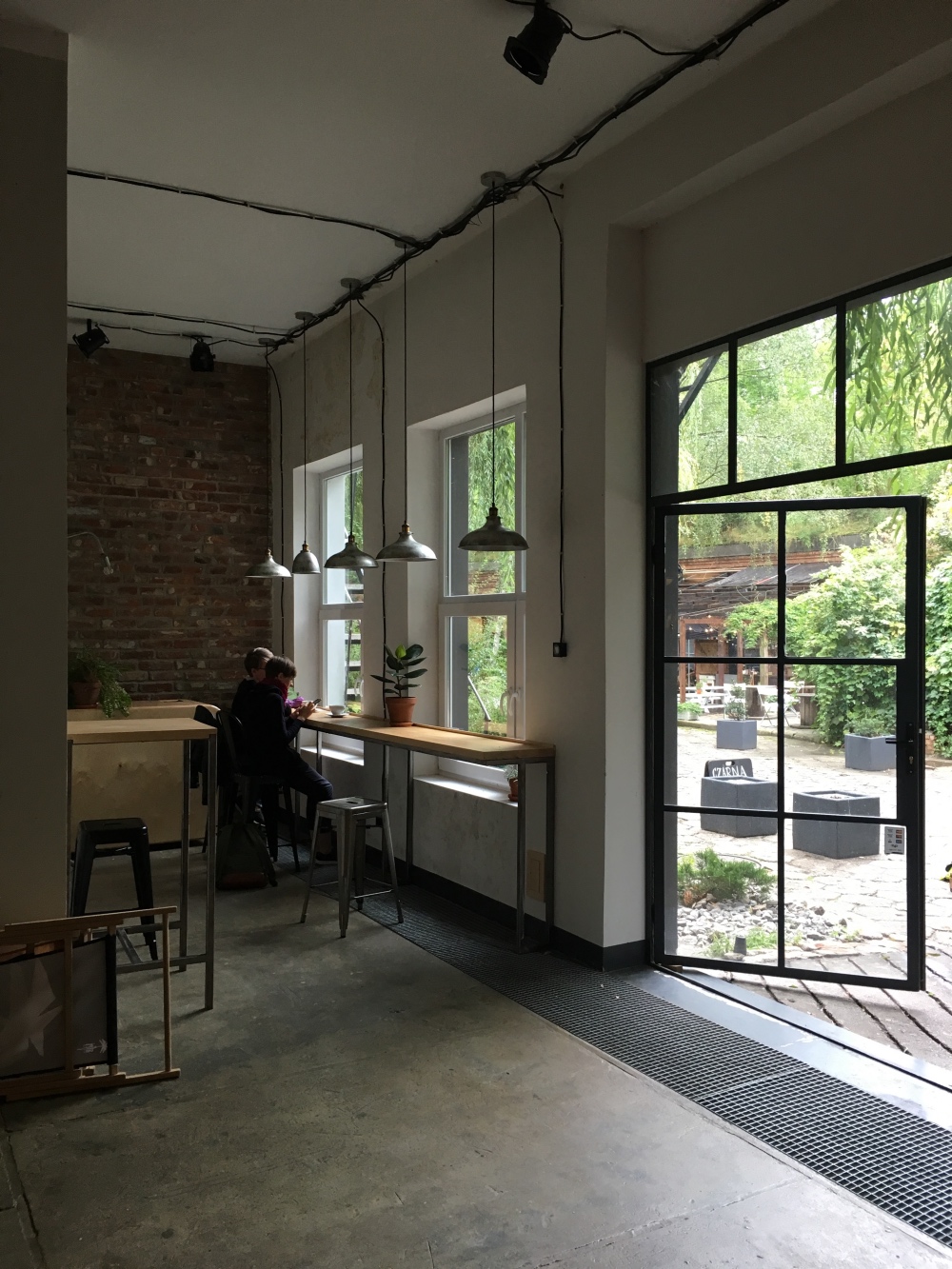
If you want to see youthful entrepreneurialism thriving in Warsaw, take a look at the Fort Mokotów. A few kilometres from the city centre, it was set up 15 years ago and is now a hub of small businesses and start-ups fuelled by enthusiasm, a wine bar and a coffee stop which strikes a decidedly Shoreditch pose.
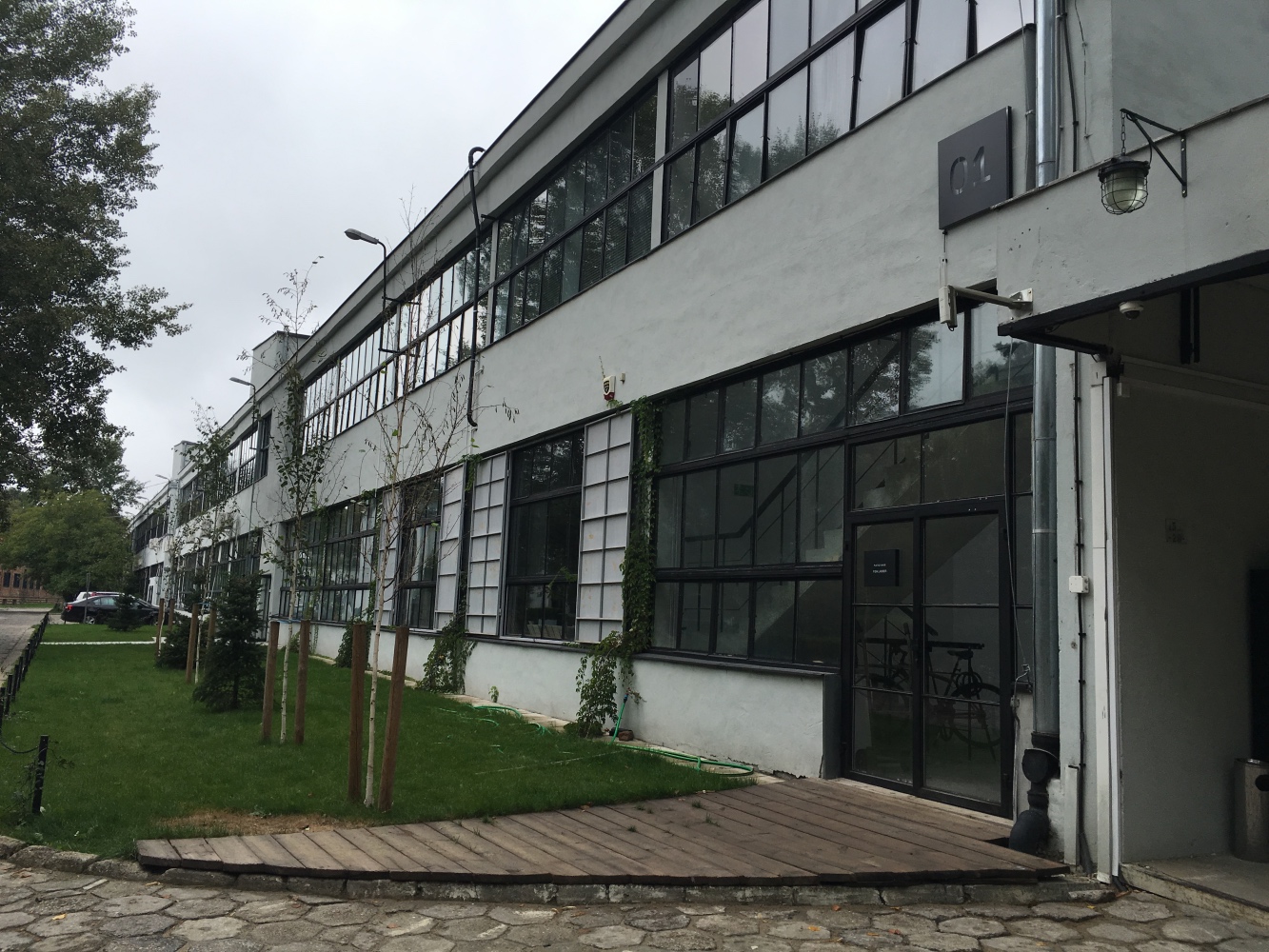
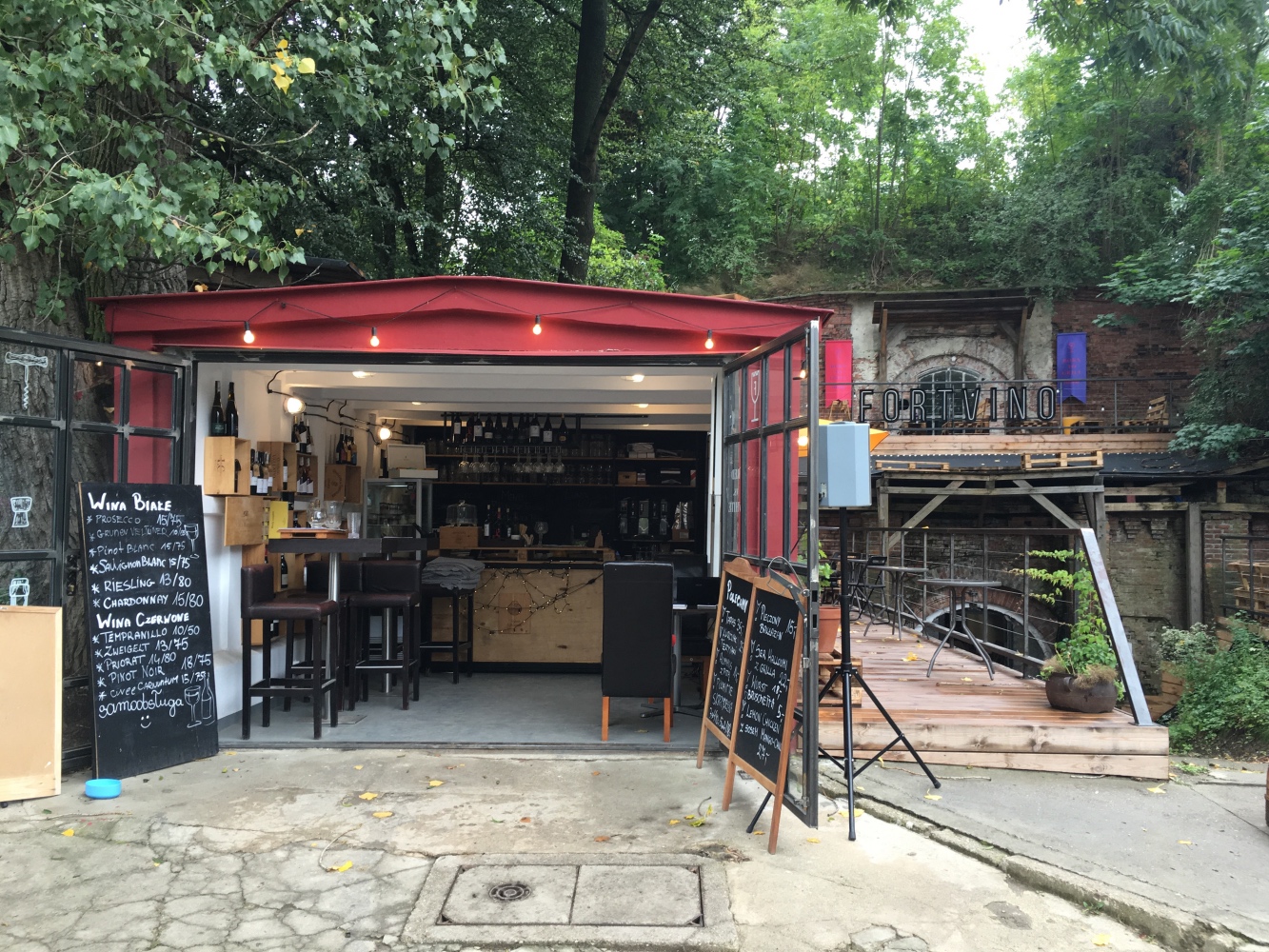
It’s where Pszczelarium Urban Honey is based. Marek Krzyżanek, formerly a photographer, became fascinated by the organisation of the beehive, concerned about bees’ struggles with climate change and joined forces with a friend to help boost urban bee numbers.
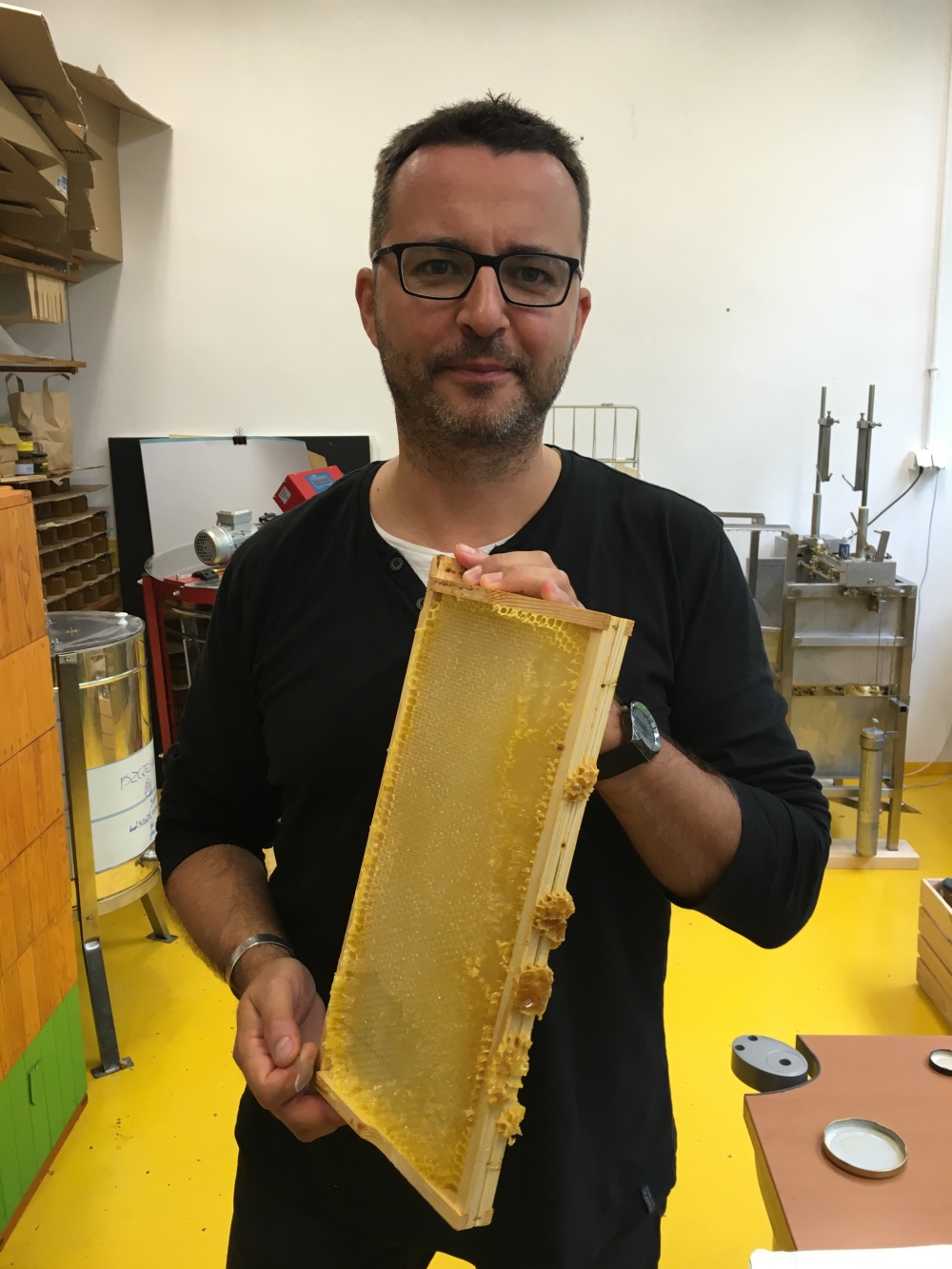
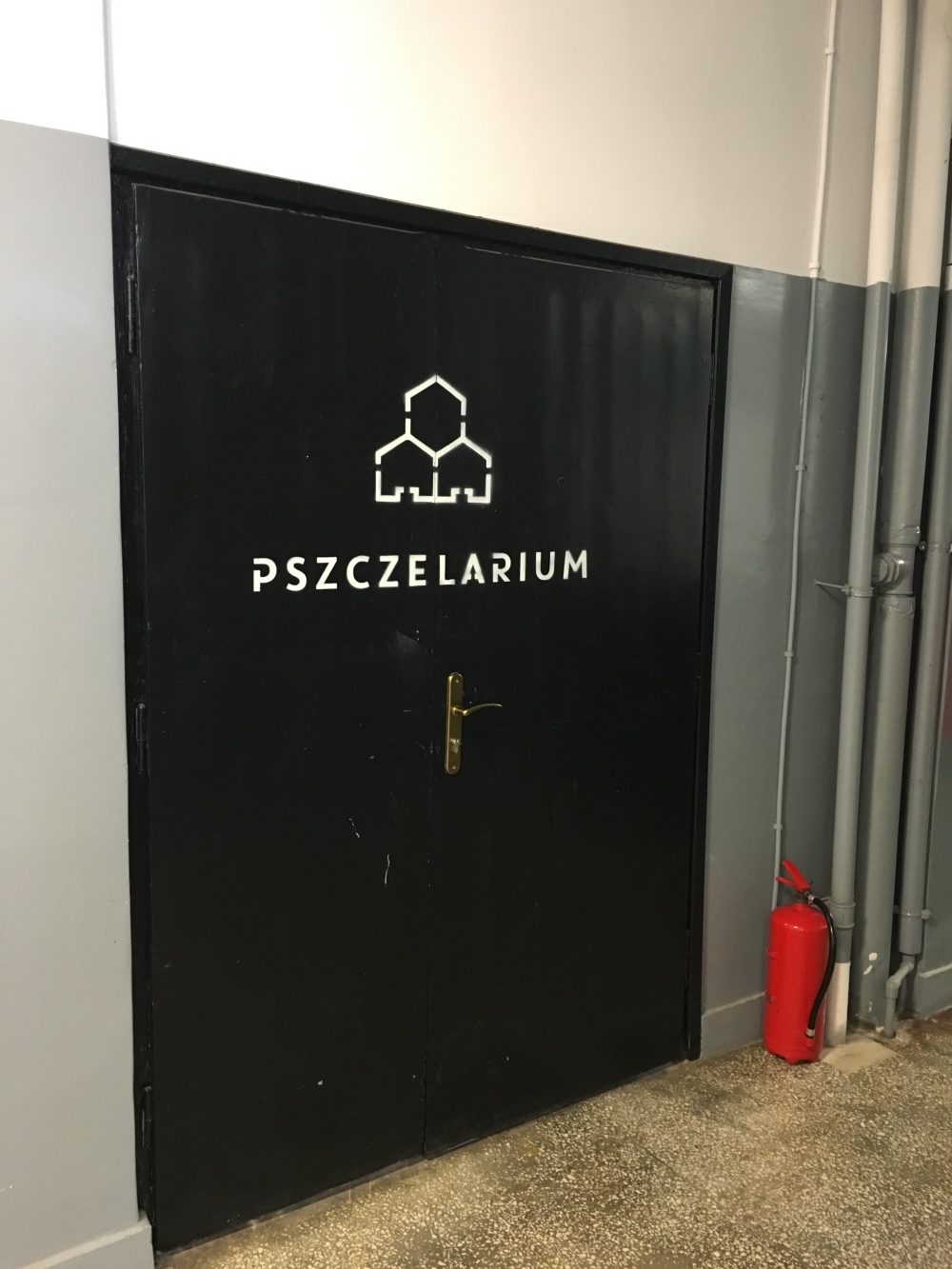
Their enterprise encourages Warsaw companies to install a handful of hives on the top of their buildings. Pszczelarium maintains the hives and either shares the honey with the client, or the latter pays Marek and his colleagues for their time and expertise, and therefore keeps all the honey.
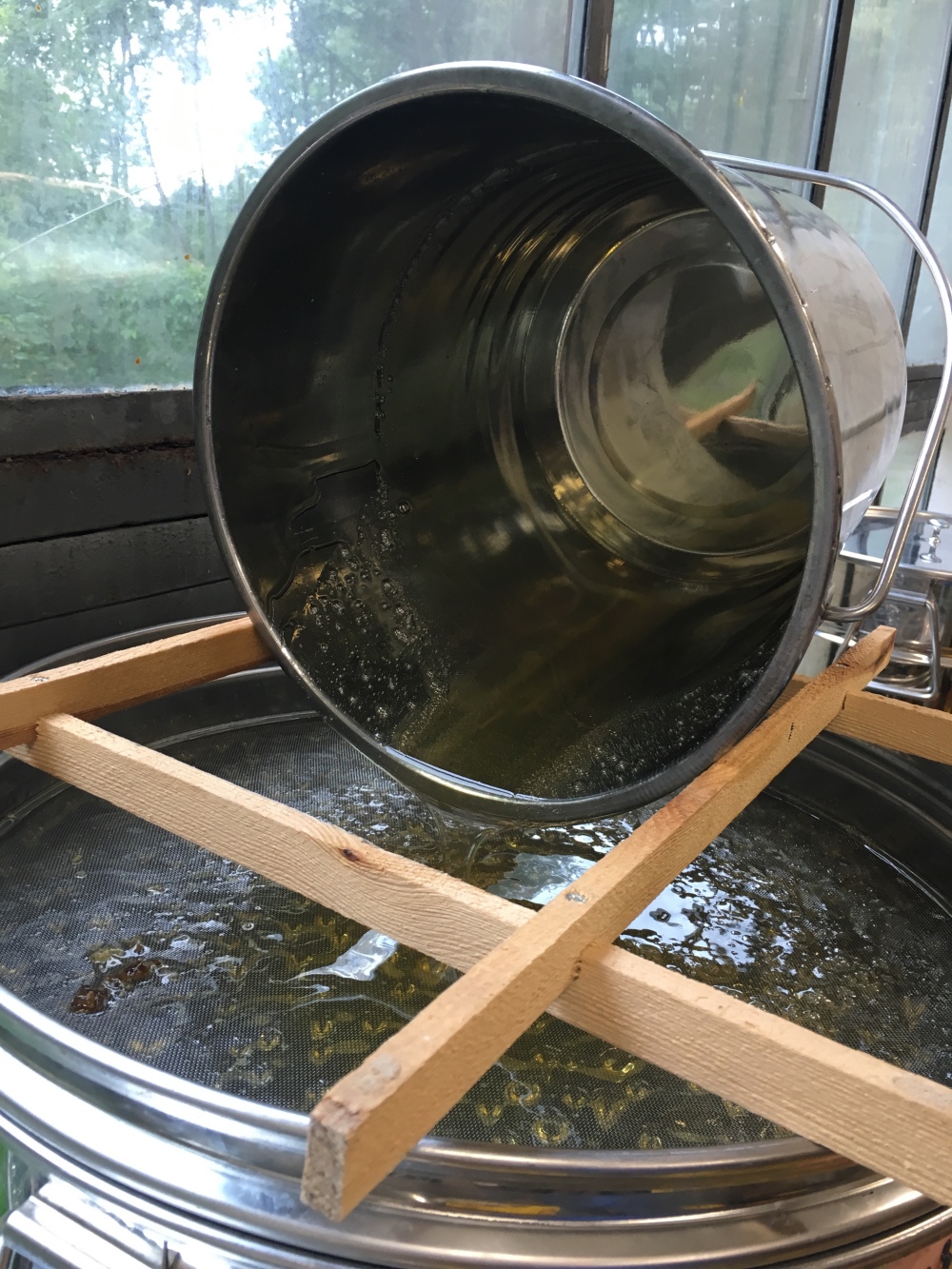
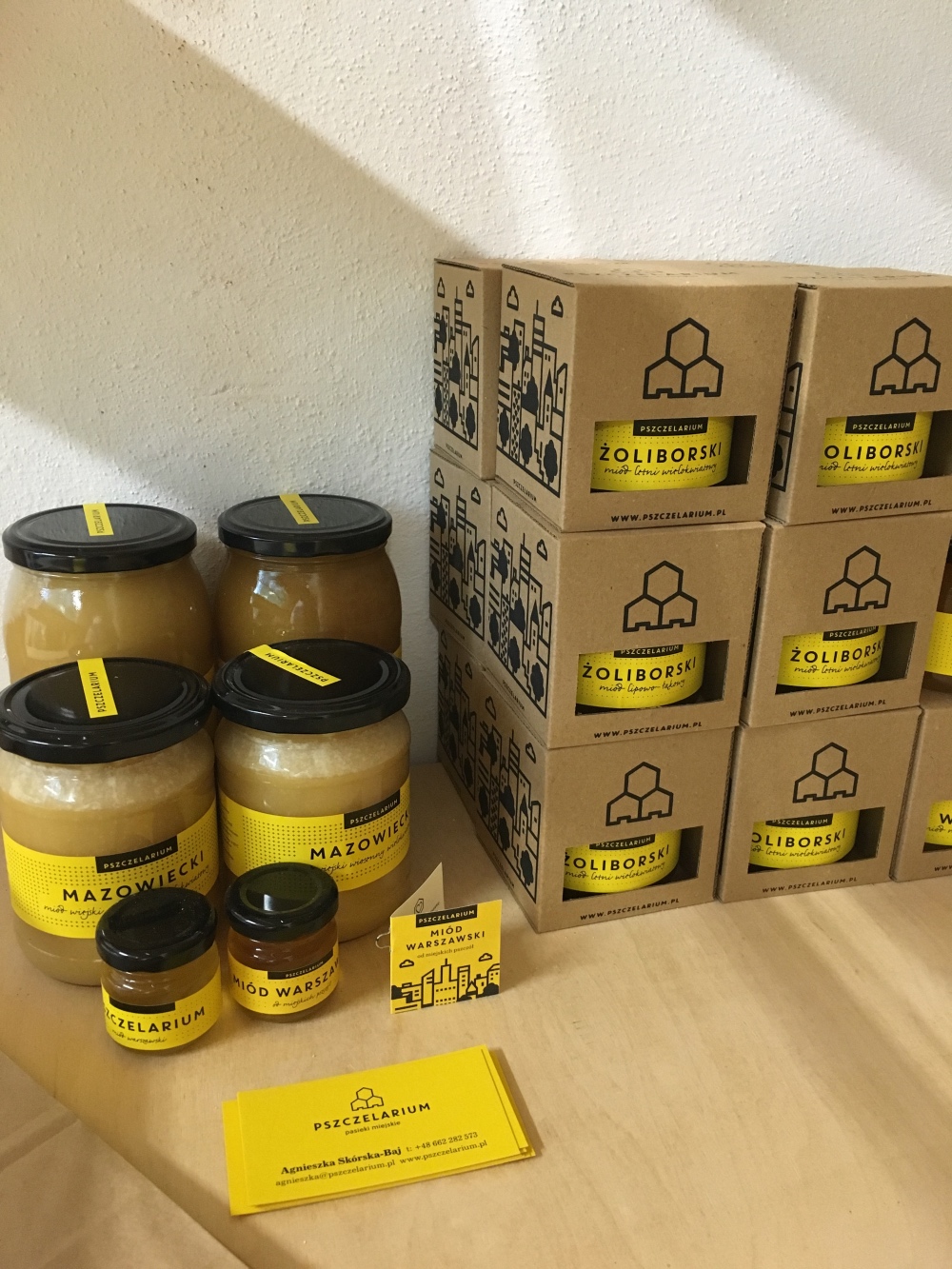
Marek knows that their business is thriving because of honey’s popularity in Poland: with cheese for breakfast, in many cake recipes and in making liqueurs. Pszczelarium honey is currently sold in Warsaw and Gdansk.
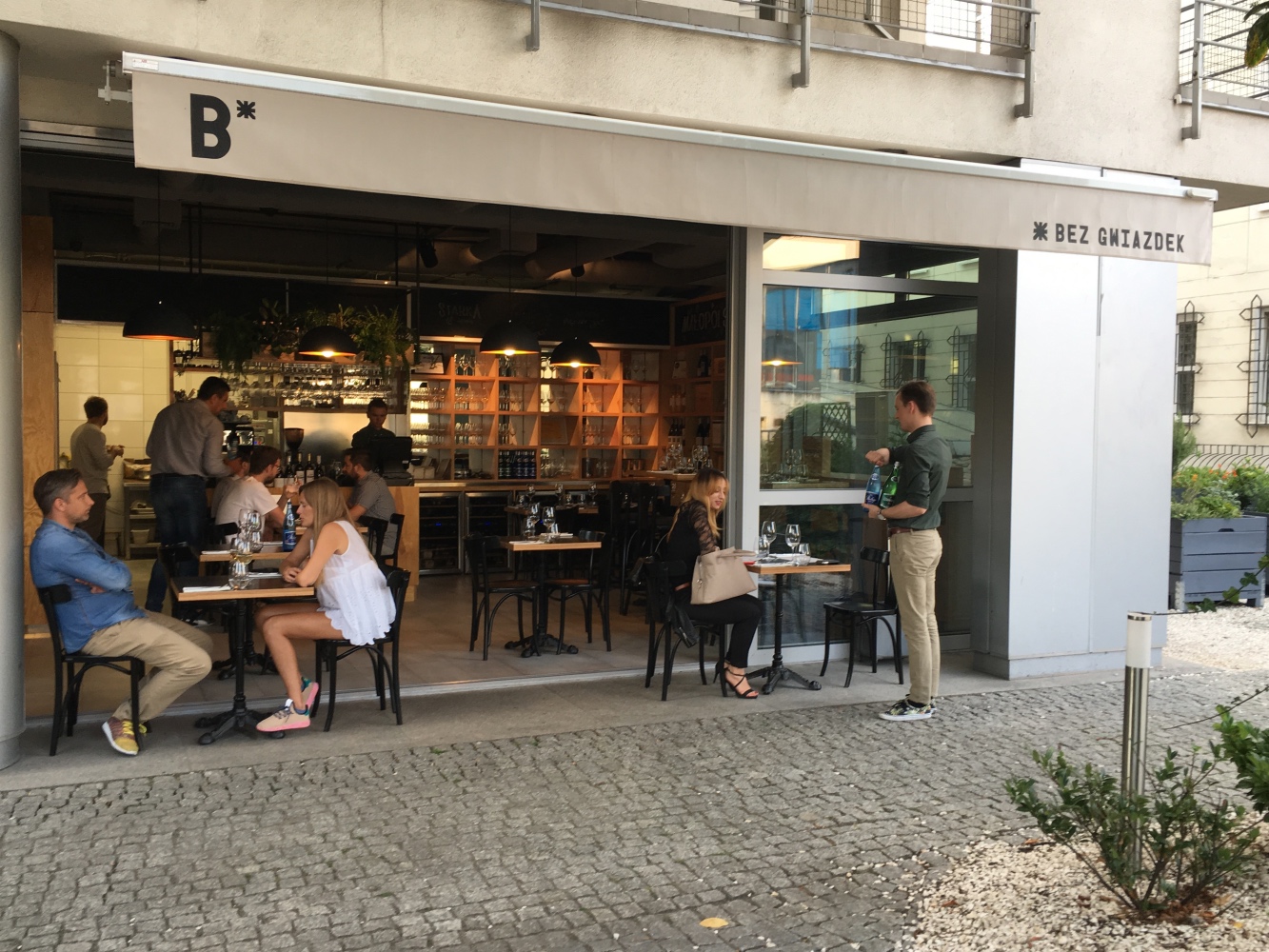
And if you want to stay in Warsaw yet taste food from elsewhere in the country, consider the casual restaurant Bez Gwiazdek. Each month the menu here changes its focus to a different area of Poland. It was the turn of Malopolska in the south when I went for dinner. There’s a choice of tasting menus with a wine pairing option (mine included a Polish Johanniter alongside suggestions from Slovakia, Georgia and Armenia, as well as the USA and Europe). The à la carte wine list is especially good for those curious about Polish wines, and the sommelier is charmingly helpful.
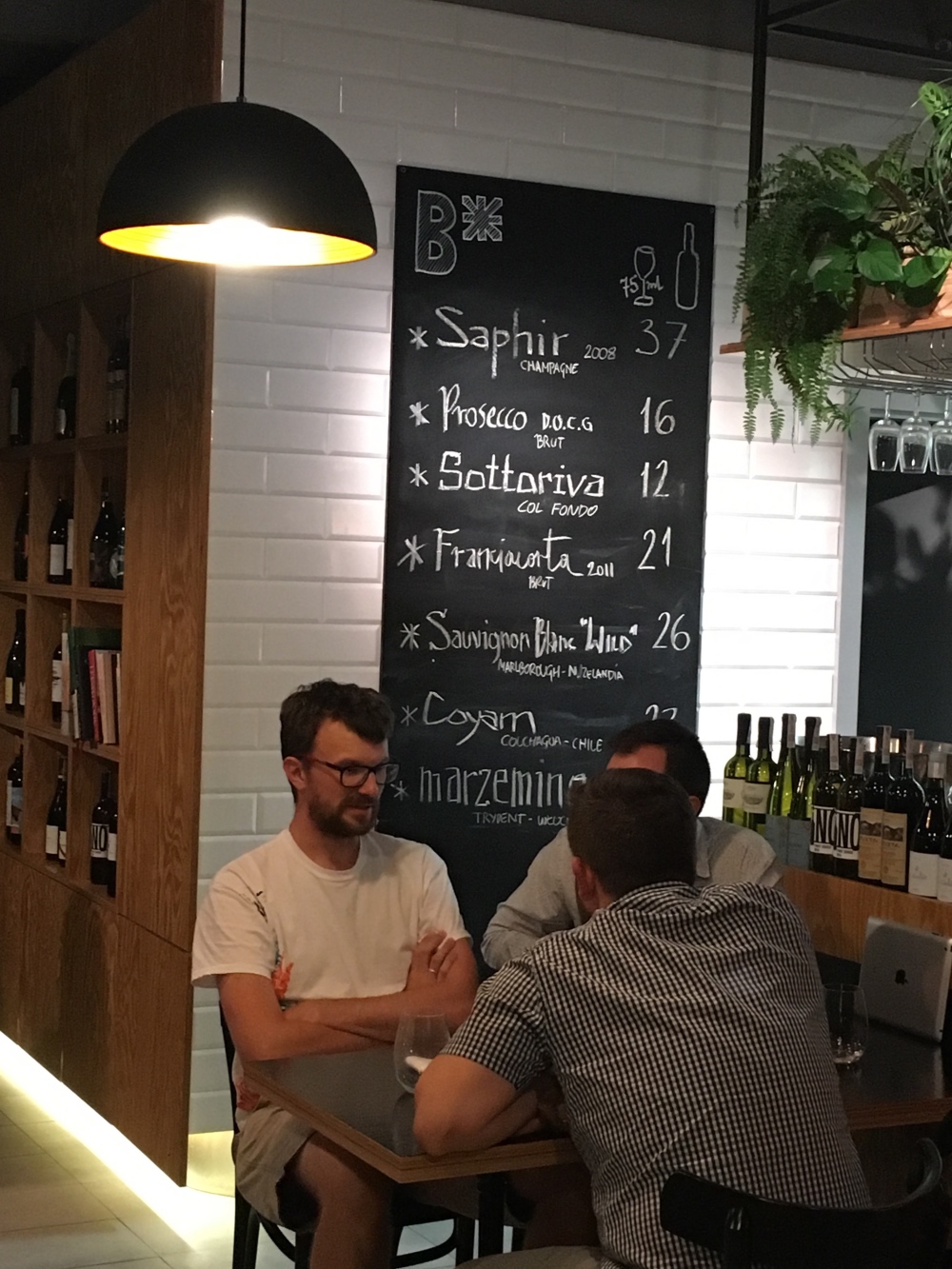
Excellent bread (of course) presented with cold pressed rapeseed oil and butter; a Kwaśnica “sour soup”, made with sauerkraut and vegetable stock, rather than the usual pork stock; trout (from Malopolska), smoked in their small garden behind the restaurant, and served with a wild dill and wood sorrel.
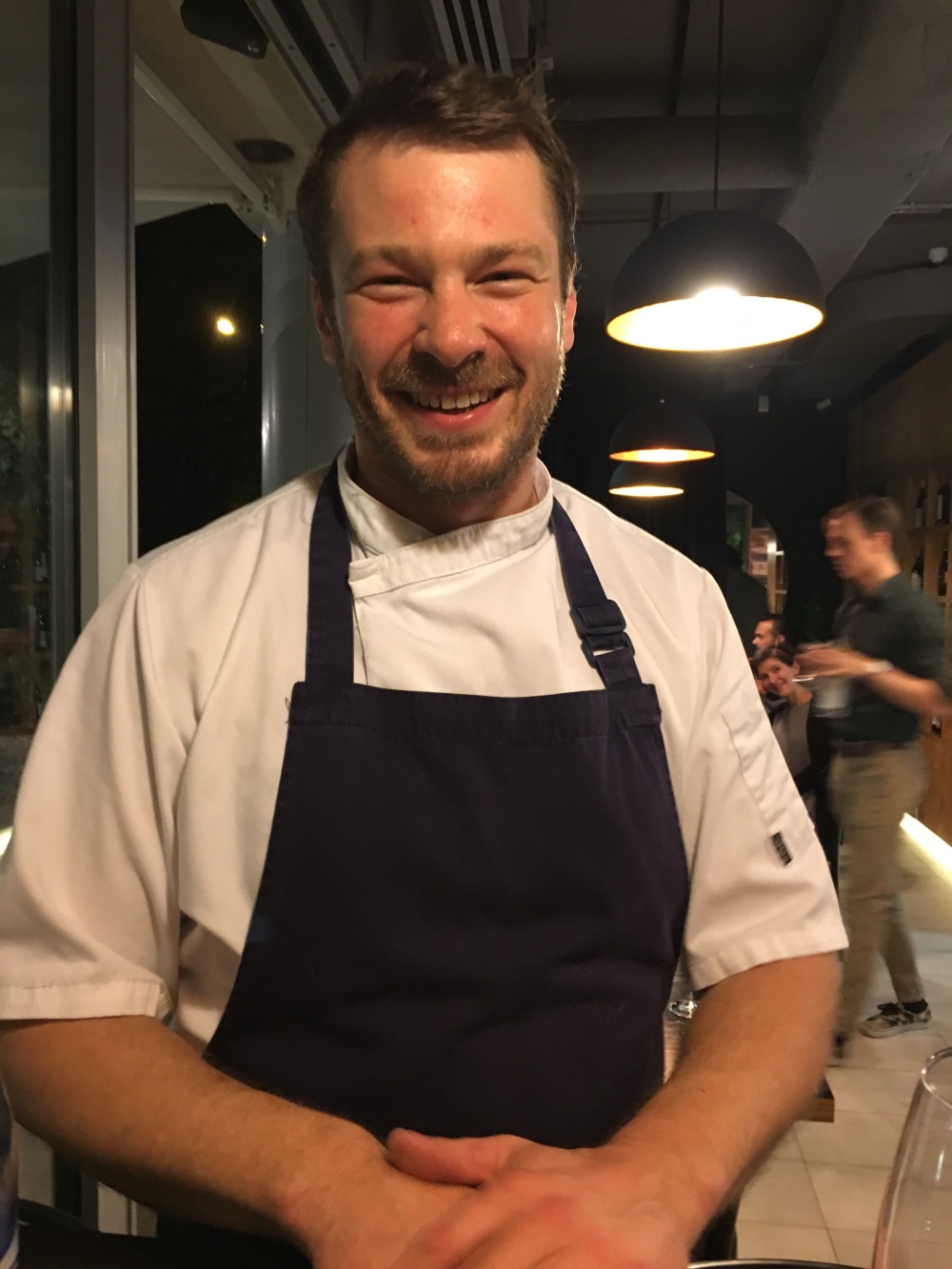
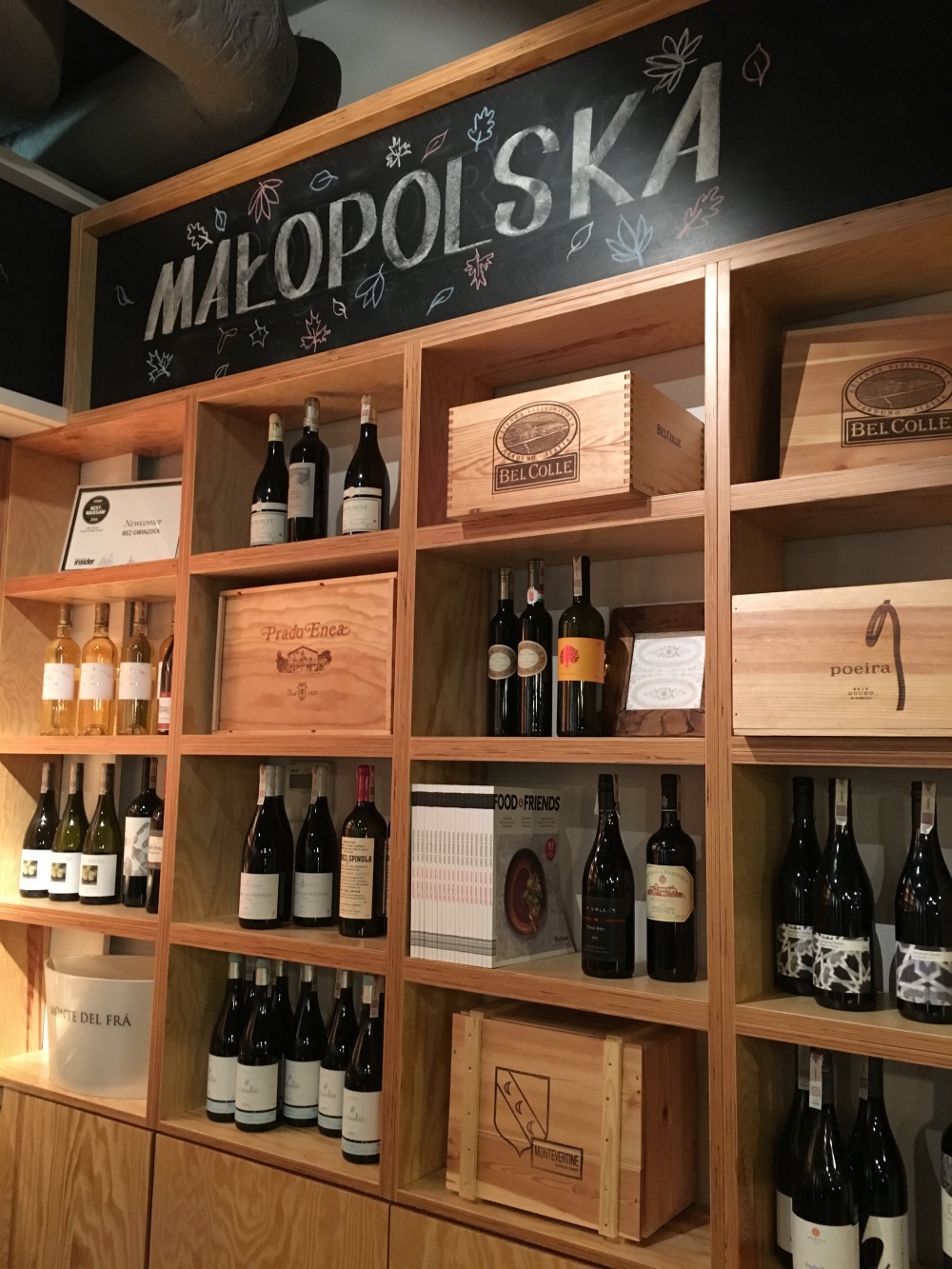
Finally, a cheesecake, so soft it was almost like whipped cream, on a sablé base, covered with chocolate and with a blackberry soaked in mead for a burst of alcoholic honey. The name of the restaurant means “No Stars” but it has many loyal regulars, so it’s advisable to book.
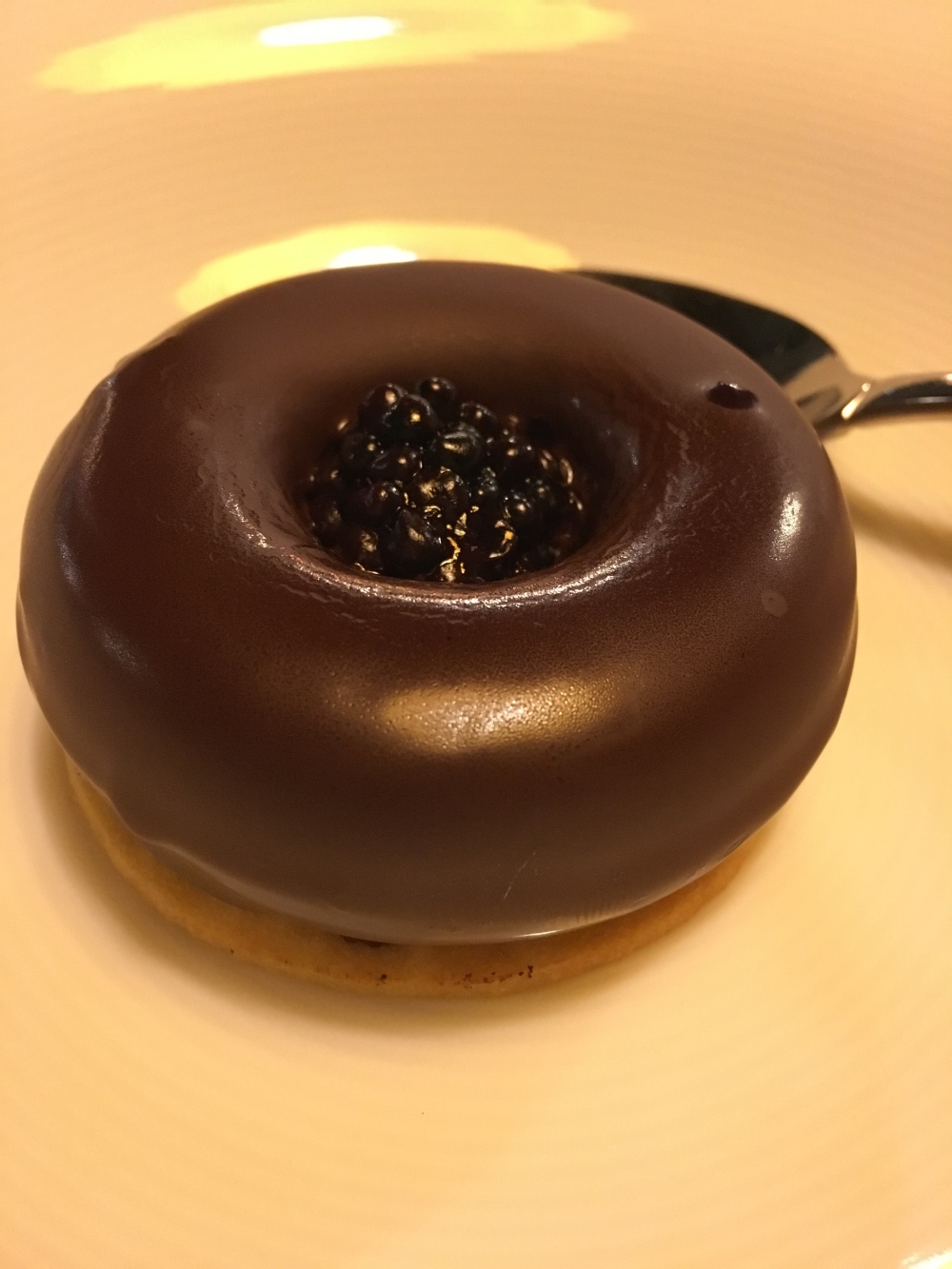
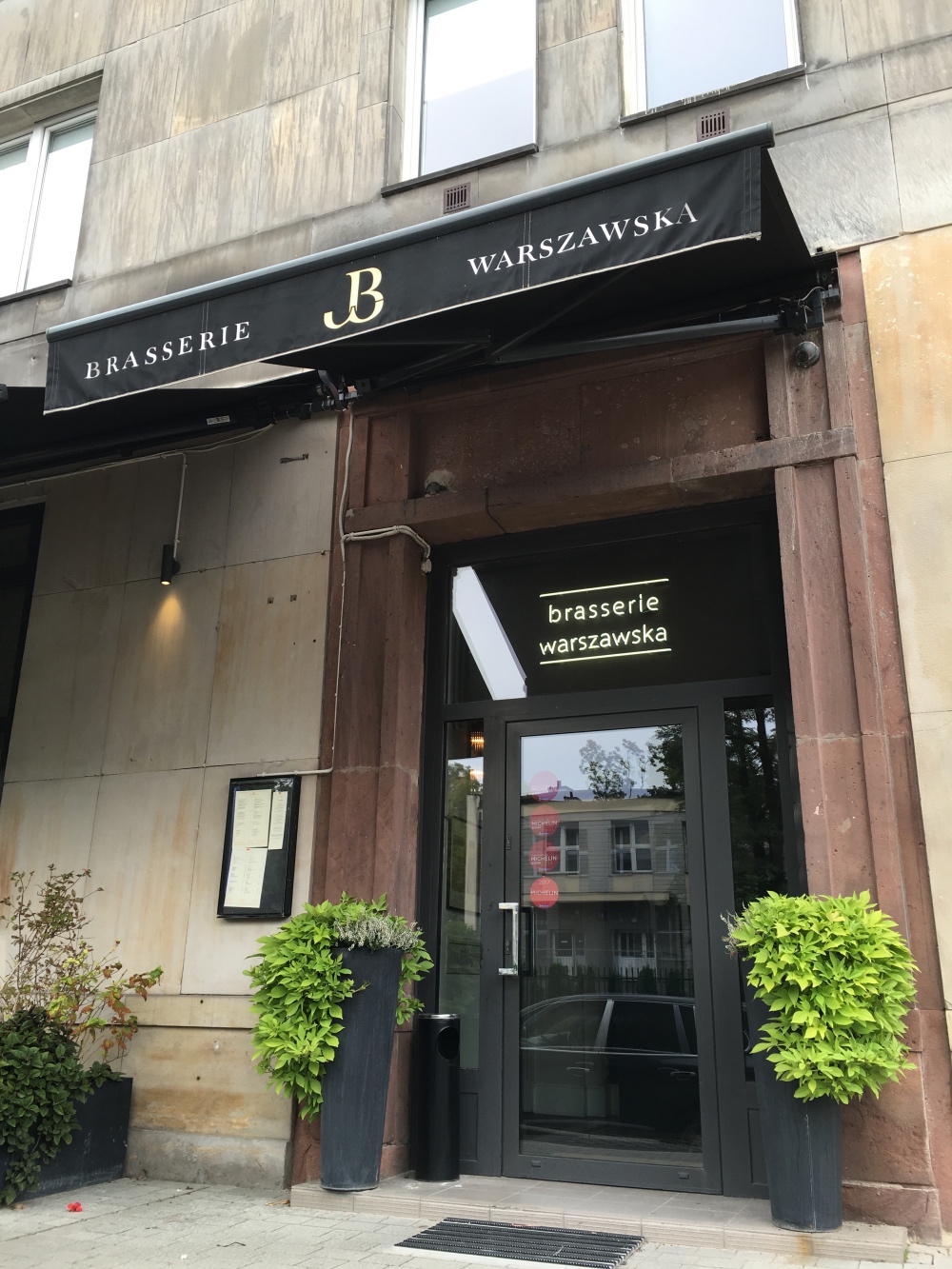
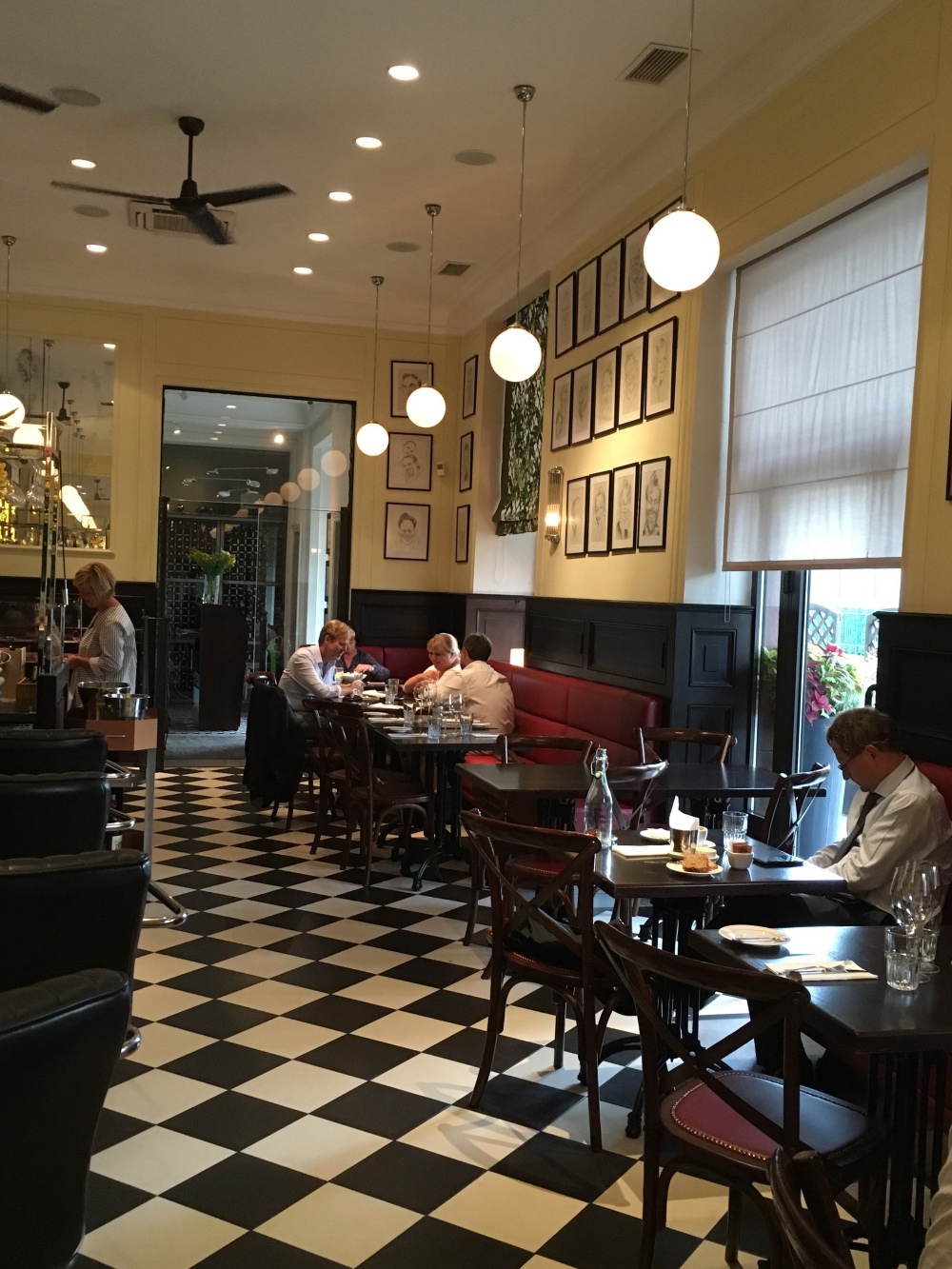
Popular too is Brasserie Warszawiska. Near to many of the big embassies, its building doesn’t shout loudly, but inside its muted entrance is a large elegant counter and big, welcoming tables. The food is European and Polish – start with a Kir Royal or Aperol Spritz, eat pierogi, or beef with foie gras and finish with your choice from a large selection of vodkas. And, be sure to look at the brasserie’s logo as it’s deliberately reminiscent of the sign of the Polish resistance.
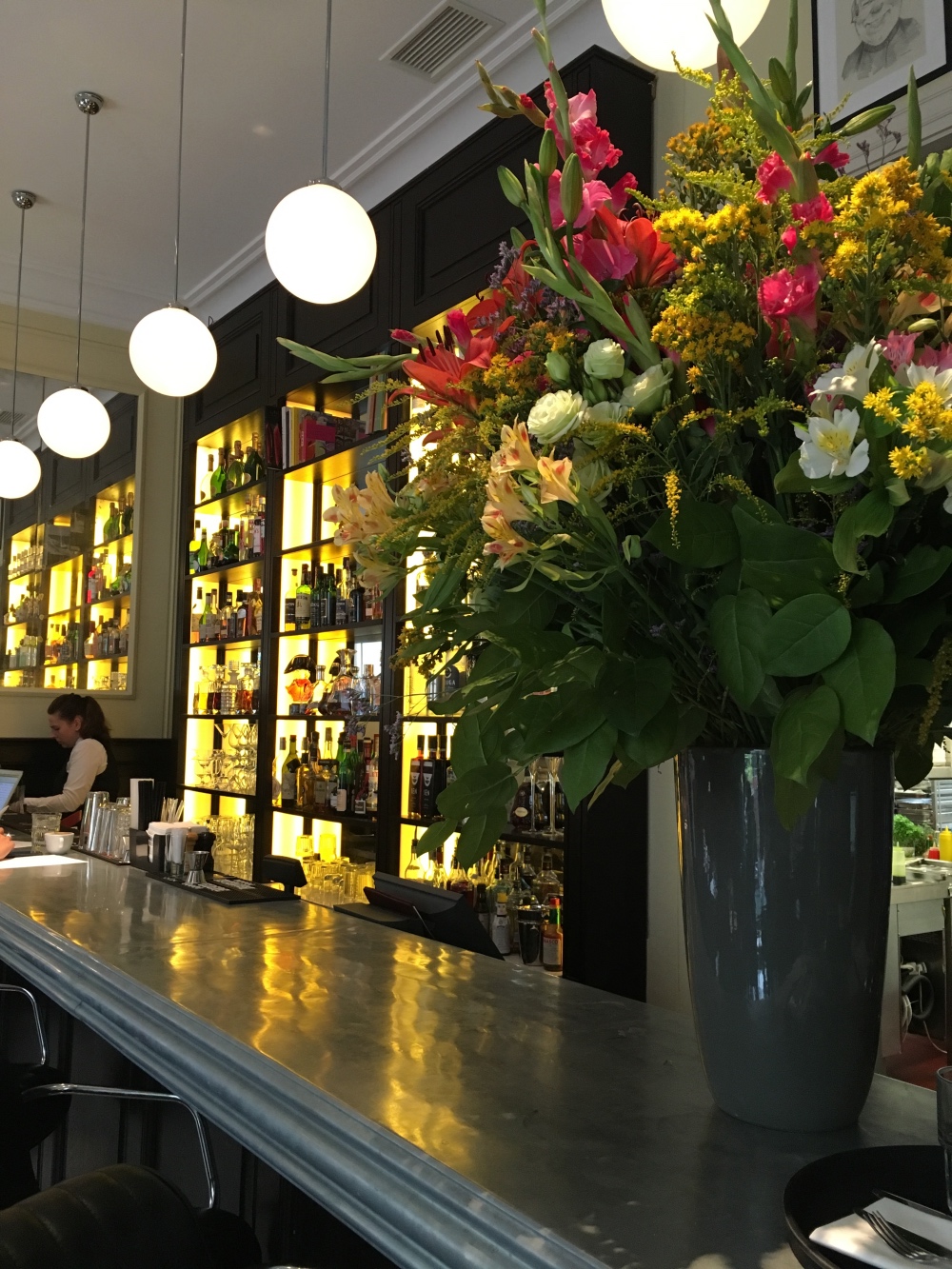
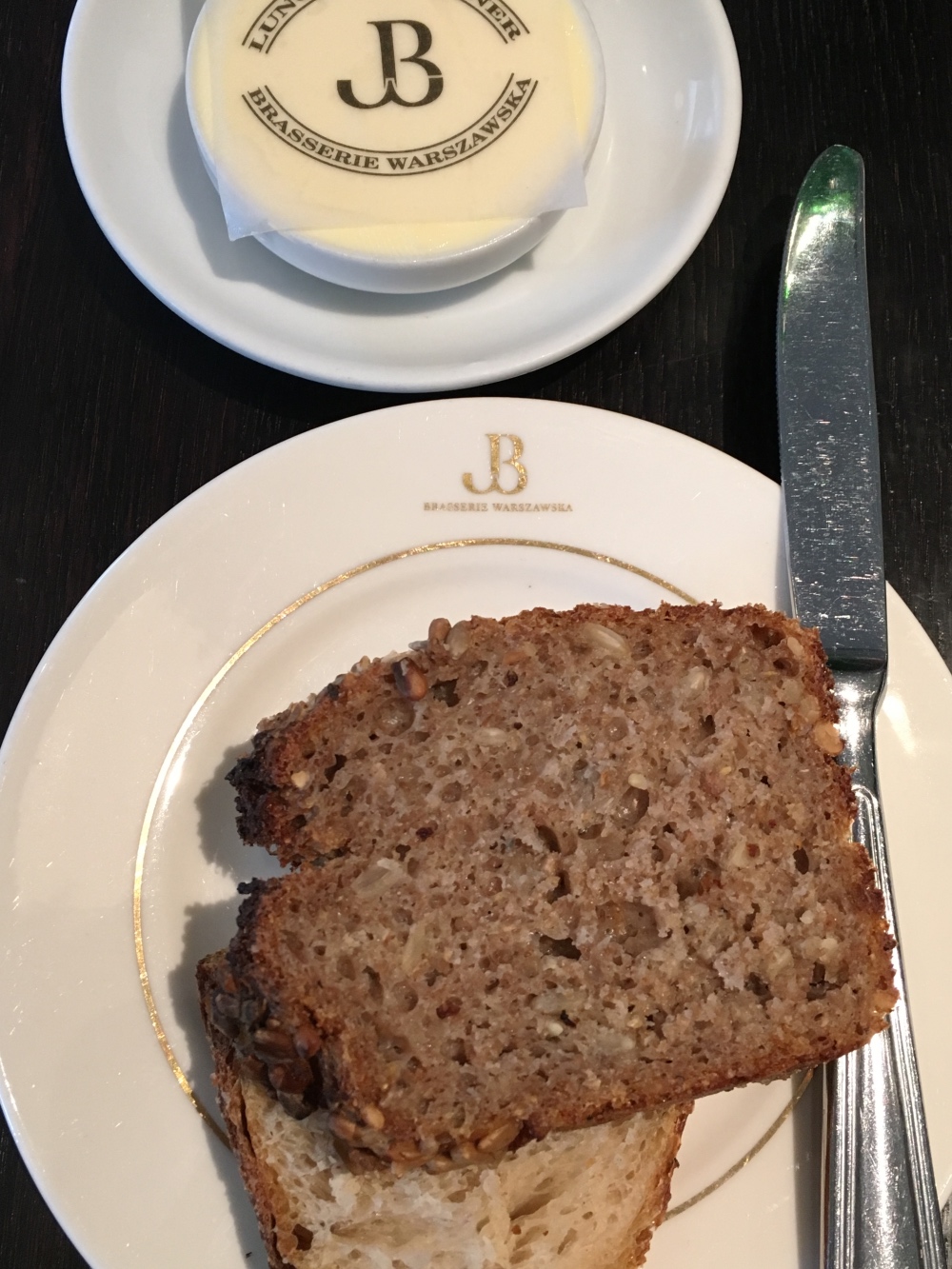
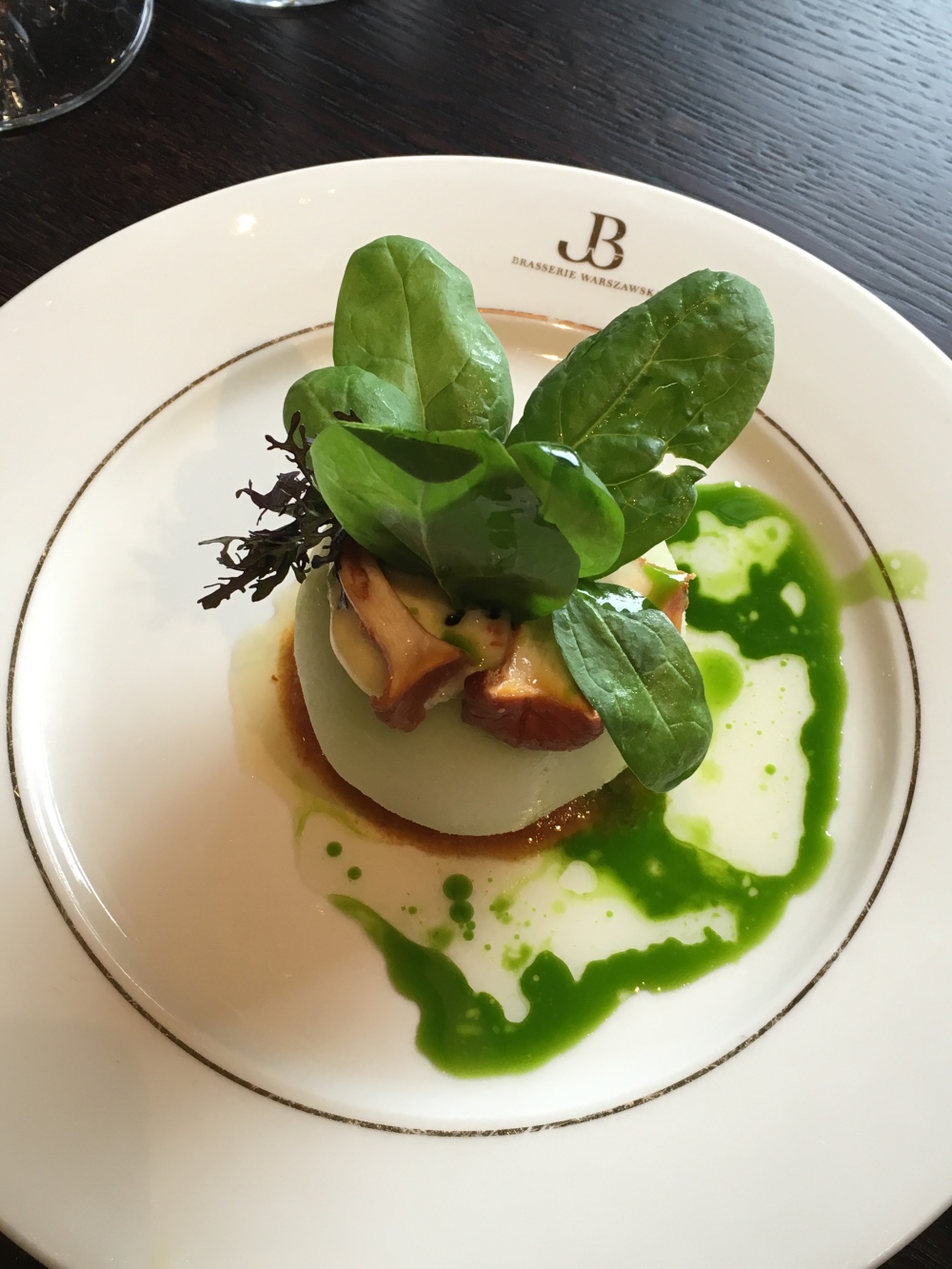
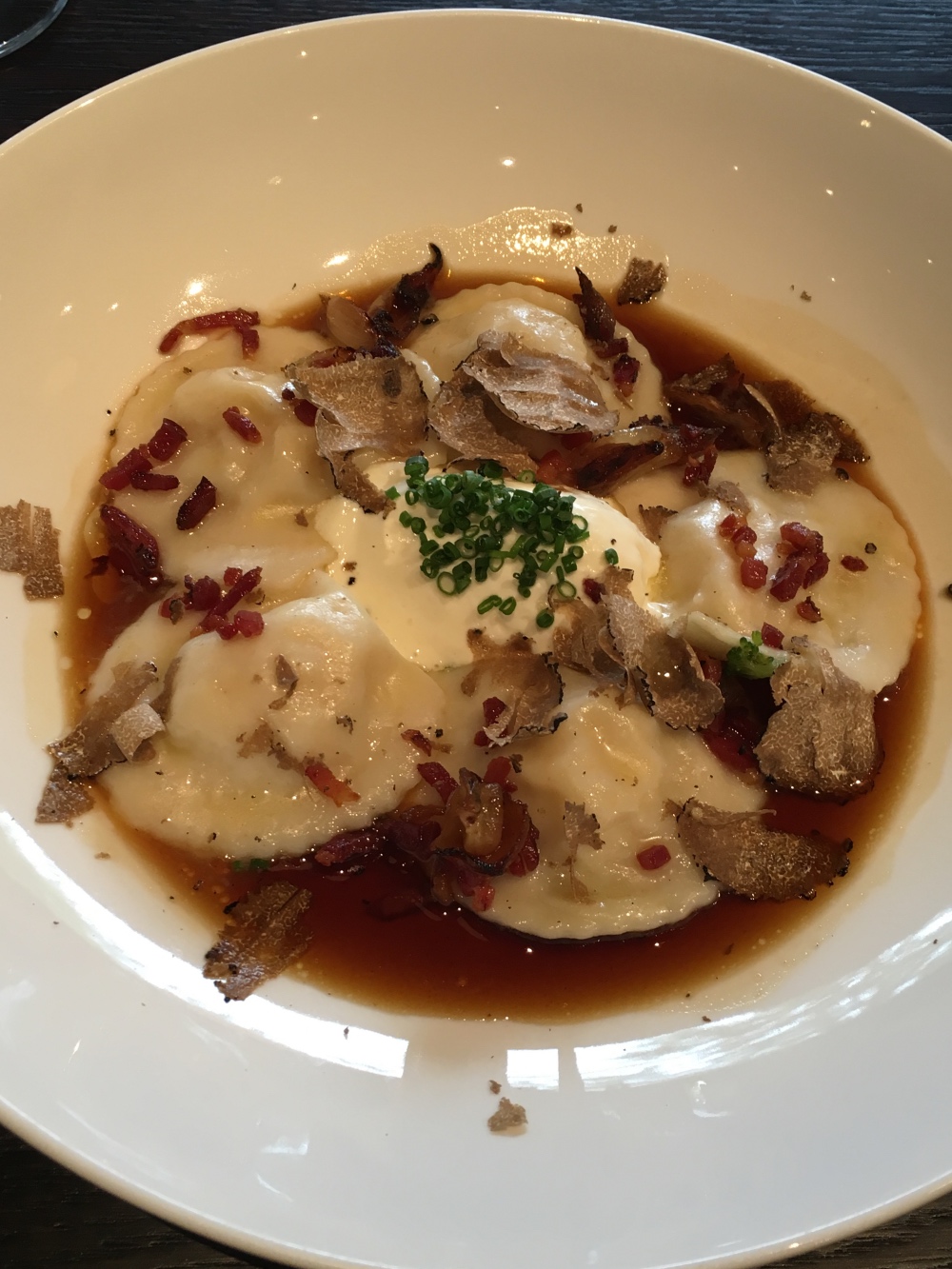
It’s not all about eating out. There is also the well-known market of Hala Mirowska with old, tiled fishmongers, stalls with somewhat strange mixes of items for sale (tiger statues, cacti and hats, anyone?) and animated local purchasing at all the fruit, veg and plant stands. A hub of daily life and a glimpse of local colour.
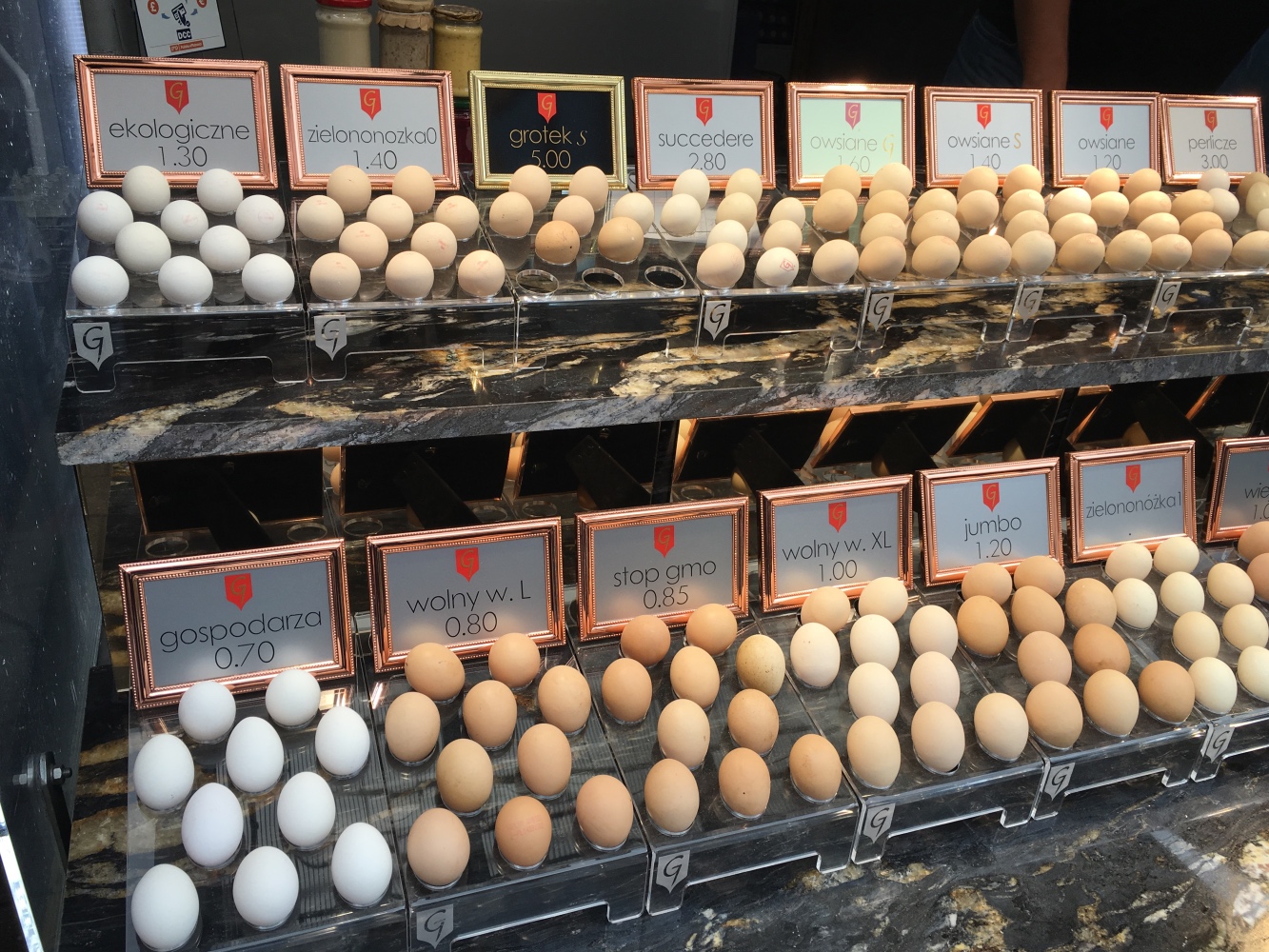
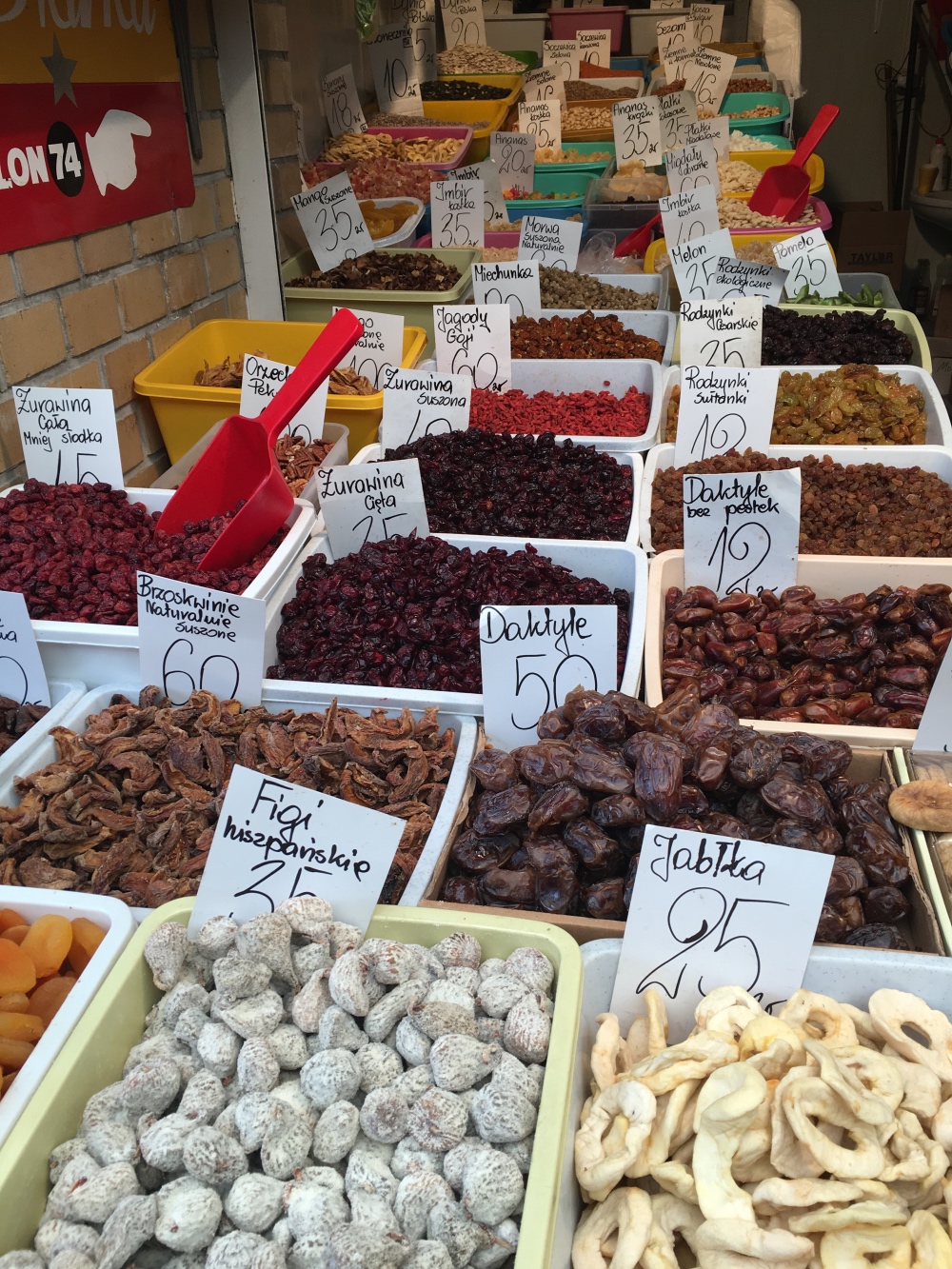
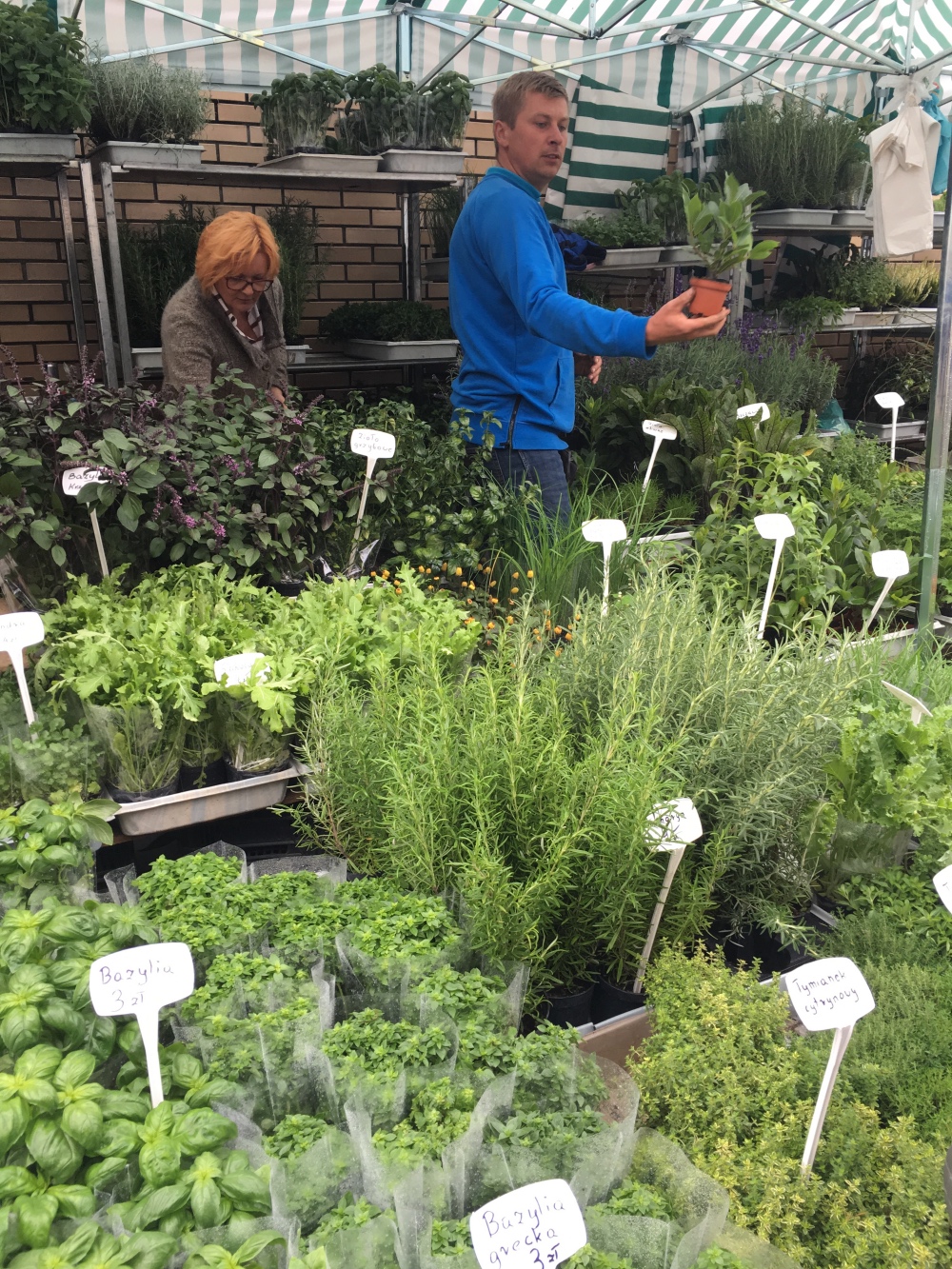
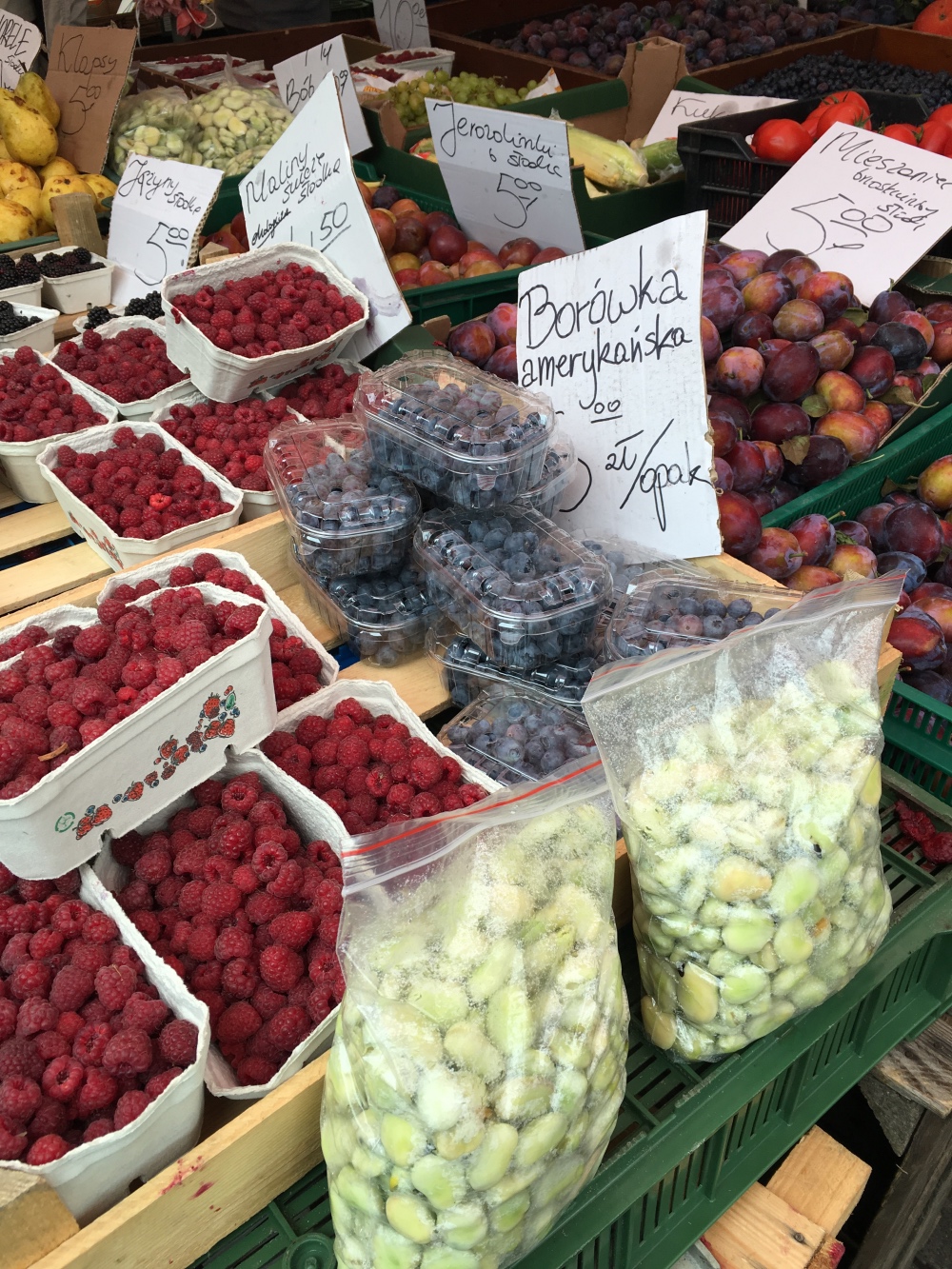
Still referred to as a market by some locals, but in reality a shopping mall albeit an interesting one, Hala Koszyki is a relatively recently refurbished new kid on the block. Its inside shops, bars and restaurants are especially busy at weekends.
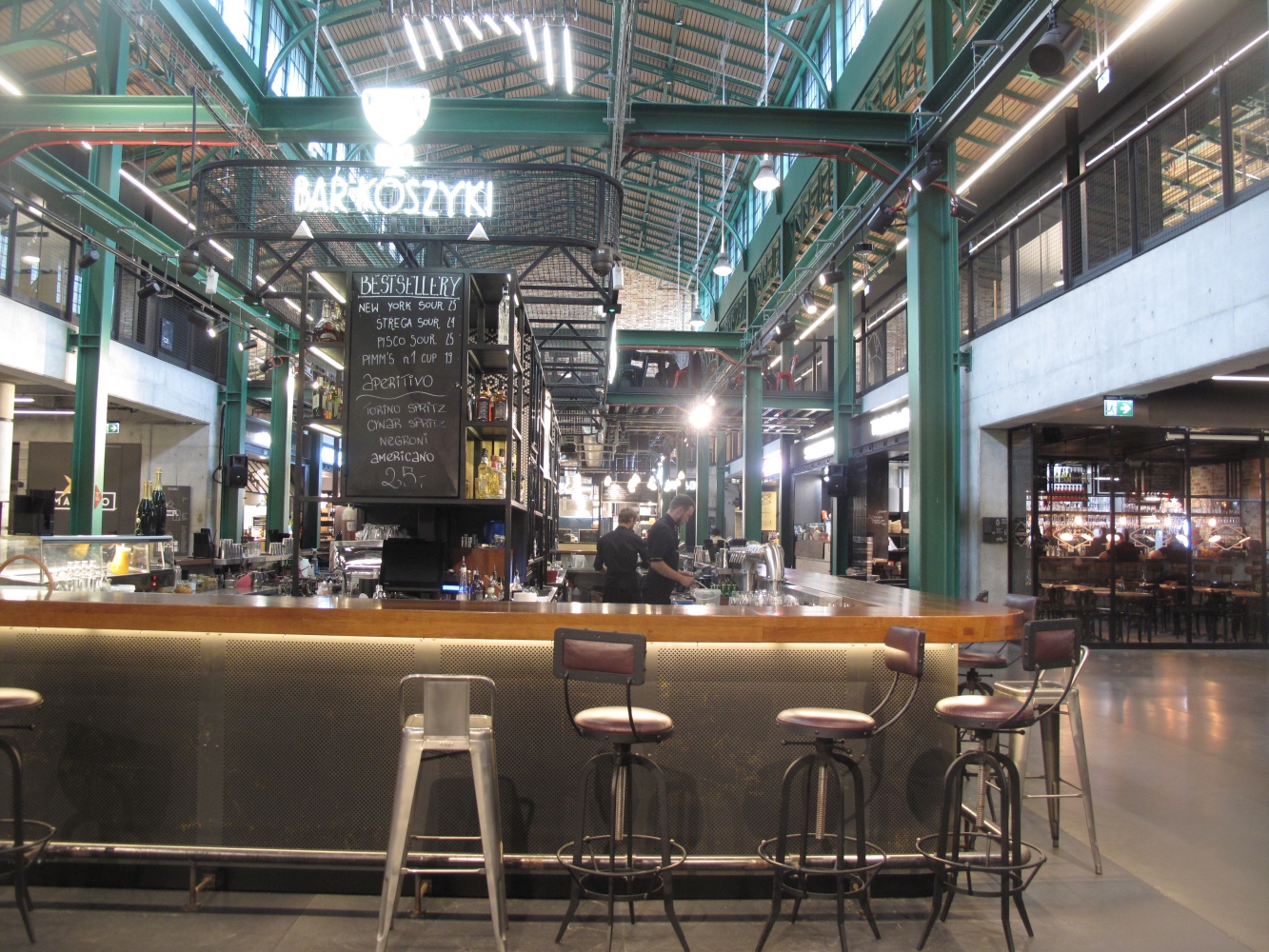
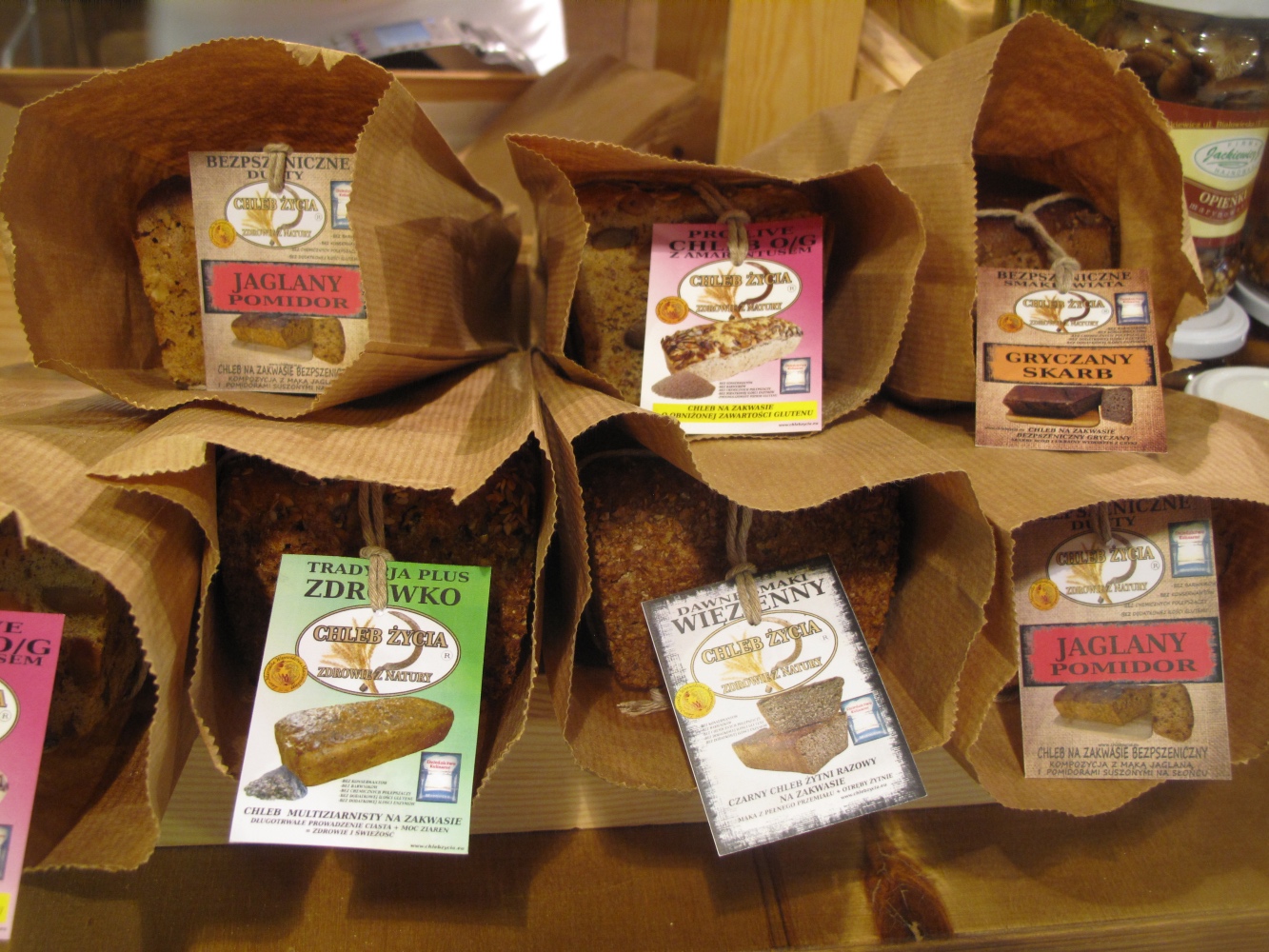
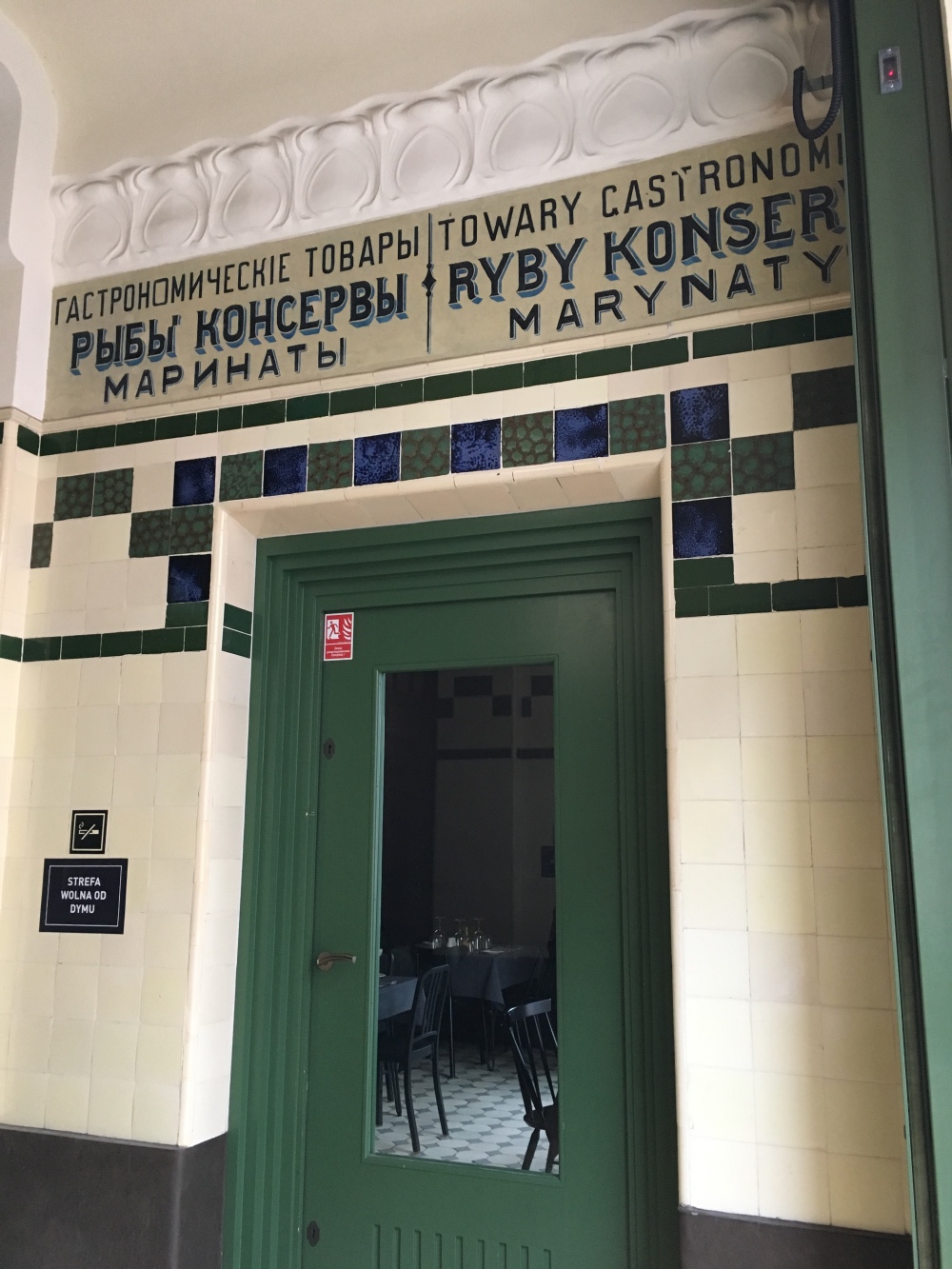
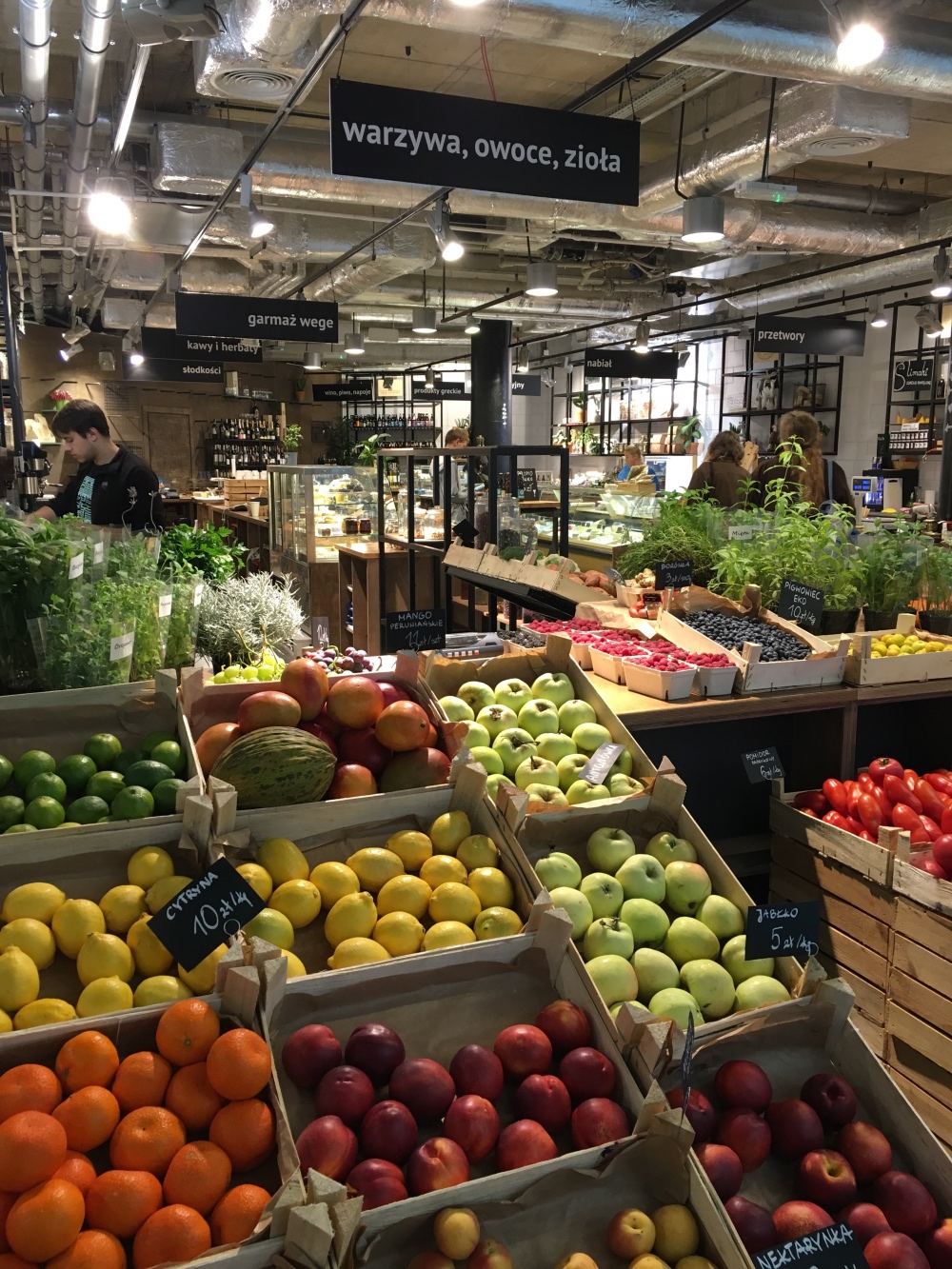
And, a short car drive from the city centre is the Majlert Farm Shop with its glorious, vivid piles of fresh vegetables. Its irresistible displays, and generous samples are understandably appealing.
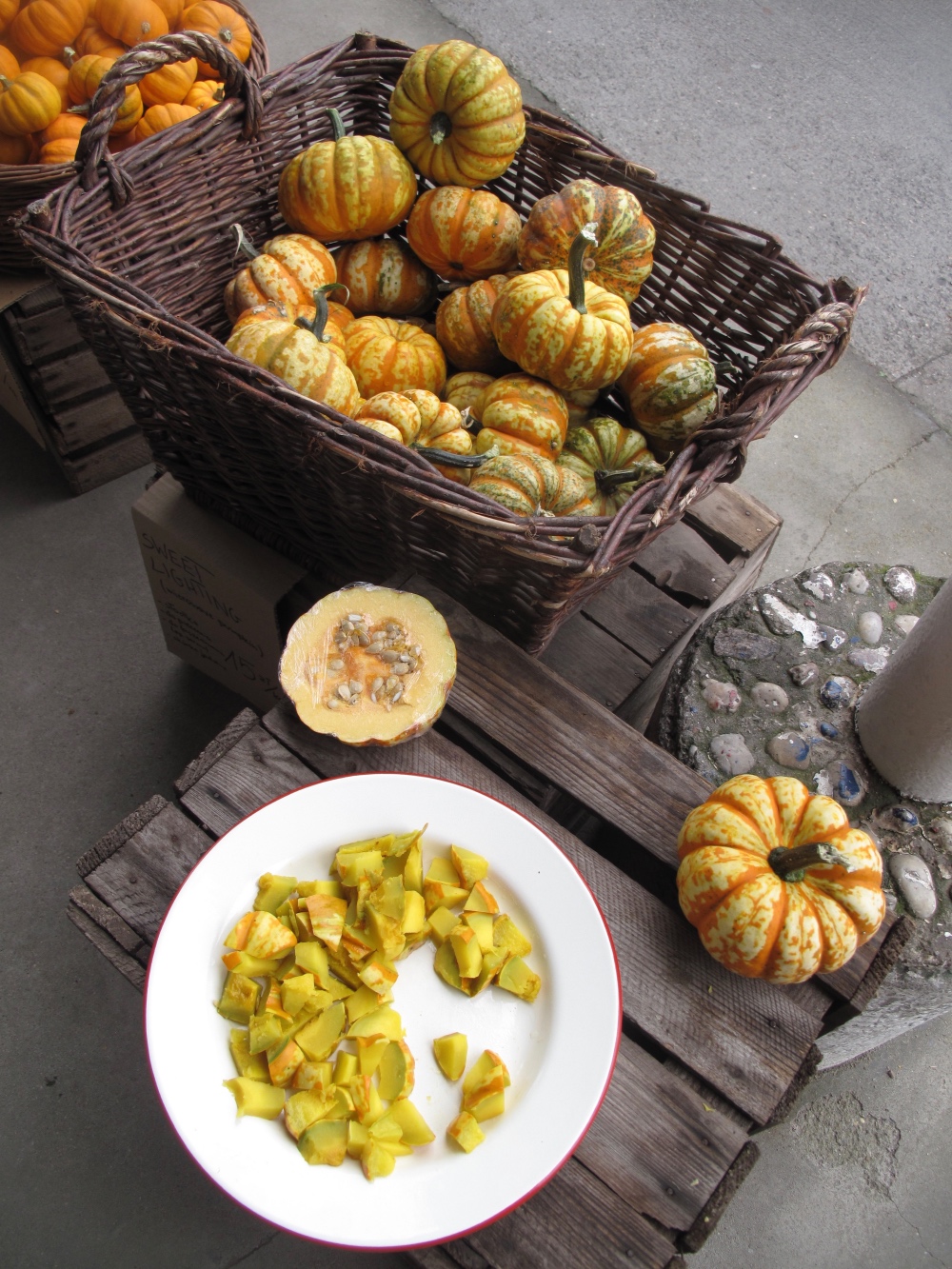
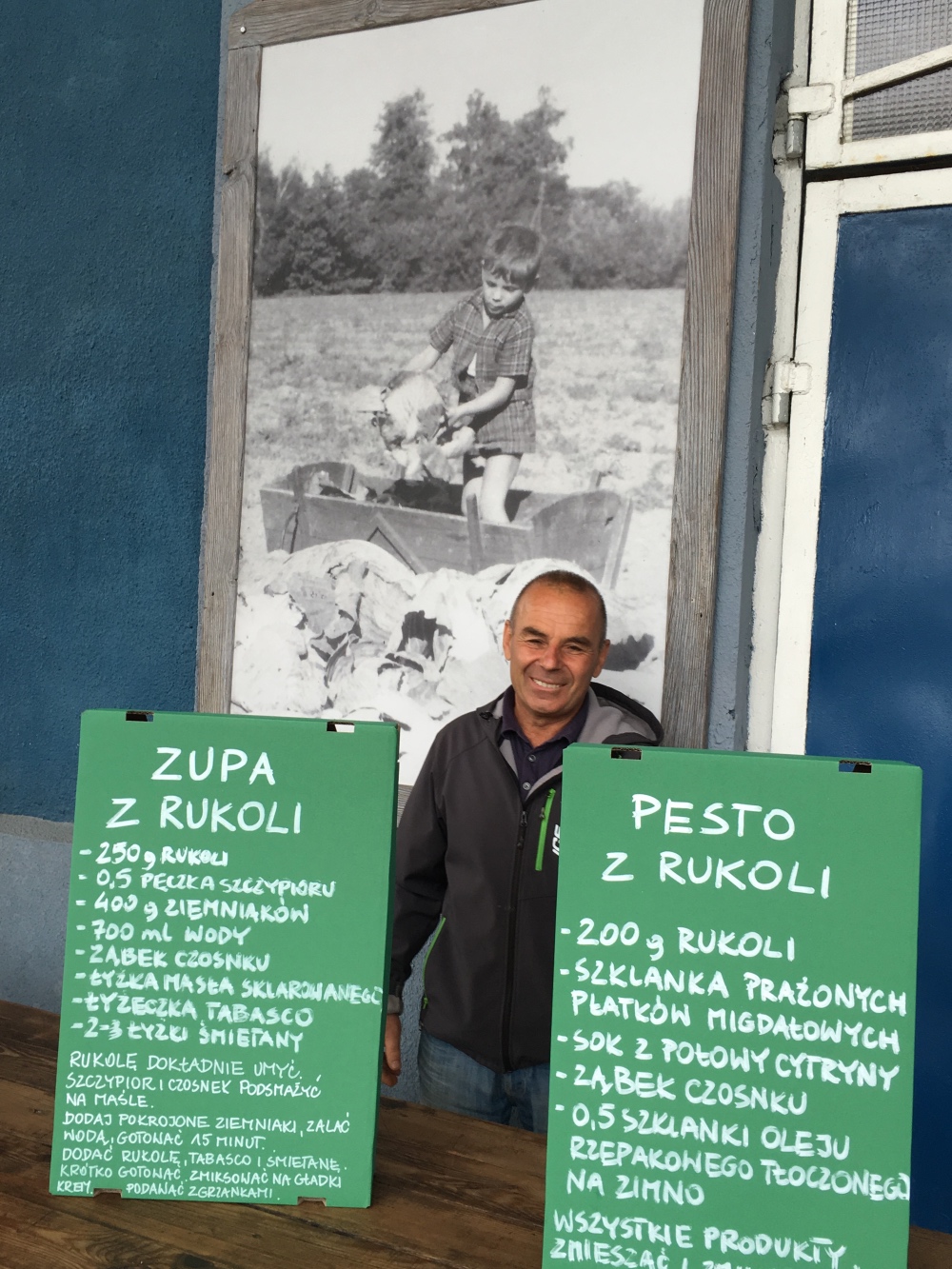
Ludwik Majlert used to sell only wholesale, but as the city of Warsaw grew, and more people asked for just 1-2kg of produce, he opened a shed for retail sales. 90% of the produce he sells is from his 8 ha of open fields, with their few poly tunnels, and the rest comes from neighbouring farms. For instance at present, edible chrysanthemums – previously unknown to him - are all the rage, and they certainly would have been a surprise to his grandfather, who was known for his traditional white asparagus.
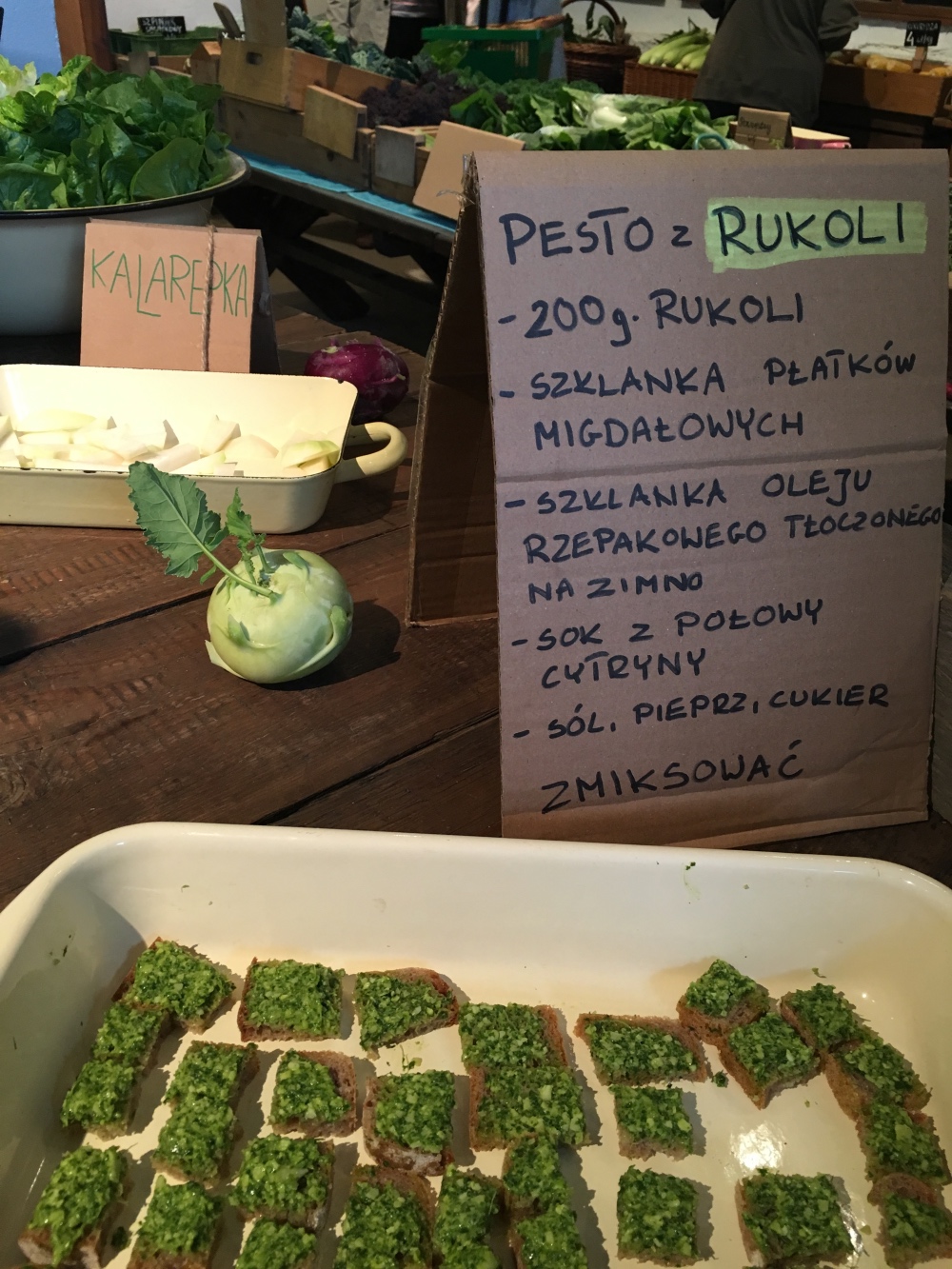
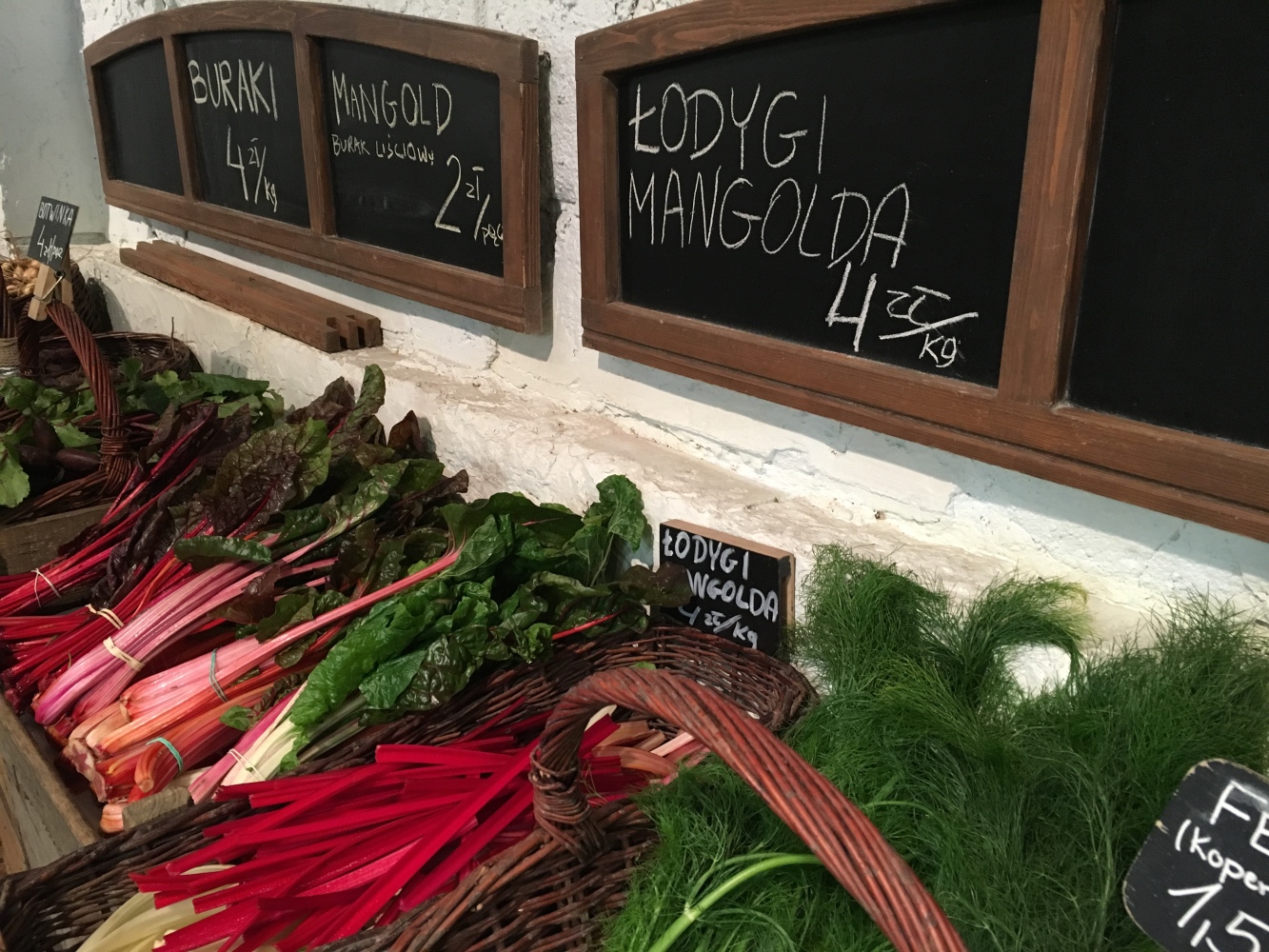
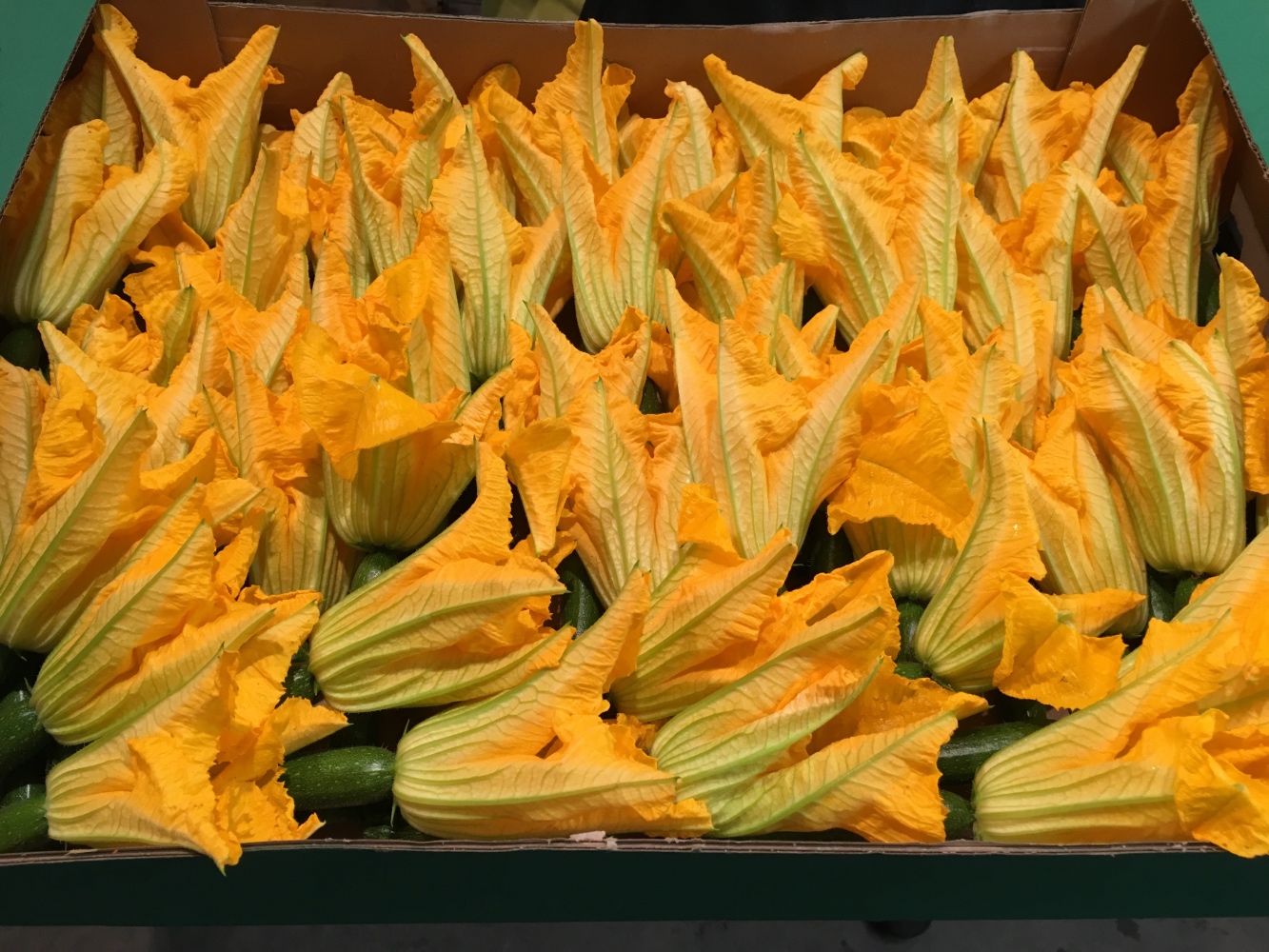
Once a year, the farm runs an Open Fields Day, based on an old tradition whereby large houses used to allow locals to access their land and help themselves to any vegetables that hadn’t been harvested. These days, Ludwik opens up his fields, and people from the city arrive with wine and picnics, help themselves to whatever produce has been left behind and have an enjoyable day out. Ludwik ends up with cleaned fields and the knowledge that he’s helped people who don’t have daily contact with the land to understand where their food comes from.
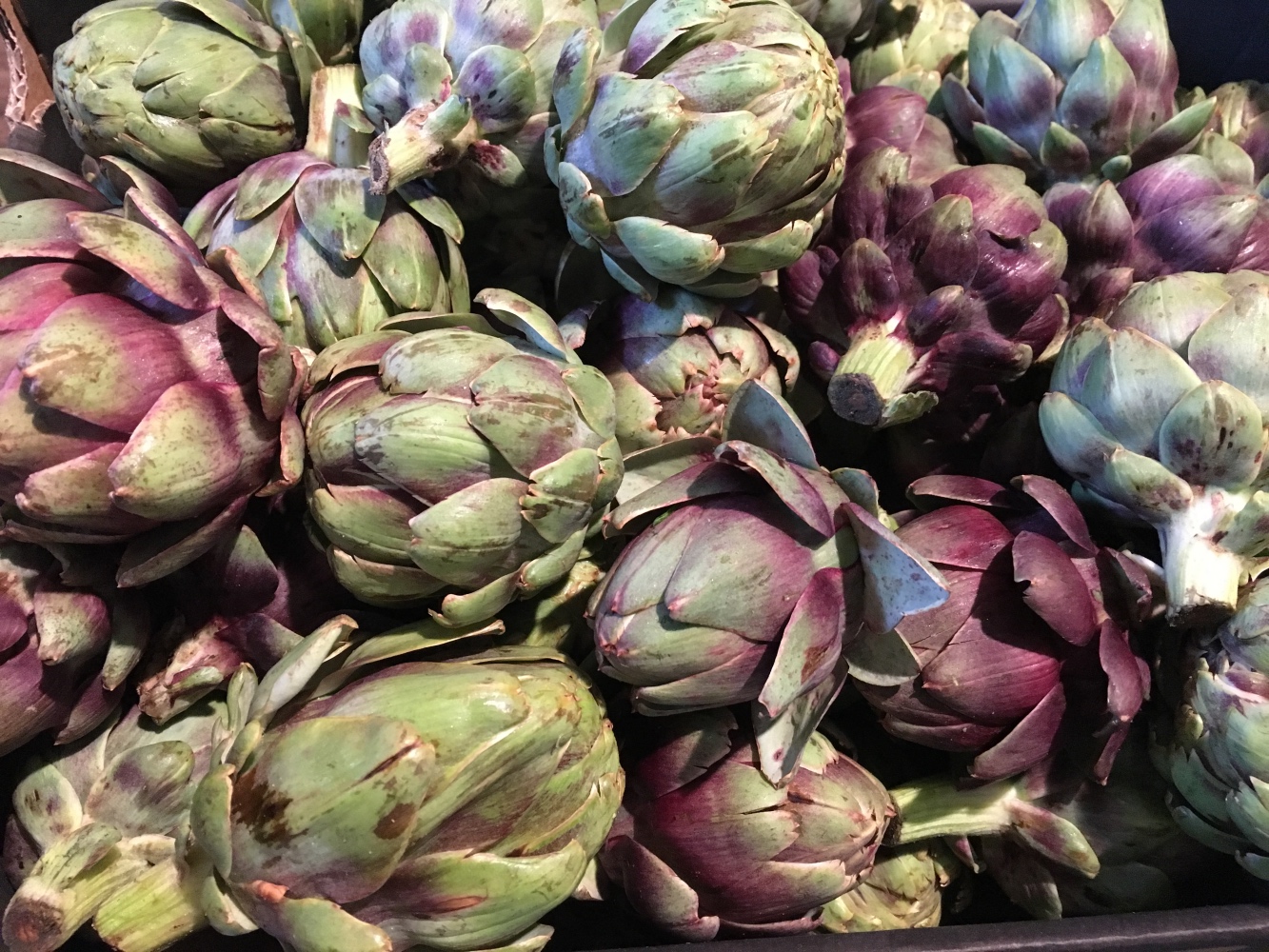
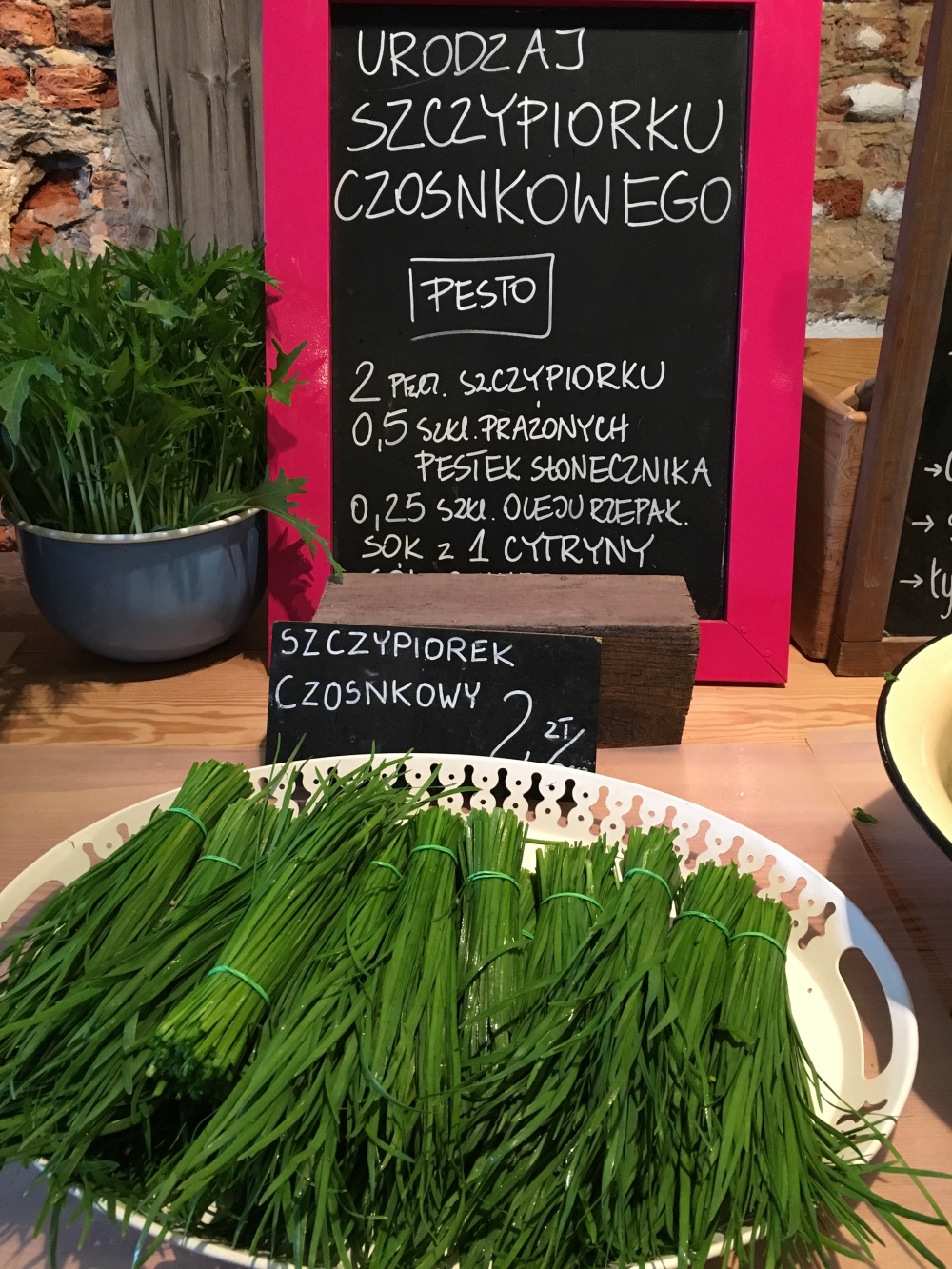
I don’t know where the team at Kieliszki na Hożej buy their produce, but they know what to do with it. Offering different lunch deals, sometimes a dish of the day, and sometimes a selection of small plates with a glass of wine, it’s an attractive midday stop. The wine list is predominantly French and Italian with a number of Polish wines, and helpful staff. I had lunch here with the delightful Monika Biedrzycka (@monaway on Instagram) who was very keen to show off some of her Warsaw favourite places.
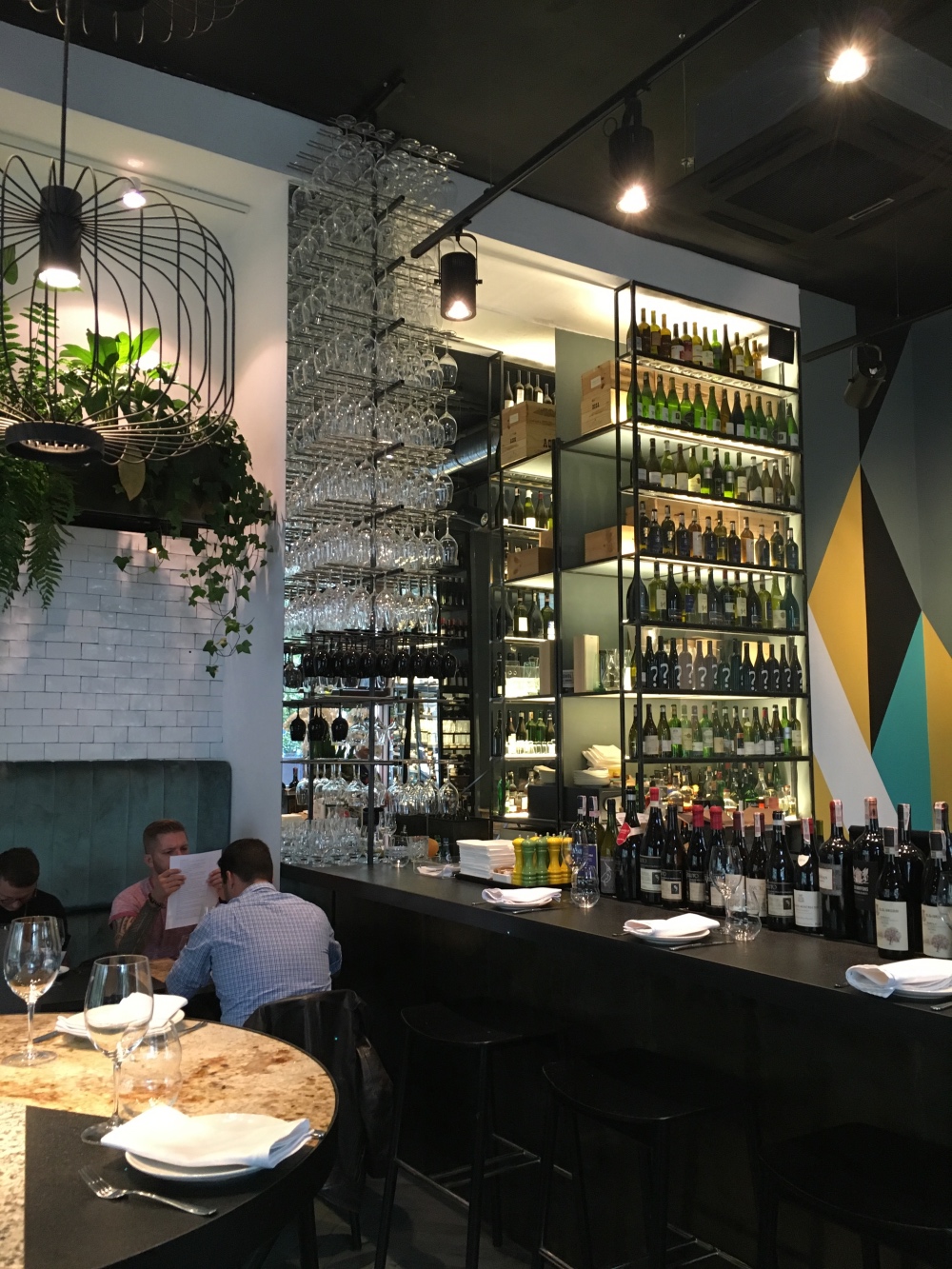
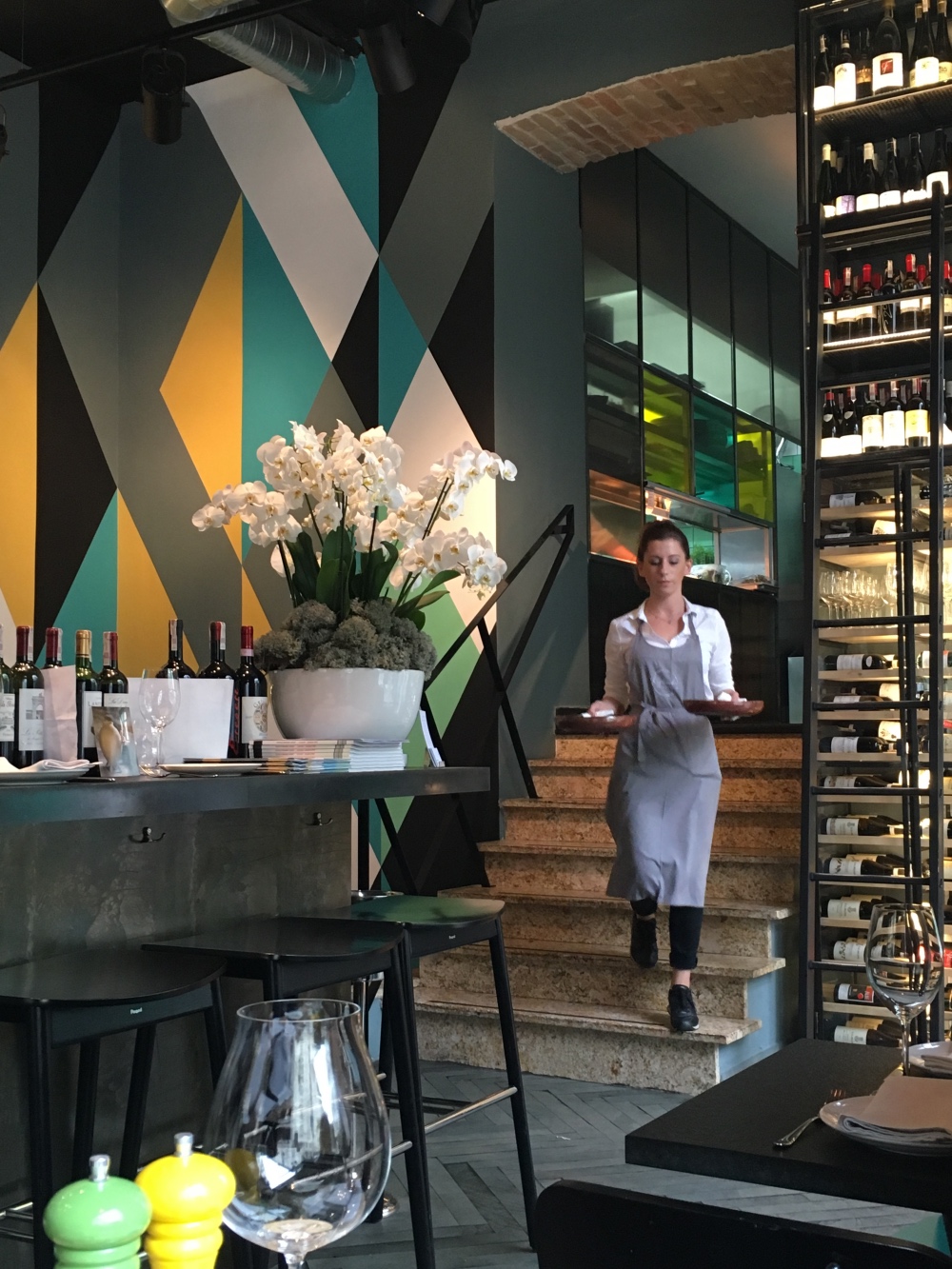
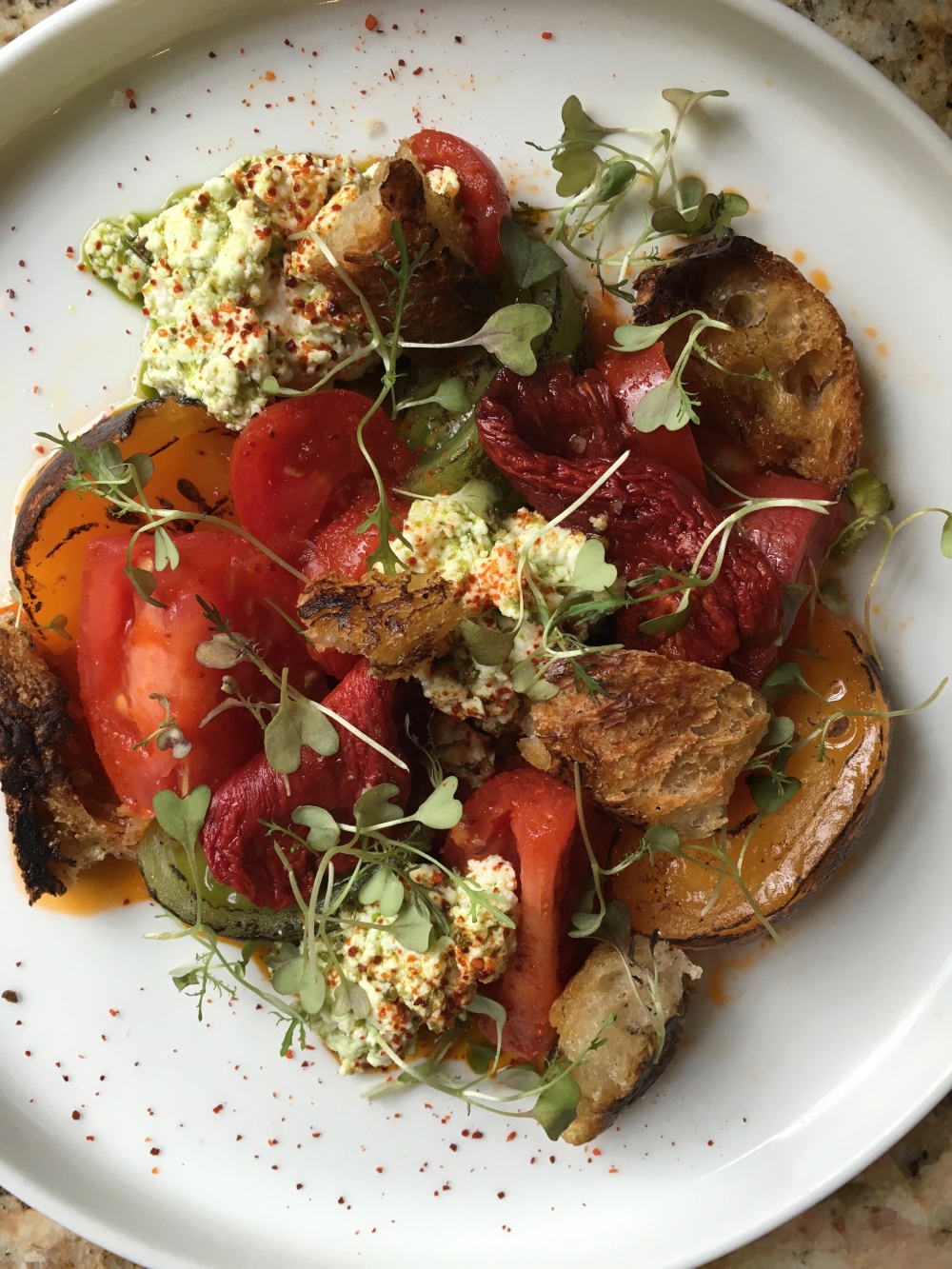
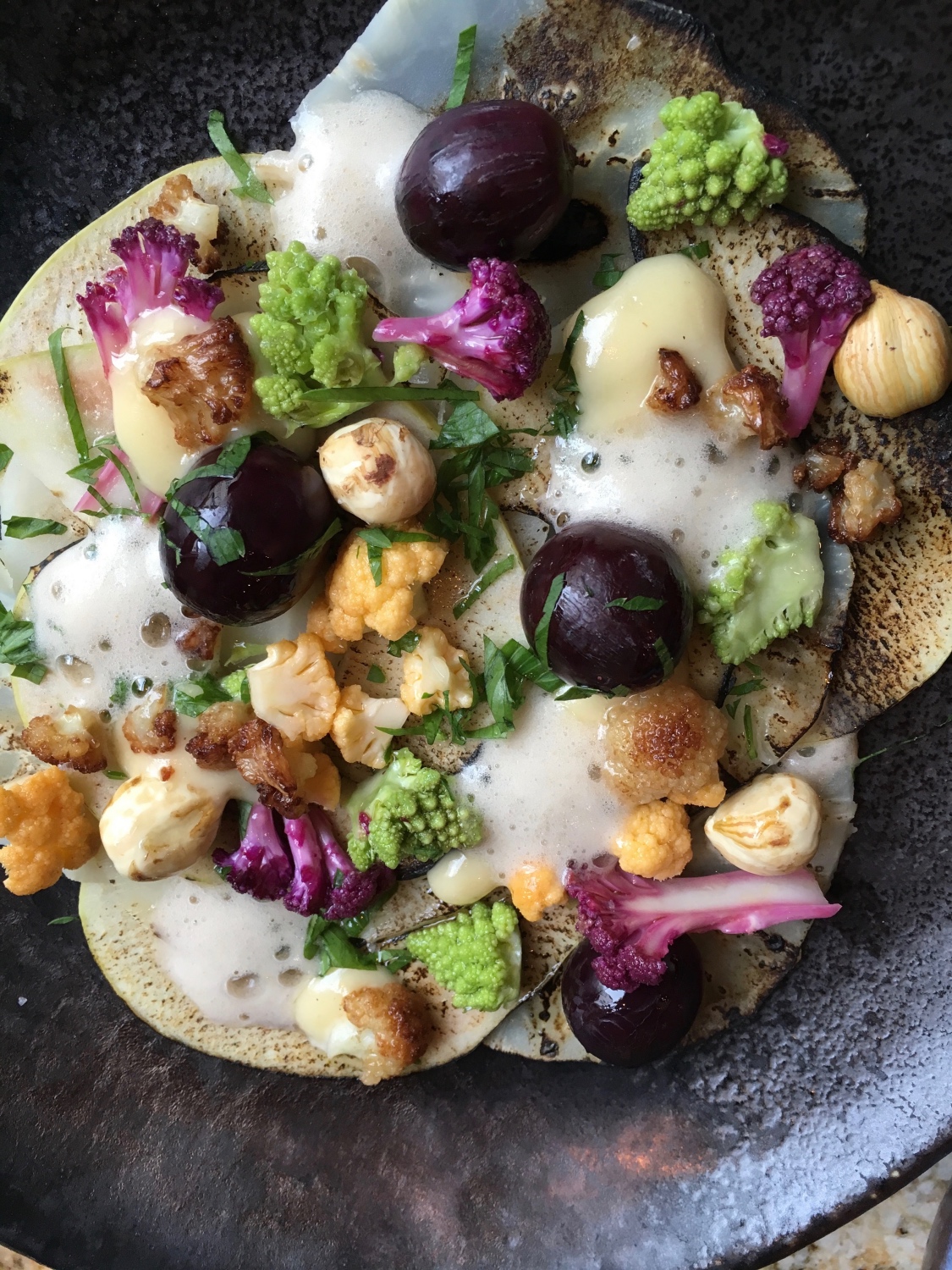
Which is why we stopped off for a drink on the way to dinner at Solec 44. (Note that this restaurant closed in December 2017). It was Aleksander Baron’s restaurant, who was described by several people I spoke to as the “enfant terrible” of Warsaw food. He’s clearly held in deep affection and there’s much excitement as to what he’ll do next. Keep your eyes peeled.
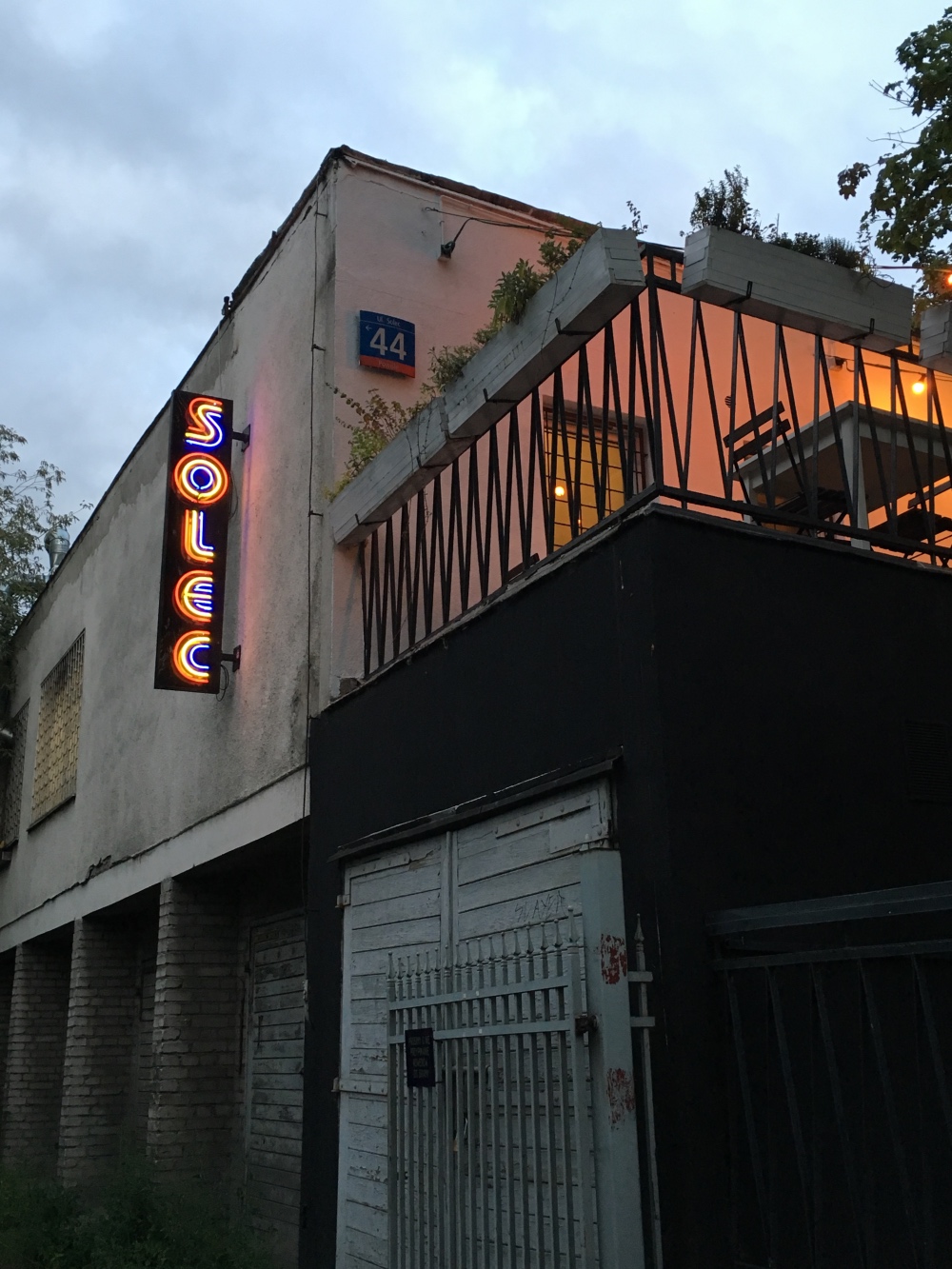
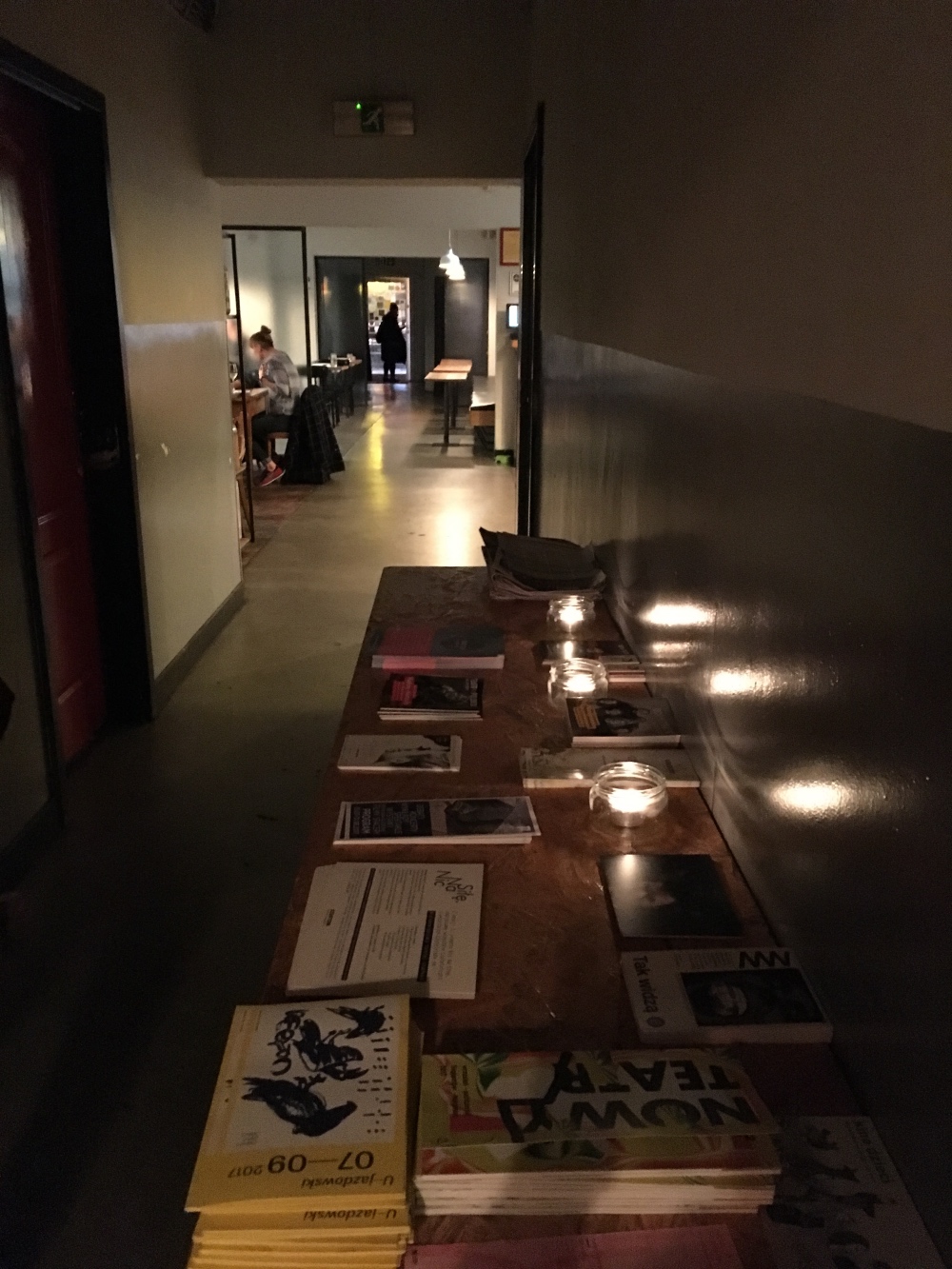
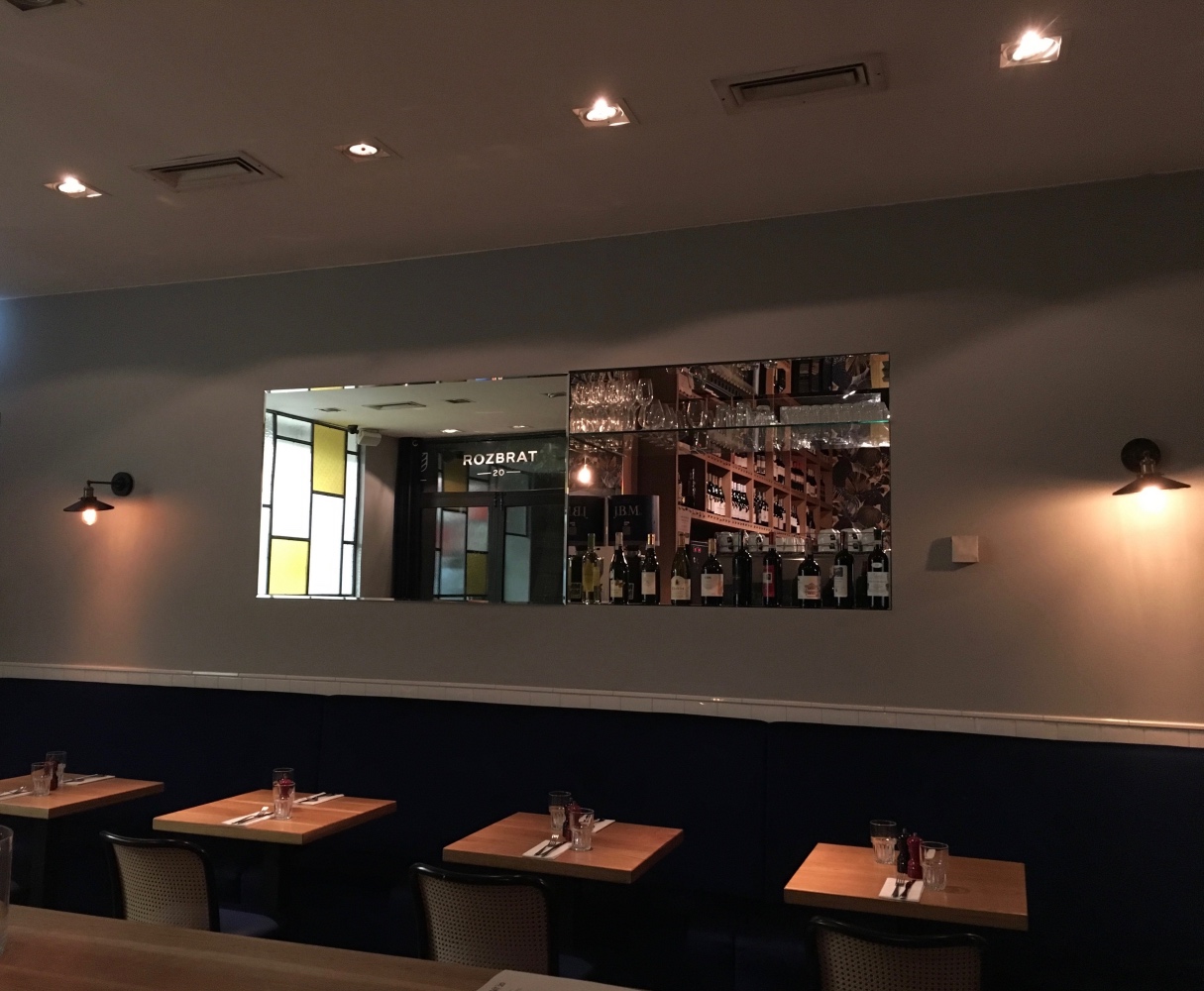
Rozbrat is still open and raved about by the food enthusiasts in Warsaw, so of course, Monika insisted we had dinner here. At times, it borders on the theatrical, with lots of liquids being poured over beautifully assembled collections of ingredients, but it all tastes great and is an enlightening lesson in Polish flavours. For example a dish of bream, cucumber and pineapple includes bison grass vodka.
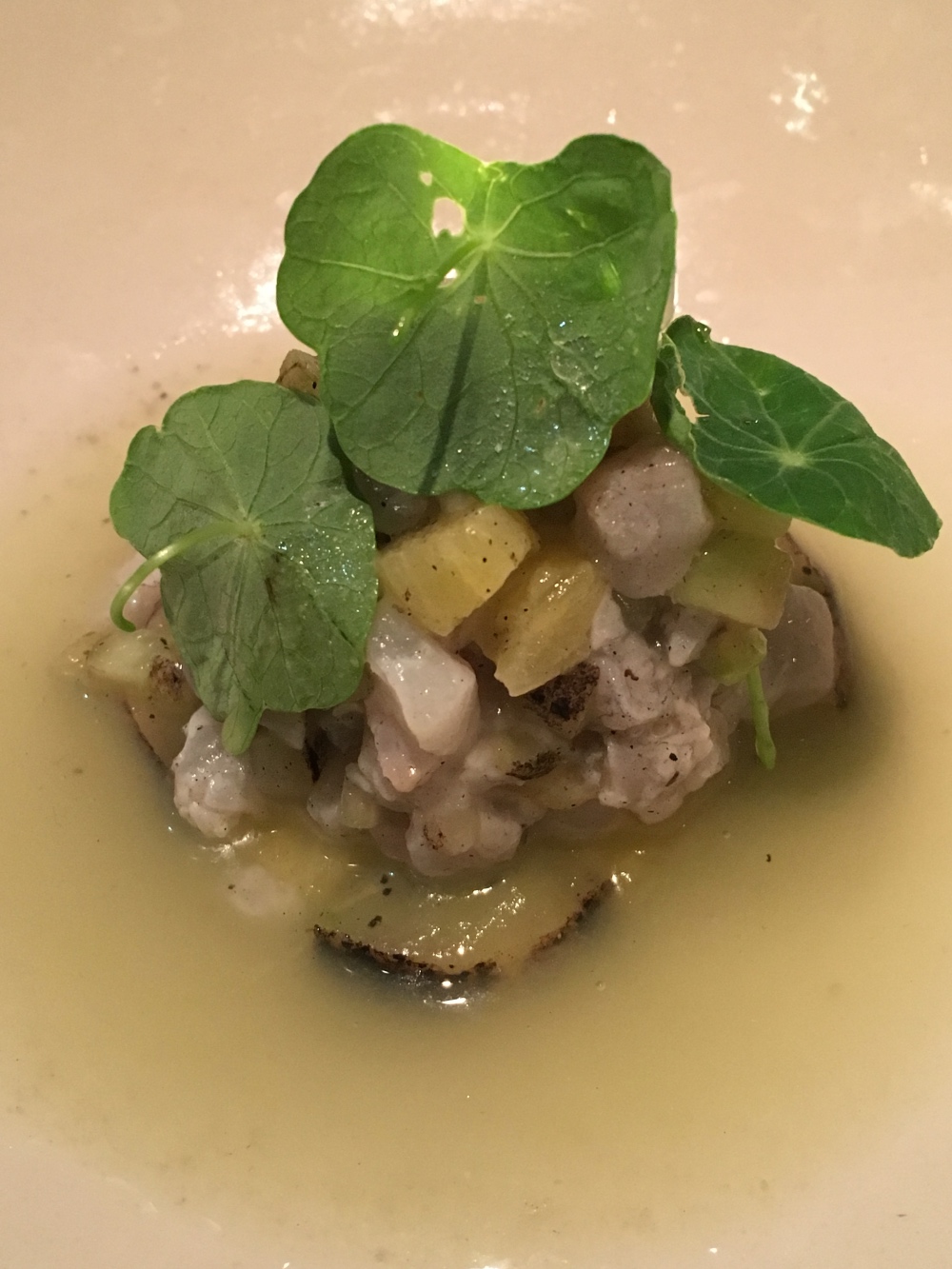
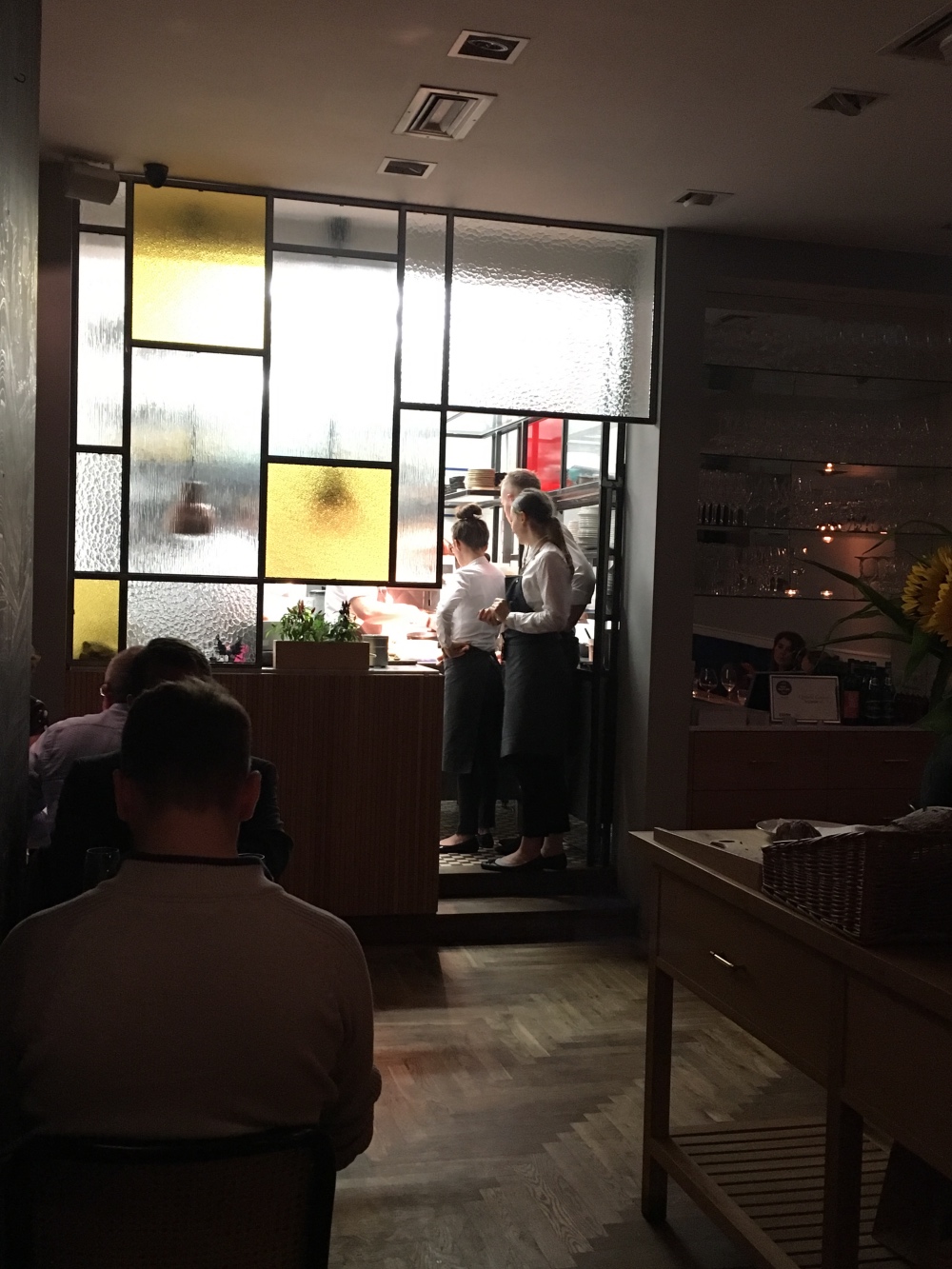
My far too brief visit ended a short distance from Rozbrat, with a lunch at Dyletanci. Described as a restaurant, wine shop and wine bar it is owned and run by Maciej Sondij who is a wine expert and maker. He wanted to create somewhere with great food, a selection of interesting wines, music and lots of fun. He certainly has. Oh, and he started life an as architect so the space is simple, casually elegant and comfortable. I loved it and would go back in a heartbeat.
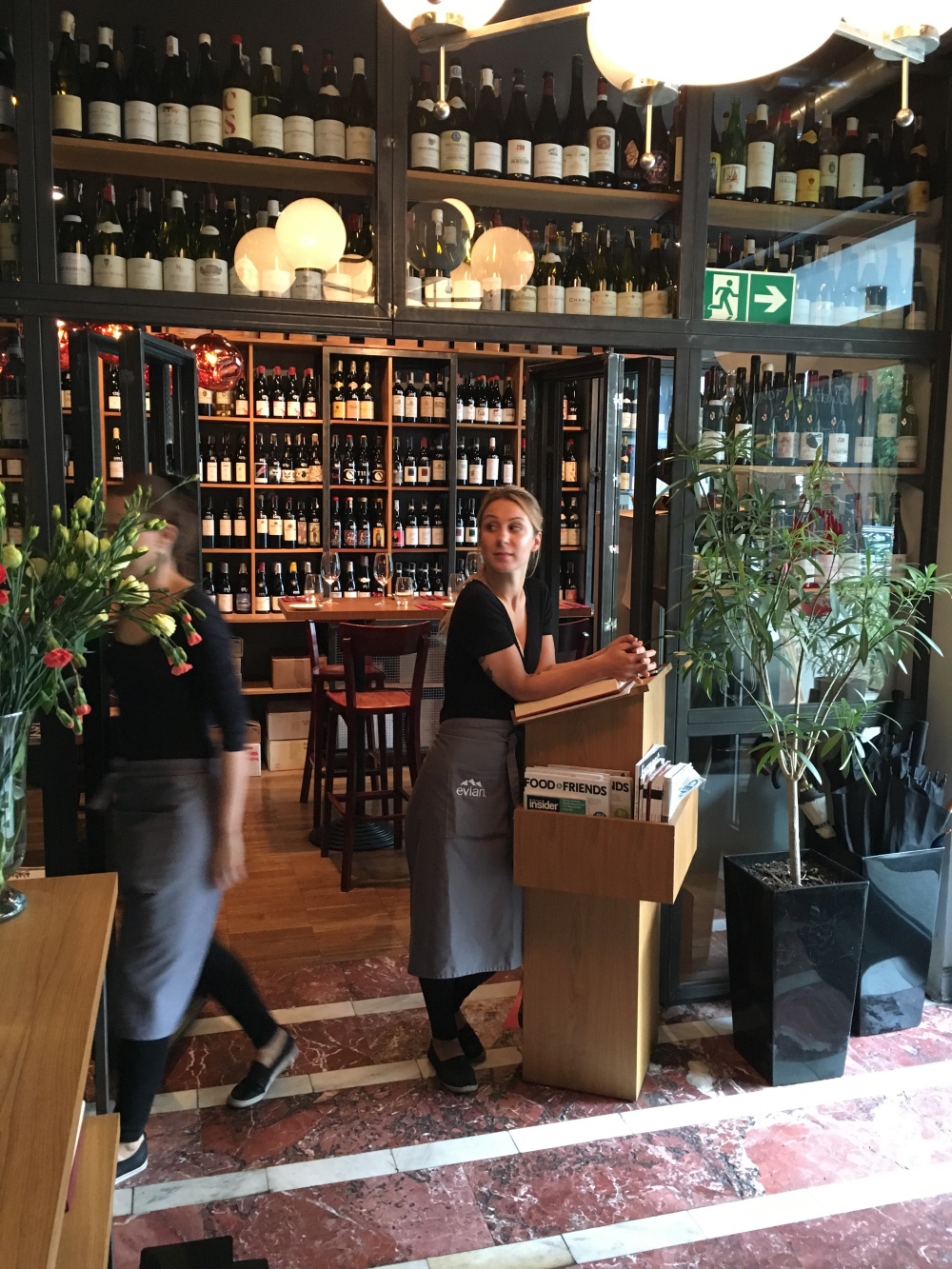
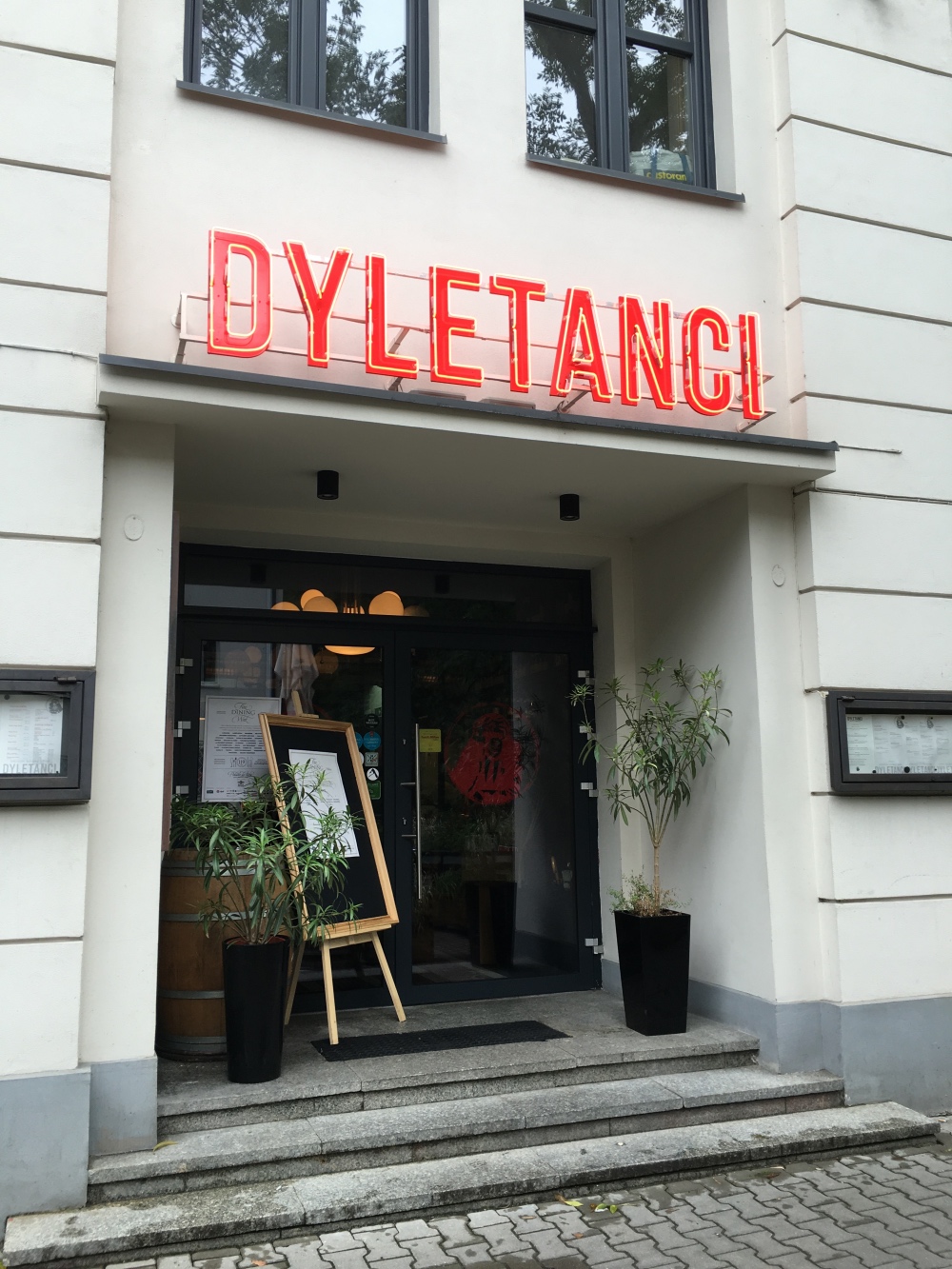
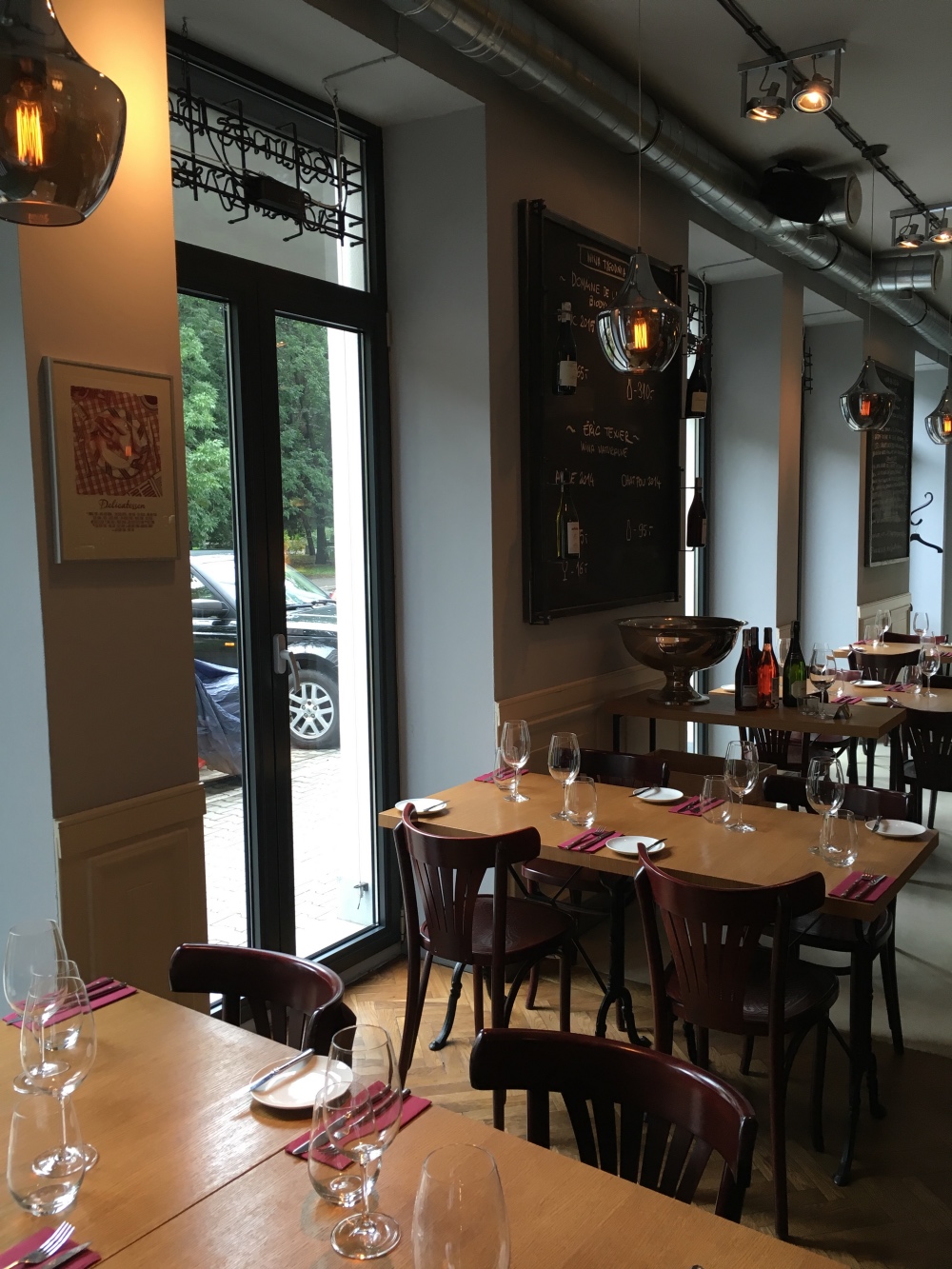
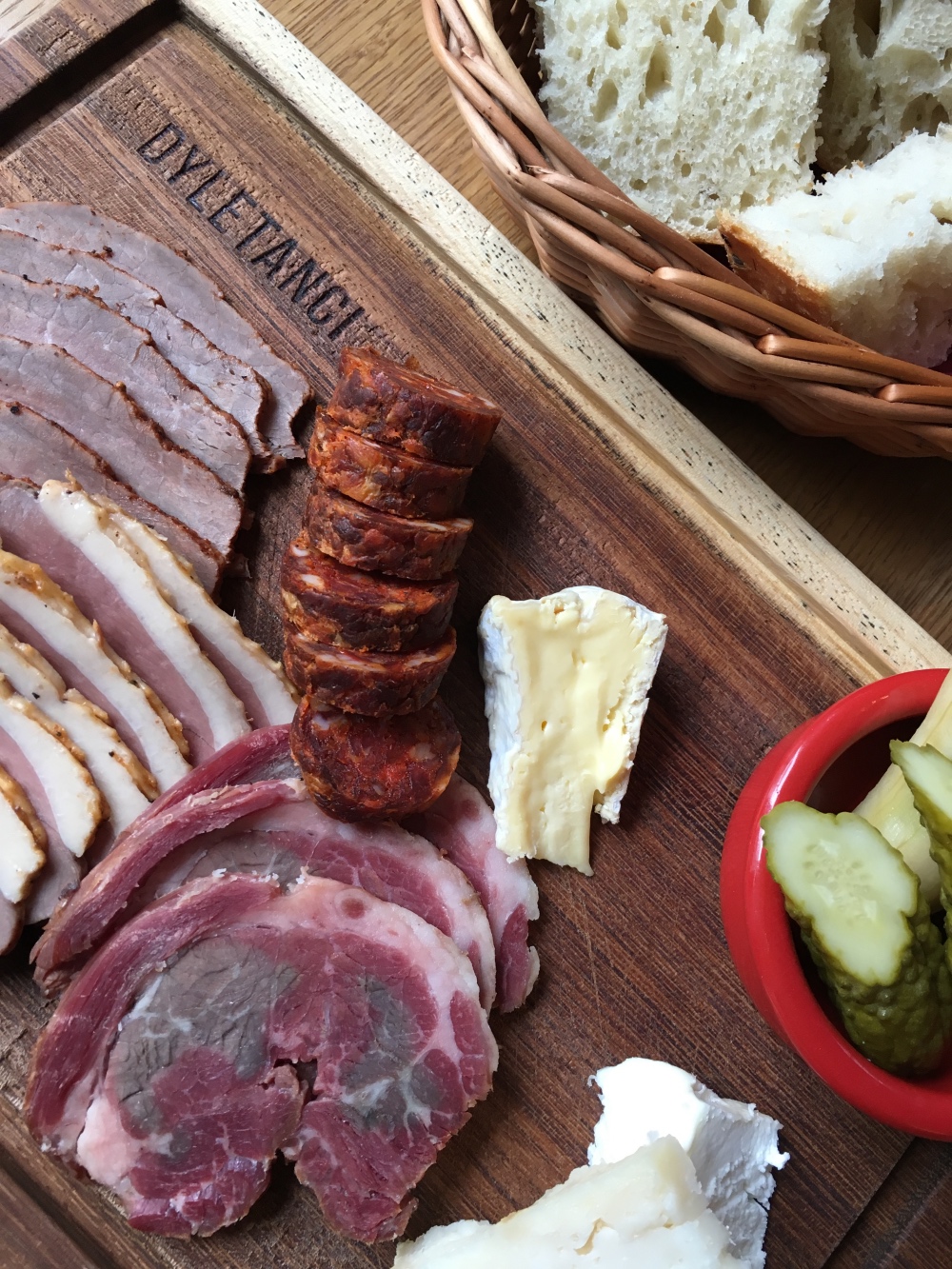
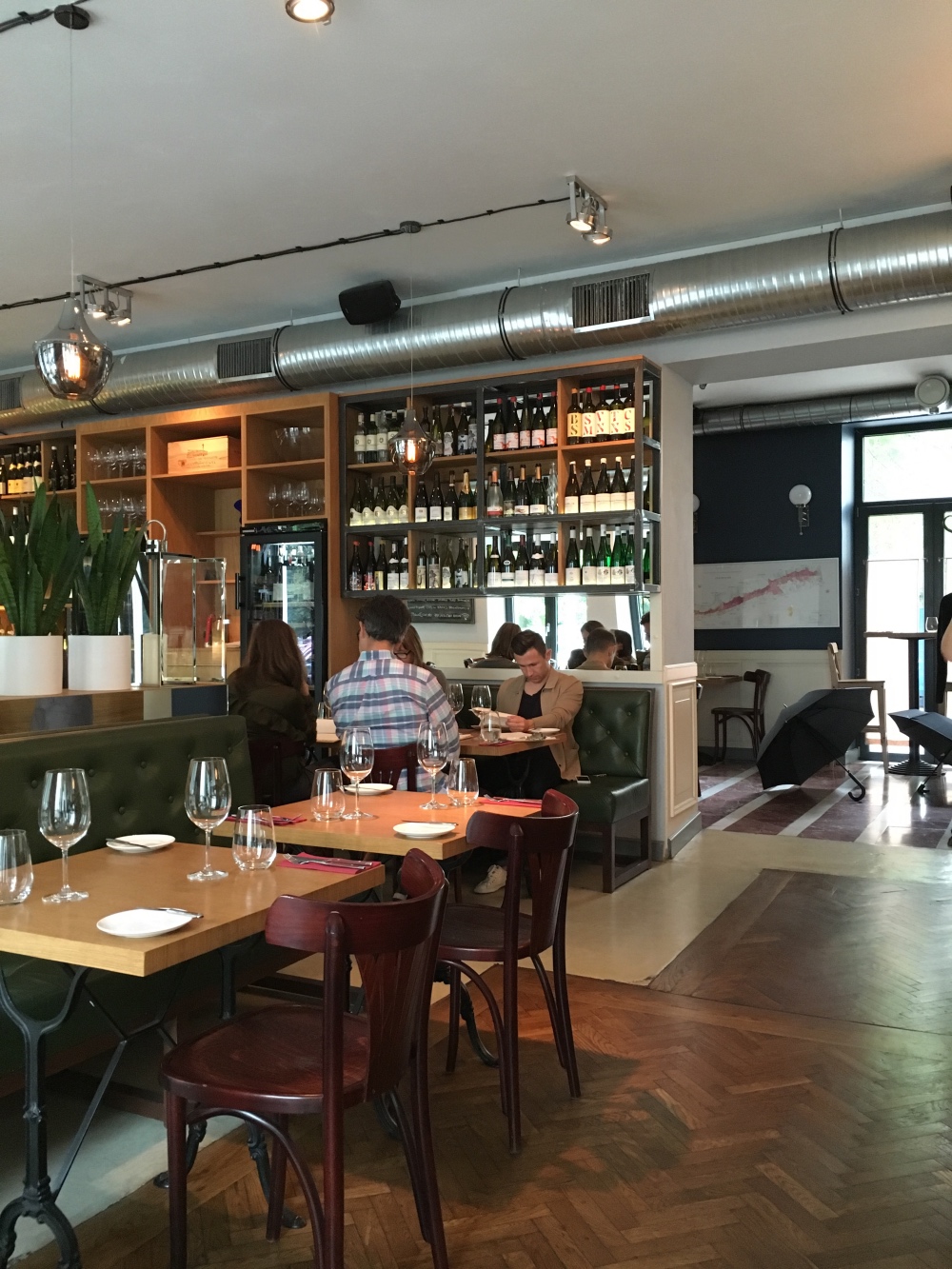
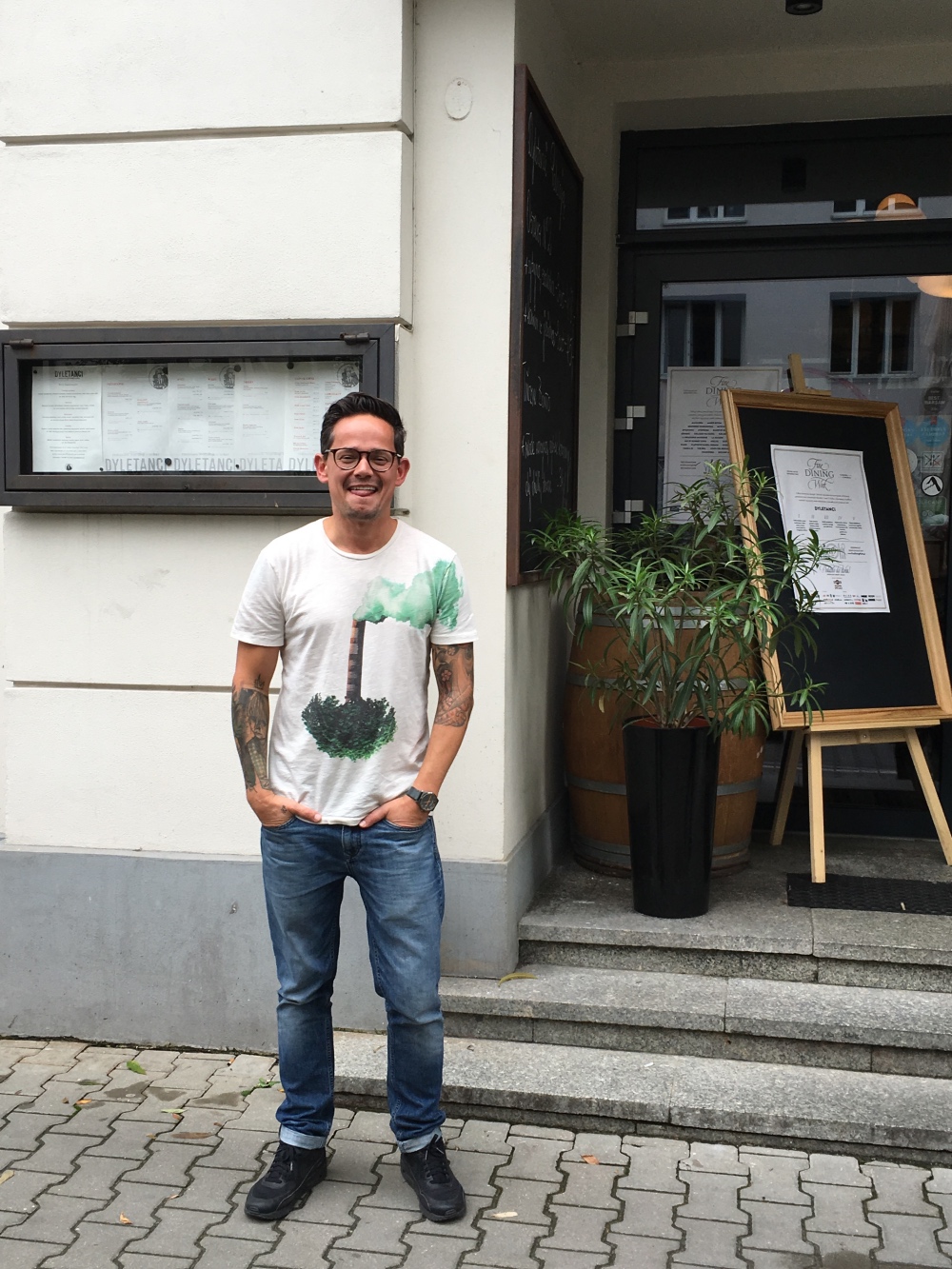
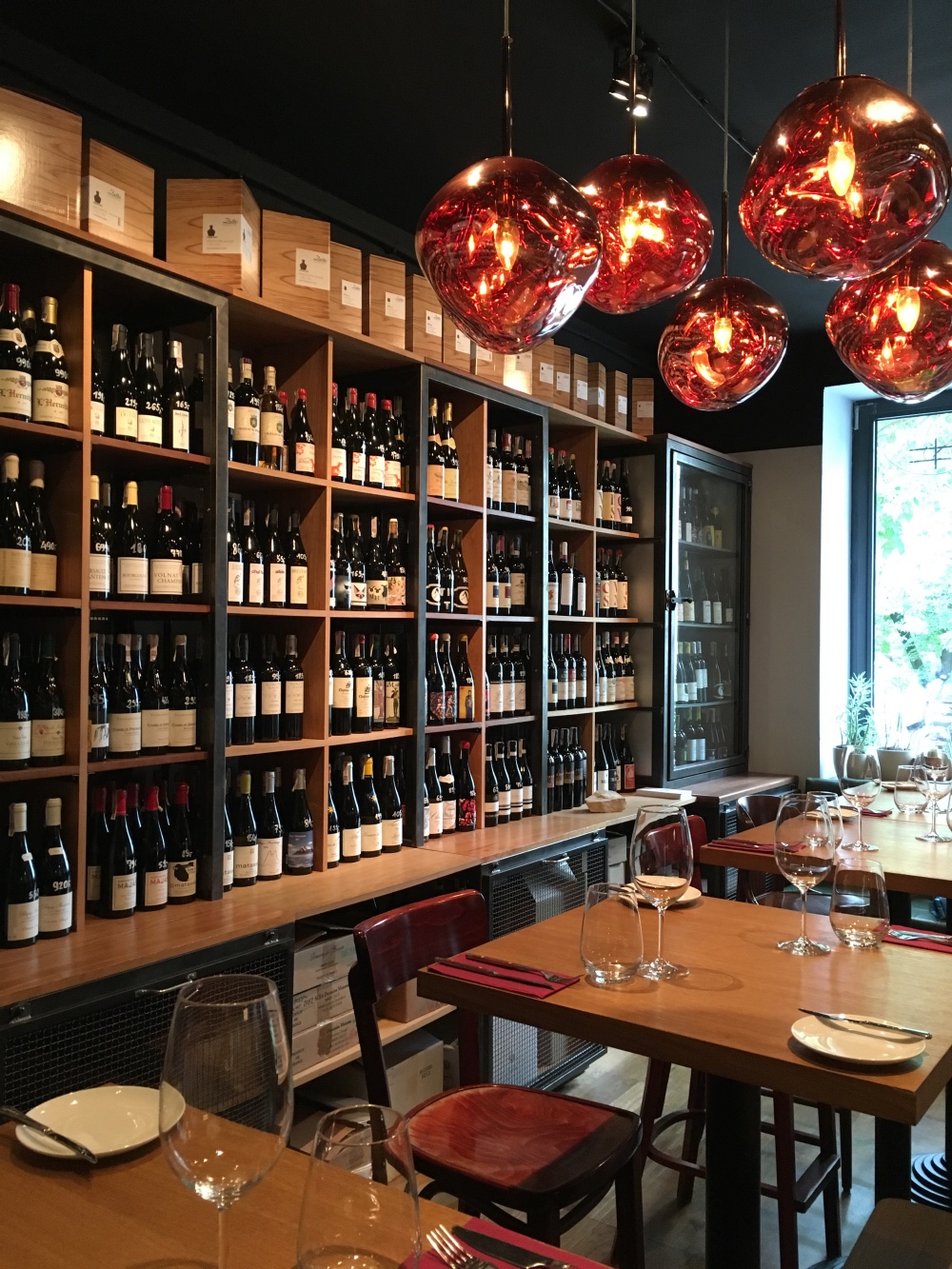
As would everyone I know who’s been to Warsaw recently and who has returned singing its praises. I’m not surprised, and I didn’t even get to a Chopin concert. I truly can’t wait to go back.
My trip to Warsaw and my stay at the H15 hotel http://www.h15boutiqueapartments.com/en/ was courtesy of the Warsaw Tourist Office and Warsaw Fine Dining Week.
This post was amended on 23 January 2018 to include news of Solec 44’s closing.
